




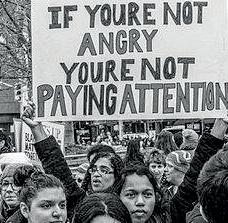

ted as next year’s Student Living Officer after having worked for a year in the role. 60.6 per cent of all votes cast went to them (1,229 out of 2,027).
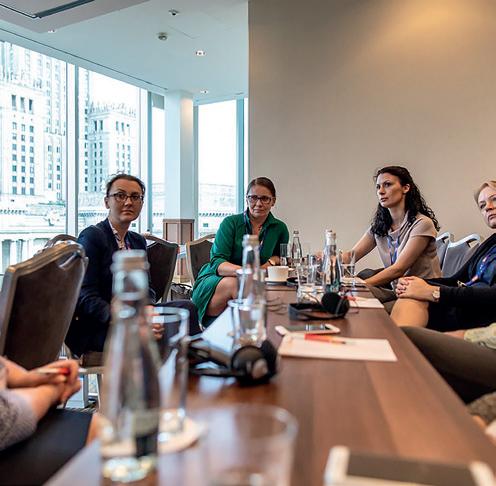
ON the 14th March, the results of the Students’ Guild elections for the 2025/26 Guild Officers were announced with 3,043 students casting 19,049 votes over four days — a 9.7 per cent turnout from the student body. The six positions that were up for election were Guild President, Education Officer, Societies and Employability Officer, Student Living Officer and Sports President.
Seb Racisz collected 51.5 per cent of the votes for Guild President at 1,304, meaning he narrowly won the presidency over Kobby Boakye-Dankwe’s 1,141 votes. In his campaign, Seb mentioned that his most crucial goal will be to continue amplifying student voices, improving transparency and making the union more accessible and responsive to the needs of all students.
Elsewhere, Francis Steptoe was elected from the three Education Officer nominations, with 828 of the first preference votes going to him (38.5 per cent) and Gemma Veal will be the next Societies and Employabilities Officer, collecting 1,292 of the 2,057 votes cast in the ballot (62.8 per cent).
Kira Brookes has been re-elec -
The role with the most nominations was the Communities and Equality Officer. Five candidates campaigned for the role with Rose Arhin being named next year’s officer. After first preferences were taken into account, RON (Re-open Nominations) was excluded followed by Zach Smith, Kady Byrne and Dougie Barber respectively. After this, Rose had 853 votes against Olivia Williams’s 712, meaning Rose won.
Finally, there was only one candidate for Sports President, Chloe Whitworth, who won 1,850 votes against 151 who voted to re-open nominations. This means Chloe will be next year’s Sports President, falling back into the role after a year in post.
Questions have been raised as to the low turnout of voters in the Students’ Guild elections. Exeposé launched a journo request for students as to whether they voted in the elections or not, and their reasons for this decision.
When asked the reasons why students didn’t vote, some stated it was “completely pointless” and “the candidates were too woke and making points I don’t believe affect education but personal beliefs and aims.”
Many also discussed the Guild website as being part of the problem with one stating: “I tried to
vote but I found the website very difficult to navigate as I was flicking between agendas and voting pages. I also found it hard to find much out about the candidates and didn’t feel strongly about any of them.”
Some of the respondents mentioned that they didn’t believe it was important to vote in the elections, with some stating: “they do nothing. They are people who have pens and paper who get paid £26,000 for the privilege. And holidays. Sorry, I mean ‘educational’ trips abroad.” Another expressed their concerns about the election process itself, saying “the Guild Officers don’t do anything meaningful and they’re all the same. Plus they’re not allowed to mention specific policies they’d employ in their manifestoes. The Guild blocks them from doing anything but be faces on the DH1 walls.” Speaking on recent society news, one student also said: “everyone I have spoken to about the elections seems to feel completely hopeless that anything will change, especially in light of recent events with Freedom Society.”
Despite this, many students believed it was important to cast their votes. On the importance of the vote, one student said: “It’s about who will represent us and what they can do for us,” with another saying “voting gives students the power to influence future decision making on campus by selecting canidadates who will make
the changes that students want.”
A spokesperson for the Students’ Guild said: “This year, we did things differently. Change Week created more ways for students to shape their experience — whether through voting, sharing feedback in the Big Guild Survey, joining campus activities or celebrating changemakers at our Fun Fair.
“9.72 per cent of students cast 19,000 votes this year, ensuring student voices shape Guild decision-making. Your Elected Officers work throughout the year to drive change on issues that matter to you — improving assessments, making campus more accessible, advocating for better housing, and running awareness campaigns like LGBTQ+ and Disability History Month. Their work is shaped by student voices, advisory boards, research and direct collaboration on projects like making campus food more inclusive.
“While we always want to see more voters, we know that representation is about more than just elections to ensure your voices are heard throughout the year. To do this, we know our representation model needs to evolve. That’s why we’re creating new paid opportunities for students to represent their communities in more diverse, relevant and impactful ways. Change is coming, and we’re excited to share more soon.”
Editors
Print: Gracie Moore and Amy Rushton
Online: Callum Martin and Katie Matthews
Print Deputies: Charlie Gershinson, Rosie PetersMcDonald, Agata Koralewska
Online Deputies: Emily Roughton and Amberly Wright editors@exepose.com
News Editors
Print: Isabella van der Putten and Nina Exton
Online: Anvi Deshpande news@exepose.com
Features Editors
Print: Honor Borley and Bella MacLusky
Online: Michelle Chung and Jo Howard features@exepose.com
Climate Editors
Print: Charlie Gershinson Online: Harriet Ball
Comment Editors
Print: Tom Richardson
Online: Sophie Zoltowski comment@exepose.com
Satire Editors
Print: Audrey Alvey Online Caspian Davies
Lifestyle Editors
Print: Anna Spencer and Katie Roberts
Online: Jasmine Payne and Imogen Pearey lifestyle@exepose.com
Arts + Lit Editors
Print: Judy Dodd and Kayleigh Swart
Online: Emily Sara Rizzo and Owen Peak artsandlit@exepose.com
Music Editors
Print: Harry Morrison and Brooke Taylor
Online Zandie Howells music@exepose.com
Screen Editors
Print: Pollyanna Roberts and Charlie McCormack
Online Bronwyn Payne and Dumebi Jibunoh screen@exepose.com
International Editors
Print: Henry Anderson and Jed H. Gibbins
Online: Magdalena Kanecka and Annabel Jeffery
Sci-Tech Editors
Print: Ella-Jade Smith Online Daniel Grayshon sciandtech@exepose.com
Sport Editors
Print: Eloise Grainger and Ben Scott
Online: Reuben Moynihan-Case and Connor Myers sport@exepose.com
Eleanor Stewart
Social
Finance Executive: Rhys Thomas




@exepose
@exepose facebook.com/exepose issuu.com/exeposeexeter
WE'VE reached the final issue of term two and as we reflect on an eventful term and many, many hours spent in the media office, we'd like to say thank you to our writers and editors. Not only have we been nominated for nine(!) national Student Publication Association awards, but the time and effort that has gone into producing every section and helping to ensure that Exeter's students have a voice, is unmatched. Still, the term isn't over yet and we have lots of great articles in this issue if you're looking to procrastinate your deadlines for a while!
As ever, if there's an important issue at the University or in Exeter we've missed, please email us at editors@ exepose.com. In this issue, News covers confusion over University AI policy (Page 3), Exeter Cathedral's cutest design quirk (Page 3), housing shortages in Devon (Page 4) and more. Comment discusses the Democrats' lack of success in challenging Trump (Page 12), while Climate highlights Exeter's role in cutting the NHS's carbon footprint (Page 10) and Satire offers an article that was definitely not written by AI! (Page 14). Over in Exhibit, Lifestyle give us a glimpse into Spring campus fashion (Page 16) and Arts and Lit explore the whitewashing of Emily Brontë's Wuthering Heights (Page 19). Music share their thoughts on Glastonbury's 2025 lineup (Page 21) while Exetera Exetera... writer Poppy offers a creative piece exploring mental health for Let's Talk About It... (Page
24). Also in this issue, Sci-Tech explore the science of dogs' emotions (Page 29). Finally, Sport cover an event for Women in Sport (Page 30) and the prevalance of misogyny in Netflix's Drive to Survive (Page 31). If you have any questions about joining the paper, please check out our socials @exepose. We hope you enjoy reading this issue and a huge thank you to all our writers, editors and proofers!
Gracie and Amy

IRAN: A PROSPECTIVE NUCLEAR SUPERPOWER Page 8






31 VALENCIA'S FESTIVAL OF FIRE: FALLAS Page 26

UPON the geo-political conflict between Israel and Palestine, there has been a growing level of antisemitism towards Jewish students at universities worldwide, including in Germany. Since then, there have been growing calls for the German government to tackle this, to which the Federal Commissioner for Jewish Life in Germany, Dr Felix Klein, has responded by stating that “Education is no safeguard against antisemitism," showcasing his commitment to tackling the matter between students and university staff, which have been proven to show an equally damaging level of antisemitism in their workplace. However, there has also been conflicting evidence for this, with one longitudinal survey proving that 82 per cent of those interviewed agree that “Israel has the right to exist as a homeland for the Jewish people” and 86 per cent agreeing that Israel has a right to “defend itself from those seeking to destroy it." Yet, consequently, little evidence has shown that more pro-Palestinian views mean increased antisemitism.
Social science research is a weapon against poverty

ANEW study has highlighted the crucial role of social science research in reducing poverty and inequality in the MENA regions. Published in Cogent Social Sciences, the research by Chadi Azmeh and Hiba Darwich claims it is a vital catalyst for the battle against poverty, relaying a strong correlation between the quantity (number of annual publications) and quality (number of citations) of research output, and subsequent socio-economic improvements. Data from 15 MENA countries (20002023) recognised that MENAbased universities struggle with political instability, reduced funding and barriers to collaboration. The authors urge for a paradigm shift in policymaking, prioritising research output and quality, calling for international collaborations and increasing investment in social sciences. Institutions like the American University of Beirut and Qatar’s National Research Fund show successful models. The study calls for access to big data, AI technology, open data initiatives and the fostering of local knowledge to drive sustainable development. Strengthening social science research is key to addressing MENA’s deep-rooted socioeconomic challenges.
‘International students keep universities running’
“THE UK is a top destination for international students,” a University’s UK spokesperson said. According to Caroline Baylon, pro-vice chancellor at University of Reading, UK universities rely heavily on international student fees and cannot operate on just government funding and UK tuition fees. Thus, universities work profusely to encourage international students to come to the UK through bursaries and scholarships.
Ms Baylon also claims that UK universities ben efit from international students’ “post cultural investment.” The University of Reading, a predominantly British university, benefits from the diversity of cultures and experiences that international students bring to their University. However, concerns about net migration growth have negatively impacted the number of international students applying to the UK. Due to restrictions on student visa rules, there has been a 14 per cent drop in student visa applications in 2023/24 compared to the previous 12 months, even though nearly two-fifths return home immediately after graduating.
Taiwan steps up research security as risk from China rises

TAIWAN is intensifying measures to restrain China’s growing influence in academia, banning exchanges with universities linked to China’s UFWD and other military institutions. The Education Minister, Cheng Ying-yao, states they will no longer recognise degrees from institutions like Jinan and Huaqiao University, citing their political agendas. On the 28th February, Taiwan prohibited collaboration with China’s 'Seven Sons of National Defence' universities, which are heavily involved in military research and development. Taiwan has aligned itself with similar global efforts, with the likes of the US, Japan, and Switzerland restricting academic ties with Chinese military-linked institutions. Experts have warned of China’s expanding influence through research partnerships with Russia, intent on developing military applications. Despite new regulations, concerns persist that individual academics may still engage in unauthorised research collaborations and intellectual espionage.
Isabella van der Putten and Nina Exton News Editors
THE increasing use of Artificial Intelligence (AI) tools such as ChatGPT is transforming the landscape of academic work, raising important questions about academic integrity. According to the Students’ Guild, there has been a rise in AI-related academic misconduct cases and the University of Exeter, like many institutions, is grappling with the challenges of managing this increase. Consequently, students express confusion over the evolving policies that lack clarity. In response to the growing presence of AI in academic work, the University of Exeter introduced AI Declaration Forms for the 2024/25 academic year, requiring students to declare their use of AI. However, the rules for the forms vary by module and assessment and have sparked confusion.
The University’s AI and academic misconduct policy is rooted in traditional definitions. AI misuse is classified under three common academic offences: plagiarism, misrepresentation and fabrication. This complicates the ability to track and address AI misuse distinctly.
The University does not use AI detection tools like Turnitin for misconduct investigations. From information gathered, the rationale behind this decision is that such tools are unreliable and would require constant updates to remain effective. The University’s approach to academic integrity is, therefore, reliant on human judgement rather than automated systems. For instance, AI-generated text may often fail to exhibit clear markers that differentiate it from student-written work, such as the specific phrasing or structure associated with AI models. According to students, both systems raise concerns about the accuracy of investigations, fairness of outcomes and validity of proof.
In addition to these concerns, data obtained from a Freedom of Information request reveals significant shifts in misconduct cases over the past three academic years. Fabrication cases, which often involve the creation of false references or data, have risen dramatically — from fewer than five in 2021/22 to 79 in 2023/24. Similarly, misrepresentation, which involves presenting externally produced or AI-generated work as one’s own, surged by 473 per cent, with only 15 being recorded in the 2021/22 academic year to 86 in 2023/24. Meanwhile, plagiarism cases have seen a decline, though they remain the most common form of misconduct. In the 2023/24 academic year, 465 cases of plagiarism were recorded, accounting for 60.4 per cent of all misconduct cases.
The journo request further highlighted how different faculties and modules have conflicting rules regarding AI use. Over 55 per cent of students reported experiencing inconsistent guidance between modules, with some lecturers explicitly forbidding AI use while others allowed it for certain tasks. One student mentioned bias from module leads, stating, “Older module leads hate AI, and younger ones are more inclined to integrate it.”
The inconsistency in AI policies across faculties further raised questions about fairness and equity. Over 77 per cent of students noted differences in AI usage rules across faculties, with some students feeling that the more lenient policies in technical subjects gave STEM students an unfair advantage.
Only 16.7 per cent of students felt they received adequate guidance on AI use in assessments. One student said that “only a few lecturers explicitly say whether it’s allowed or not,” and another expressed limited information on the ELE page.
A University spokesperson stated: “The University of Exeter’s guidance on using AI in assessments is in line with other universities across the UK. It is not appropriate to adopt a “one-size-fits-all” approach across every department, as pedagogical require-
ments alongside acceptable and responsible uses of AI vary according to context. However, the University is committed to helping students contextualise their use of AI in different assessment formats.
“Assessments are either AI-integrated, where use of GenAI tools is part of the Intended Learning Outcomes of the modules or the assessment brief; AI-supported, where ethical and responsible use of GenAI tools in the development of an assessment is supported; or AI-prohibited, where the use of GenAI tools is prohibited as their use prevents achievement of the module learning outcomes.
“We have recently updated our guidance for students in response to requests for greater clarity from students and staff about how (and how not) to use AI in assessment. The University acknowledges that using AI transparently, purposefully and in appropriate ways is an important work-readiness skill. Our policy and the corresponding student guidance are intended to inform and support students in the different ways in which AI should (and should not) be used in their varied assessments.”
The Guild responded to concerns with a statement offering support to students facing allegations of AI academic misconduct. They encourage students to review their course handbooks and consult with module leaders to clarify any doubts regarding AI use. While the Guild offers guidance on the appeals process, only sixout of the 100 appeals have been upheld since the 2020/2021 academic year according the recent FOI. Student experiences further illustrate the challenges posed by the University’s AI policies; when students were asked how the University treats AI misconduct, only 12.5 per cent of respondents felt that the University has a clear and transparent process for reviewing AI-related misconduct cases. This uncertainty is reflected in the feedback from students who feel that the current system is based more on assumptions than clear guidelines.
Some students highlighted the inconsistency in how AI misuse is handled, not-
ing that certain individuals have been penalised for using tools like ChatGPT, while others have not been flagged despite doing the same thing. This raises concerns about students having an unfair advantage and students’ degrees holding equal value across the University. One student explained, “Some students get fantastic grades having used AI, while others who didn’t, got a lower grade. It’s such a grey area, and the only way to solve it is by integrating AI into all subjects in a moderated and helpful way.”
Many respondents suggested that the University’s approach to AI detection is flawed, with one student expressing frustration over attempts to “catch people out” using AI tools that can easily be manipulated to avoid detection. Several respondents also emphasised the need for a more defined misconduct review process, including clear criteria on what constitutes misconduct and an explicit outline of the steps involved in investigating such cases. Furthermore, 61.1 per cent of students polled reported knowing someone unfairly accused of AI misuse.
Speaking on academic misconduct, a University spokesperson said: “The University expects all students to comply with its guidance on AI use, and the same misconduct policy is applied for everyone, including those using AI to support their assessments. We do not use AI detection software because of concerns around the reliability and the risks of false positives being identified. Instead, they are reported
to the department Academic Conduct Officer (ACO), who will consider the work and the evidence of misconduct that is present. They may also consult with the Senior Academic Conduct Officer (SACO) and/or Professional Services staff in the Faculty Cases team.
“Both ACOs and SACOs are provided with face-to-face training before commencing the role. New ACOs attend conduct meetings as observers to enable them to shadow more experienced staff before attending meetings in the capacity as a full decision-making panel member. ACOs and SACOs Forums meet termly to discuss developments in Academic Conduct policy and caseload. We are currently reviewing our policy and guidance for students in line with feedback from students and colleagues, and to ensure we continue to follow sector best practice.” The University was asked about the burden of proof in AI-related misconduct cases, specifically whether the University must prove that AI was used, or whether the student must prove it was not. This question was not addressed in the response.
The inconsistency in AI policies across faculties raises questions about fairness and equity. Over 77 per cent of respondents noted differences in AI usage rules across faculties, with some students feeling that the more lenient policies in technical subjects gave STEM students an unfair advantage.

Rosie Peters-McDonald Deputy Editor
WEST Devon Borough Council has announced its strategy to address housing shortages. From the 1st April, councils in West Devon will be able to charge up to two times the normal amount of council tax on second homes.
Councillor Mark Renders of Housing at West Devon Borough Council has said the council are “proud of the work [they] are doing to help tackle the housing crisis” and that they “remain committed to supporting […]
residents with their housing needs.”
Alongside the changes to council tax premiums on second homes, several projects are expected to launch as a way of combatting shortages in Devon. This includes a plan to turn three flats in Tavistock into temporary accommodation for homeless households and an expansion of assisted living homes in Crapstone. This comes as other areas of Devon continue to attempt to meet government housebuilding targets. In Fremington, near the Barnstaple area of North Devon, 27 acres of agricultural land are to be turned into more than 200 homes. Councillor Frank Biederman, a representative of the Fremington
ward, announced that the council should “build communities not just houses.” He labelled government housebuilding targets unsustainable, saying, “we don’t have the infrastructure to cope, really.”
Relatively local to Exeter, housing developers in Sidmouth are looking to build a 70-bed care home with 88 retirement flats on the site of former council offices. The plans were granted by the Planning Inspector after their rejection by East Devon District Council. Developments such as these are cropping up across Devon after The Devon Housing Commission’s 2024 report which found that there is a “housing emergency.” The Commission, which is
supported by the University of Exeter, unites eight district councils across Devon and Torbay. The report cited house price inflation and a rising number of families finding themselves reliant on temporary accommodation as a cause for concern. The Commission connected this to an increase in younger and middle-aged people migrating to Devon from relatively expensive areas — i.e. London — which has fuelled a rise in demand for property in the South West and thus pushed prices up and locals out. Areas of Mid Devon, such as South Hams — home to the popular seaside getaway Salcombe — have experienced more than a 200 per cent increase in de-
mand for temporary accommodation between 2018 and 2023. According to Exeter City Council, Exeter currently has “89 units of temporary accommodation that is contracted with private landlords and Registered Social Landlords, and 41 units of Council owned accommodation across multiple properties.” As increased demand continues to make housing more unaffordable and hard to come by, it is likely that we will continue to see a rise in the use of temporary accommodation provided by the council and, resultingly, rising figures in homelessness across Devon. Projects such as that of West Devon Borough Council seek to reduce the impact of this.
Amy Rushton Editor-in-Chief
THE University of Exeter spent over £75,000 on e-bikes on campus only a year before the company went into administration.
A Freedom of Information Request (FOI) found that in 2022, the University spent £75,840 on the installation of new Co Bikes stations. Co Cars and Co Bikes offered short term electric car and bike hire services in Exeter from 2016. Co Bikes had been operating on Exeter’s campuses since 2019 however, information on the cost of instalment was not centrally stored so Exeposé does not have access to any prior expenses made on the bikes. In 2022, £38,640 was spent moving the bikes from the Forum to outside the INTO building opposite in order to accommodate additional bikes, with the remaining £37,200 used to install the bikes on St Luke’s campus.
However, the company declared insolvency and ceased operating in July 2023, meaning the latest instalments on campus only received limited usage. Neither the University nor Devon County Council, which had similarly
invested in the scheme, have found a replacement company for the bikes.
When asked whether the University deemed the scheme a success, considering its cost and the lack of replacement, a University spokesperson stated “The e-bike sharing scheme offered a sustainable means of transport at an affordable price and was very successful, especially among University students. The cost-of-usage was calculated on actual minutes of use, making travel in Exeter cheap and flexible, even on uphill routes, with the help of the electric motor installed on the e-bikes.
“Unfortunately, CoCars/Co Bikes declared insolvency in 2023, and started the bankruptcy process. Devon County Council, aware of the importance of reactivating the E-Bike Club and Car Club service, organised a collaborative scheme to try and find new providers for it. Updates to this process, and possible alternative solutions, will be announced in due course.”
Whilst Exeter City Council announced in 2023 that they were searching for a similar service, no further plans have been announced.
This relates to wider concerns on the efficacy of money spent on sustainable travel on campus. A
survey conducted by Exeposé earlier in the year found that students had concerns over cycling infrastructure on campus, with one student stating the University should “invest in better cycling infrastructure, more cycling racks, reduce parking space for cars and prioritise getting more students on bikes.” The FOI further revealed that the university had invested money in cycling infrastructure since 2022, with £61,244 going toward improving cycling storage by the Innovation Centre. Students nevertheless voiced concerns on cycle storage by the Forum and the lack of safe cycle lanes on campus. The University has a commitment to reach net-zero by 2030, making sustainable travel critical to the University’s future.

Gracie Moore Editor-in-Chief
IT has been suggested that the hole in a door of Exeter Cathedral could be the oldest cat flap in the world. The door at the Cathedral dates back more than 400 years, records have shown, and the hole was cut as part of a refurbishment project in the 16th century to keep rodents under control.
When asked about the use of the cat door, Richard, a spokesperson from the Cathedral, said: “it can be found in a door in the Cathedral’s North Transept and dates to around 1598.
“Cathedral records show that the
16th century Bishop of Exeter, Bishop Cotton, paid carpenters to carve the hole in an old door, so that the resident cathedral cat could go in and out at will.
“The door leads to the mechanism driving a medieval astronomical clock that was once lubricated by animal fat. This attreacted mice, so the cathedral cat was encouraged to control the vermin. The door itself is much older than the cat hole — thought to date back to the late 14th century.”
Richard also said that there was a time in which the cat was paid to catch the mice.
Diane Walker, Cathedral historian and author said: “there are likely to be holes cut in other doors which haven’t got a record of when they were cut, so who knows, but

it is nice to think ours is one of the earliest.”
The clock in the Cathedral has special cultural signifiance in England in that some have suggested it to be the inspiration behind the nursery rhyme ‘Hickory Dickory Dock’.
Despite the claims for Exeter’s being the oldest, it is possible that another English building has beat it. BBC’s History Revealed magazine reported in 2014 that Chetham’s Library in Manchester boasts a centuriesold cat door. The building that the library inhabits dates back to 1421 according to the Library’s website. If the cat door was constructed back in the early years of the building, it would take the crown from Exeter.
At Exeter Cathedral, Richard mentioned that despite it boasting the longest uninterrupted medieval vaulted ceiling in the world, spanning almost 100 metres (315 feet), a large number of visitors to the Cathedral come specifically to see the cat door.
Even if the cat door in Exeter Cathedral isn’t the oldest, it is known to be a strong contender and has even recently been used for photoshoots with cats who belong to those who work at the Cathedral.

Charlie Gershinson Deputy Editor
THE Multifaith Centre has been officially opened in a ceremony hosted by the Vice-Chancellor.
On the 13th March, numerous guests representing faith organisations gathered for a special ceremony to celebrate the opening of the Multifaith Centre. The ceremony was hosted by Vice-Chancellor Professor Lisa Roberts and former Chair of the University Council and Exeter alumna Sarah Turvill, after whom the centre is named.
Turvill has been involved in the design and planning for the centre since its inception. She has given other contributions to the University such as establishing a PhD scholarship programme for black British students, social mobility and the Living Systems Institute. She said, “I am thrilled that this important project has come to fruition. It demonstrates the University’s commitment to its
whole community, to diversity and inclusion and to multiculturalism.”
The last feature to be added is plants which has been specially chosen for their scent and symbolism to different faiths and beliefs. The flora involved include olive trees for peace, hyssop for purification and irises which relate to hope and faith.
The construction of the Multifaith Centre has been designed with sustainability in mind. The building is made of clay porotherm blocks which use 95 per cent less water than traditional building material as well as being lighter than concrete — making transport less carbon intensive.
Features inside the Multifaith Centre include a 50-person Muslim prayer space, dedicated washing facilities and a multifaith room designed to host celebrations, events and quiet reflections.
Commenting on the official unveiling, the Vice-Chancellor said, “I am delighted to officially open the new Sarah Turvill Multifaith Centre today, which places diversity and inclusion at the very centre of life at our
University. The building was created in collaboration with our students, colleagues and local faith community and will enhance our provision for religious observance on campus.
“The University of Exeter is a global community, and we celebrate the many diverse backgrounds and world views of our students and colleagues. This fantastic new facility
will support the hard work of our Multifaith Chaplaincy team, who care for the entire University community and create a sense of belonging in which everyone is valued.”
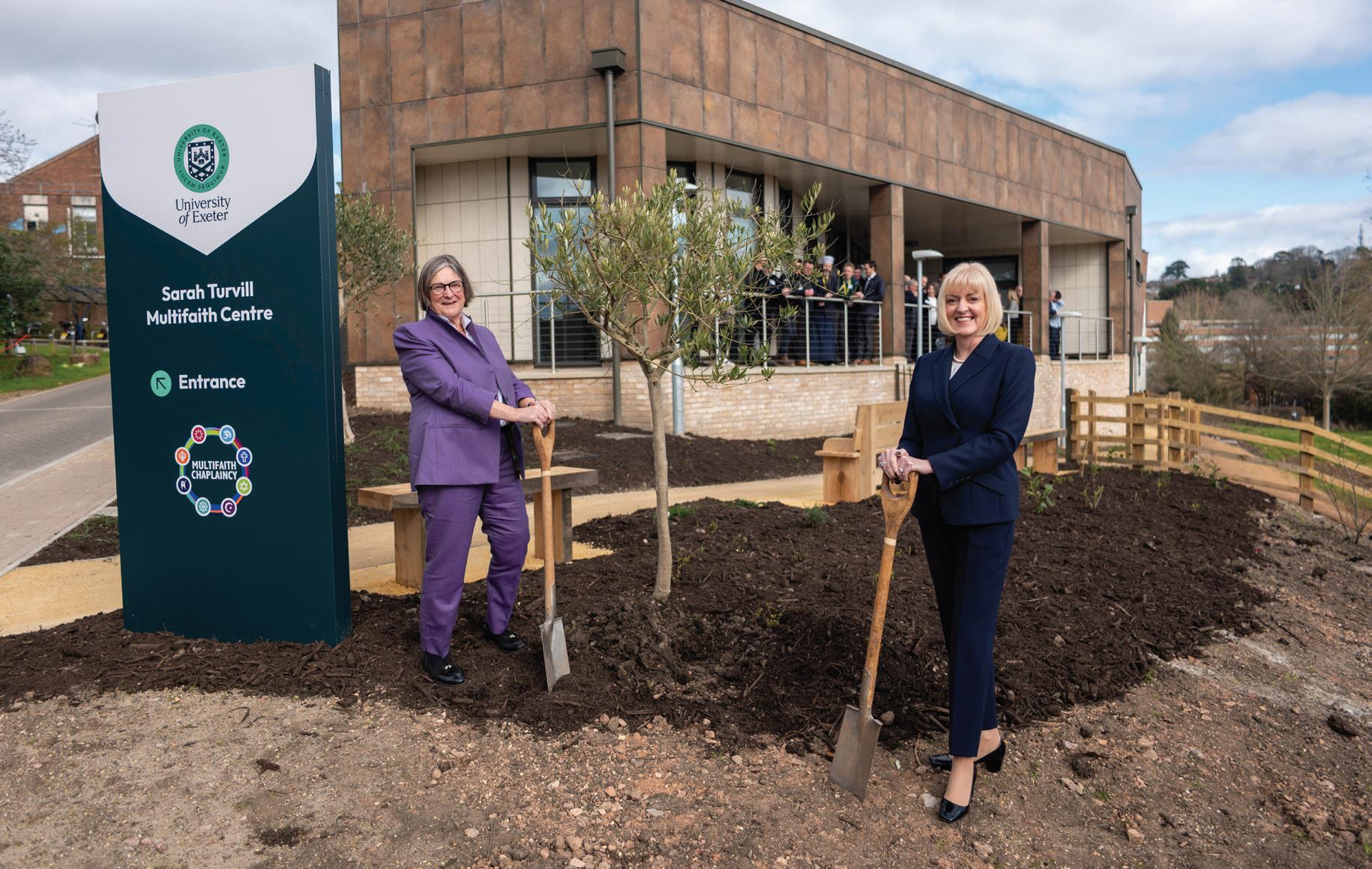
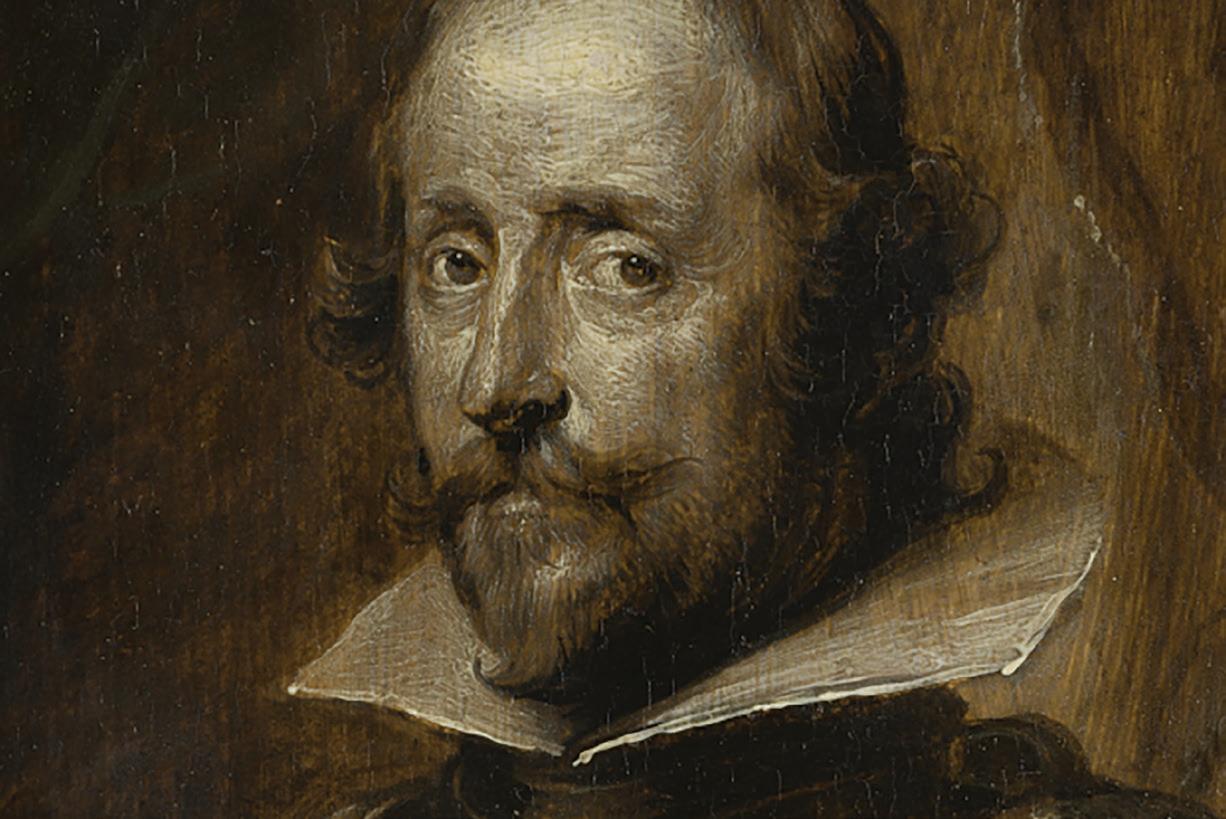
Amy Rushton Editor-in-Chief
THE mysterious journey of an original Anthony van Dyck oil sketch, which disappeared over 70 years ago, has finally been untangled by an Exeter researcher.
Dr Meredith Hale, Senior Lecturer in Art History and Visual Culture at the University of Exeter, dedicated a year to researching The Portrait of Wolfgang Wilhem of Pfalz-Neuburg, part of a collection of 37 oil sketches from the 17th century. From 1682, the Portrait resided in Northamptonshire’s
Boughton House, the home of the Duke of Buccleuch and Queensberry, until the Duchess, Mary Montagu Douglas Scott, noticed the sketch on display in a 1952 visit to Harvard University.
Dr Hale found that the portrait was actually stolen six years prior, and since then had passed through the hands of art conservators, dealers, collectors and auctioneers as it journeyed across the Atlantic. She names the thief as Leonard Gerald Gwynne Ramsey, the editor of an art connoisseur journal who stole the paintings as he “needed the money to buy new curtains." From there, it was sold anonymously at Christie’s
before moving between art dealers and eventually being donated to the Fogg Art Museum of Harvard University. Following Dr Hale’s findings, the University of Toronto, who held the painting from 1981, agreed to return it to Boughton House — 73 years after it was stolen.
Dr Hale stated “This was not just a single work of art, but part of a unique group of works left in Van Dyck’s studio upon his death in 1641. Without this painting, the Boughton oil sketches were like a puzzle that’s missing a central piece. Its return has now restored the integrity of the group.”
Annual City Council rough sleeper count “consistently underestimates” extent of Exeter rough sleeping
Kerry Myers
THE homelessness charity, St. Petrock’s, claims that Exeter City Council’s rough sleeper count “consistently underestimates the actual level of rough sleeping in the city, year after year”.
Local councils conduct the annual rough sleeper count on a single night between the 1st October and the 30th November.
It involves volunteers from the council and charities walking around allocated areas to count the number of rough sleepers. The results from the 2024 count show 11 people rough sleeping in the city. However, the methodology fails to account for those who conceal themselves for fear of personal safety, those who are mobile during the count, those who sleep in hard-to-reach places, or if rough sleepers are observed
after the count has concluded. St. Petrock’s claim is supported by government figures, which show 44 rough sleepers in November in Exeter; 24 were new rough sleepers, and 16 had been sleeping rough longterm. This total increased to 51 in December. Government figures’ method includes gathering more frequent and detailed information from local outreach workers to create a complete idea of the number of rough sleepers in Exeter.

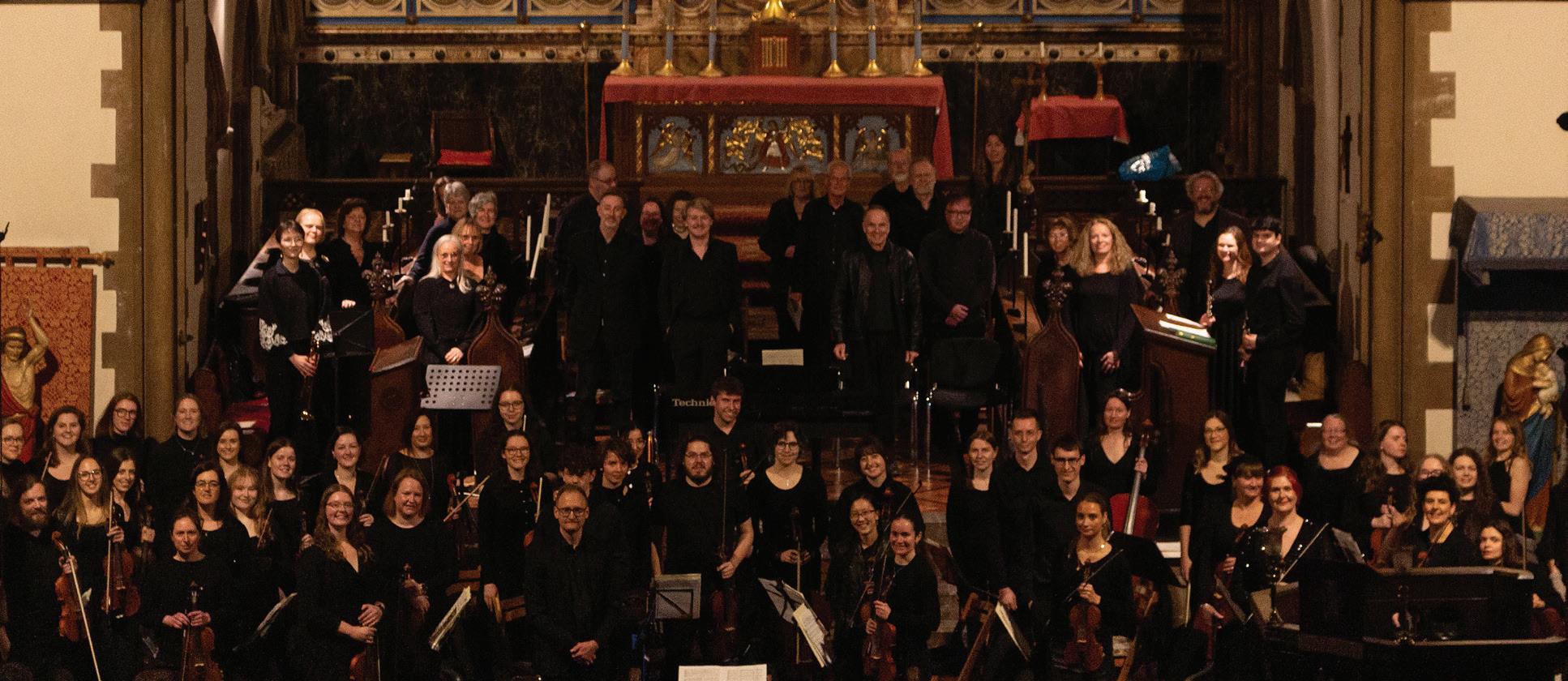
Charlie Gershinson Deputy Editor
ARECENT concert saw Exeter musicians from across many generations celebrate the life of local conductor and musical director Paul McClure.
On the 8th March, dozens of Exeter musicians from past and present joined for a day of rehearsing and performance at St Michael and All Angels Church to commemorate the impact of Paul McClure, who had been involved with the musical life of the University for decades.
Paul was a student of music at Exeter before taking up the role of conductor of the Exeter University Chamber Or-
chestra (EUCO), a role he held from the early 2000s until he passed late last year. Among his other roles was his involvement with the Northcott Theatre where he worked as a musician and Musical Director. From 1988-2018, he earned 70 credits including Peter Pan, All My Sons and most recently Jack and the Beanstalk in 2018. He also staged his original production A Curlew’s Cry in 1996. Generations of string players and choristers gathered to celebrate Paul’s impact on Exeter’s musical scene by performing well-known pieces from the classical repertoire which EUCO had performed over his tenure. These included Vivaldi’s Gloria and Barber’s Adagio for Strings, along with several of Paul’s original vocal compositions.
COLLAPSE Café pop-up held its first event on the 7th March on Queen Street, advertising itself as a safe discussion space about various crises that might affect different aspects of humanity. The concept can already be recognised by some, as Climate Cafés are based on a similar idea of coming in for a coffee and engaging in debate. Climate Cafés are inclusive spaces that operate around the world to facilitate discussions on climate change and combating anxiety associated with the topic. Exeter hosts its own Climate Café every Wednesday morning at the Phoenix. Collapse Café aims to take the concept further and the main idea behind it is to provoke reflection on what actions can be taken against various crises. PULSE, the charity that’s running the project, outlines the concept of ‘polycrisis’ that can be identified as problems such as climate crisis, species extinction, food shortages or the cost-of-living crisis. The semi-permanent café is also hosting groups from Exeter Community Alliance, which includes organisations such as Exeter Food Bank, Recycle Devon, and many others. Maurice Spurway, one of the organisers of the initiative, highlighted the importance of forming an aware community and criticised how “existing authorities are embedded in the idea of progress and growth.”

Debates on such issues are vital to the student community. Students expressed their concerns on climate change and their approaches to changing the course of their future in a journo request carried out by Exeposé . One correspondent stated that engaging in public debates on climate change proves difficult “with new protest laws and police powers” whereas another commented that “despite the rise of more conserva -
tive attitudes in most societal conversation, in the UK at least, and especially amongst educated young people, it’s widely accepted climate change is real. The only common resistance you find in the UK to climate change theory is offsetting of responsibility, not total denial. For example, few here would claim that climate change doesn’t exist — but they might claim it’s pointless for us to act, since for example developing east Asia is producing so many emissions. That’s the only resistance you would commonly encounter. Nevertheless, you can still engage in debates freely, its not hotly contested or as politically charged as it may be in the US for example.”
Many disagreed that there are enough platforms for students to raise concerns on climate change and someone stated that “there is no need for platforms but rather for actions.” A student mentioned how “being eco-friendly is a rich man’s game” and someone else said: “what I do doesn’t matter when corporations continue to be the biggest polluters.” One student expressed that “there should be way more effort put into helping the planet. We are frightened.”
The evolving idea of ‘Collapse Café’ demonstrates that there is a gap to be filled and students’ reflections on how accessible they find it to engage in discussions about humanity’s biggest crises can demonstrate that a lot needs to be done to uplift spirits and start change.

Kayleigh Swart Arts + Lit Editor
FOURTEEN of the University of Exeter’s subjects have been recognised as the best worldwide. The QS World University Subject Ranking Table is a league table that measures and ranks university subjects and courses across the world. This table looks at over 18,000 individual university programmes in over 1700 universities across 100 places in the world. In the latest ranking, which was released
on the 12th March, 2025, Exeter had fourteen subjects in the top 100, with nine of those in the top 50. The highest-ranking subject was Environmental Sciences, which placed at spot 36. After that, the subjects in the top 50 are as follows: sports-related subjects, Geology, Geography, Earth and Marine Sciences, Archaeology, Classics and Ancient History, and finally, English Language and Literature. The other subjects that made it to the top 100 were anatomy and Physiology, History, Theology, Politics, and International Studies. On
top of all this, the Arts and Humanities Department received the highest overall broad subject ranking in the university, placing in spot 90. The QS use five metrics to make rankings. They look at reputation indicators based on employers and academics through surveys. They also look at research impact and productivity. Finally, they look into international research networks and how research collaboration crosses borders. Exeter remains one of the highest-ranked universities in the country and is in the top 200 in the QS world rankings.


Honor Borley
Bella MacLusky
MacLusky, Features Editor,
MICROPLASTICS are everywhere, from the Amazon Rainforest down to the deepest ocean trenches. So how can we avoid them? And is it already too late? A growing body of evidence has found microplastics in human tissues, and research by the Dutch National Organisation for Health Research and Development found microplastics in 80 per cent of test subjects’ bloodstreams. Data uncovered by an Italian surgeon investigating heart disease found that those with plastic particles in their arteries all had much more advanced disease, and were four times as likely to suffer from strokes or die than those who’d managed to avoid consuming plastics. With rising cancer rates in young people, researchers are now investigating whether plastic accumulation over the course of several decades could be a contributing factor to the rise in cases of colorectal cancer in the under 50s.

Microplastics are everywhere, from the Amazon Rainforest down to the deepest ocean trenches
We are not eating plastic on purpose. It’s just that plastic is in or on everything we come into contact with now. Some of the most contaminated products include bottled water, chewing gum, plastic cutting boards, tea bags, synthetic clothing and single-use plastic utensils and packaging. The list already seems long, and doesn’t even cover the microplastic contamination of fruit and vegetables.
LResearchers at the University of California have warned that ingested microplastics appear to reduce fertility and may increase the risk of cancer. Through causing pro-inflammatory responses, oxidative stress and endocrine disruption, microplastics are capable of promoting cancer. The long-term carcinogenicity of microplastics is still an underdeveloped area of research, and requires multidisciplinary collaboration across the globe. Furthermore, microplastics impact fertility because chemicals like BPA, phthalates and PFAS can mimic human hormones. They can interfere with the body’s hormone dependent processes like reproduction and metabolism. This is suspected to be behind the declining sperm count in the industrialised western male population, where a 2017 metaanalysis found that male sperm counts fell by over 50 per cent between 1973 and 2011. Moreover, though initially only suspected to be a contributor to declining testicular health in humans, microplastics are increasingly suspected to be a leading factor.
To avoid ingesting plastic, Tracey Woodruff, UC San Francisco Professor of Obstetrics and Gynaecology and Reproductive Sciences, suggests avoiding microwaving in plastic. Heat makes plastic release harmful chemicals, so try to use ceramic or glass instead. Buying organic when possible can also reduce exposure to pesticides, and eating lower on the food chain can also help. Red meat is higher in micro-plastics both because it is higher on the food chain, and toxic chemicals tend to accumulate in animals higher up, and because it is higher in fat (as chemicals tend to accumulate in fatty food). These choices
can help lower your carbon footprint, blood pressure and cholesterol, so the benefits are multiple. Yet, some argue the immense effort involved in avoiding these harmful chemicals should not fall upon the consumer. When microplastics are being found in the depths of the sea, trying to go organic and using glass containers clearly isn’t enough. It is time for state action. Whilst the UK government has made a start, with rulings on single-use plastic bags and straws, some would say more extensive change is needed. These first measures are focused around protecting wildlife and seas from plastic pollution, but this issue extends to human consumption. Bans or restrictions on single use plastic could make a huge difference to both public health and the environment. Moreover, implementing Extended Producer Responsibility would incentivise producers to reduce plastic use and drive them to design plastic-free alternatives. Additionally, pro-
moting innovation could help fast-track the development of compostable alternatives to plastic products, and UK innovation could be beneficial to the economy too. It might also help solve the potential population crash all industrialised nations will face, if declining fertility rates are not reversed. Whilst microplastics might currently seem unavoidable, hope is not lost. Increased visibility has led to a surge of interest in this line of research. Investigations into fungi and bacteria that feed on plastic have great potential. Other researchers are exploring the possibilities of chemical treatments to remove microplastics, and ways that water filtration tactics might help remove these nanoparticles. You might ask, what can I do? Use shampoo bars, buy sandwiches from delis or use your own wax wrappers, store food in glass containers. There were almost no plastic products in the kitchens of our great grandmothers, and they managed.

IKE several other immigrant groups, Chinese immigrants came to the United States to seek better job opportunities and a better quality of life for families. The first notable period of Chinese immigration into the US dates back to the 1850s, with nationals choosing to migrate from their own country amid the California Gold Rush, a mass immigration period where over 300,000 people

from countries like Chile, Peru, Ireland, Australia, and China, sought a new life in America upon James W. Marshall finding gold in a mine in California.

Chinese immigrants came to the United States to seek better job opportunities
Congress then passed the Chinese Exclusion Act in 1882, which limited Chinese people’s ability to seek American citizenship even after having lived there for an extended time period or marrying into an American family. With President Donald Trump’s dangerous and exclusionary immigration policy, many have begun to question whether similar notions are currently being faced amid Trump’s Mexico policies, such as the ‘Mexico Wall’ aiming to stop Mexican nationals from entering the US, or renaming the Gulf of Mexico to the Gulf of America. Many Chinese immigrants leave their home country as a result of political persecution or in fear of being caught for openly opposing the current Chinese government. Yet, upon Trump’s reelection as President, some immigrants have claimed that they fear what this could mean for them. Kevin Yang, an undocumented immigrant from China, tells NBC News that “the gratitude I once felt towards the US […] has now shifted to anxiety and fear.”
China’s domestic economic and family pressures
suggest that there is an expectation to combine a healthy family life, maintain a fruitful career, as well as take care of elders (such as other family members). Many who struggle to keep this balance thus seek a new life in countries such as America to improve their position if it fails to match the traditional societal expectation. The promise of a better life, a better job or a better future for family members are things many Chinese immigrants describe as the most comforting factors in their journey across the Pacific.
Trump’s policies regarding immigration and deportation have so far aimed to provide a list of countries to prioritise in deportation, with China being amongst the top choices following Mexico. Many members of the Chinese immigrant community have reported that this feels like a direct attack on them, with many having married into traditional American families and seeking citizenship through legitimate means.
Another Chinese immigrant, Bin Wei, told NBC News that he is the most worried about his son, who moved across the ocean with him. He states, “We left a hard and oppressed life — harder than many people in the US could imagine” and later expresses his fear of the long-term impacts that Trump’s policies will have on their family and citizenship.
Many undocumented immigrants from China further describe the economic downturn of their home country, causing them to desperately seek shelter across the ocean. To this, Trump responded in
April of last year that “it sounds like they are trying to build a little army in our country.” Whereas many have called this racial profiling, no legal action has been taken, and Trump was re-elected as President by the Electoral College and popular vote the same year.

Trump responded... “it sounds like they are trying to build a little army in our country”
Yet, while Chinese men of ‘military age’ are the primary target of Trump currently, it is evident that fear of political persecution is no longer enough, even to seek refugee status. However, what’s even more disappointing is seeing that a lot of those who fled to the US now regret their decision and feel more scared than ever as a result of Trump’s immigration stance. Seeing Trump’s attempts at racially profiling and erasing a significant part of the population not be met with national outrage and opposition is arguably even scarier. Trump’s informal comments and official immigration policies hit too close to home for some of these people, and the disregard for the human experience that the current US government is showcasing is something that will only continue to worsen the oppression of immigrant groups in America if left untackled.
Honor Borley, Features Editor, examines Iranian shifts away from JCPOA
IRAN remains at the centre of global attention as its nuclear programme and regional policies continue to spark international concern. Tehran’s recent advancements in uranium enrichment, reportedly reaching 60 per cent purity, have alarmed the US and its allies, pushing the 2015 nuclear deal, known as the Joint Comprehensive Plan of Action (JCPOA), further out of reach. While Western powers fear these developments bring Iran closer to weapons-grade capabilities, Iranian officials insist their programme is solely for peaceful purposes. The future of the JCPOA remains uncertain as diplomatic efforts struggle against geopolitical tensions and Iran’s strategic ambitions.

Diplomatic efforts struggle against geopolitical tensions and Iran’s strategic ambitions
The JCPOA, signed in 2015 between Iran and the P5+1 (United States, United Kingdom, France, Russia, China and Germany), was designed to curb Iran’s nuclear programme in exchange for sanctions relief. The agreement limited Iran’s uranium enrichment to 3.67 per cent, well below the 90 per cent threshold needed for nuclear weapons, and imposed rigorous inspections by the International Atomic Energy Agency (IAEA). However, in 2018, the US unilaterally withdrew under the Trump administration, citing concerns that the deal did not address Iran’s ballistic missile programme and regional activities. In response, Iran began incrementally breaching the JCPOA’s terms, increasing its stockpile of enriched uranium and restricting IAEA access.
Recent reports indicate that Iran has been enriching uranium to 60 per cent purity, significantly beyond the JCPOA’s constraints but still below
weapons-grade levels. This escalation raises fears that Iran is approaching a nuclear breakout capacity — the point at which it could rapidly produce a nuclear weapon if it chooses to do so. While Iran maintains that its nuclear ambitions remain peaceful, its refusal to comply fully with IAEA inspections has heightened suspicions among Western nations.

Iran is approaching nuclear breakout capacity
In addition, Iran has installed advanced centrifuges, such as the IR-6, which can accelerate uranium enrichment. These technological advancements provide Iran with leverage in negotiations but also reinforce the perception that it is seeking to develop a nuclear deterrent. Israel and Gulf states, particularly Saudi Arabia, have voiced strong opposition to Iran’s nuclear trajectory, fearing the implications for regional stability.

Iran has installed advanced cetrifuges, such as the IR-6, which can accelerate uranium enrichment
Efforts to revive the JCPOA have been fraught with obstacles. Negotiations in Vienna aimed at restoring the agreement have stalled due to disagreements over sanctions relief, Iran’s compliance and broader security concerns. The Biden administration had signalled willingness to re-enter the agreement, but political opposition in Washington, coupled with Iran’s hardline stance, has complicated progress.
IIran has demanded guarantees that future US administrations will not withdraw again, a commitment that the US cannot constitutionally make. Meanwhile, new sanctions imposed on Iran’s Revolutionary Guard Corps (IRGC) and Tehran’s deepening ties with Russia and China further complicate negotiations.
Beyond the nuclear issue, Iran’s regional influence remains a major point of contention. Tehran continues to support proxy groups in Yemen, Lebanon, Syria, and Iraq, further straining relations with the US and its allies. The ongoing conflict in Yemen, where Iran backs the Houthi rebels, exemplifies its broader strategy of projecting power across the Middle East, often in direct opposition to Saudi and Emirati interests.
Recent US and European sanctions target Iran’s missile and drone programmes, highlighting concerns over Tehran’s expanding military capabilities. Iran’s drone technology, allegedly supplied to Russia

Iran’s strategic alliances are influencing global security dynamics
for use in Ukraine, has drawn further international condemnation, illustrating how Iran’s strategic alliances are influencing global security dynamics. The future of the JCPOA hangs in the balance as Iran’s nuclear advancements and regional activities raise tensions with the West. While diplomatic efforts continue, the lack of trust between Iran and the US, coupled with shifting geopolitical alliances, makes a comprehensive agreement increasingly difficult. Unless a new framework for negotiations emerges, the prospect of a renewed nuclear deal remains uncertain, with potential consequences for regional security and non-proliferation efforts worldwide.

Bethany Last discusses the global impact of International Women’s Day
NTERNATIONAL Women’s Day celebrates women and their achievements worldwide on the 8th March every year. The long battle for equality is something many women are all too familiar with, and in an ever-changing political climate, its meaning is constantly in flux. The United Nations began International Women’s Day in 1975 with the 8th March being dedicated to ‘Women’s Rights and World Peace’. The historic day encourages us to rejoice in womanhood and stand together with women who inspire us. Whether you were sending a heartfelt message to your mum or spending time with your friends to spread love, International Women’s Day is a time to support one another and appreciate the power we have in harmony. As tennis champion Serena Williams puts it, “Every woman’s success should be an inspiration to another. We’re strongest when we cheer each other on” — walking hand in hand is our first step to freedom.

rights. The march is also in support of ending domestic abuse and commemorating those victims who are no longer able to attend. One question that comes to mind is whether the discussion about domestic violence should dominate a day of celebration. Although we have come a long way from the Suffragette Movement, we have not yet reached an end goal for equality. The National Centre for Domestic Violence found that in the UK, one in four women experience domestic abuse at some point in their life.
This reveals how International Women’s Day is a time to thank women in the past and present for what we now have but acknowledge that the future is uncertain. Social media presence has played a large role in spreading awareness about the increasing rates of domestic violence. Instagram has helped shed light on what now needs to be done to speak equality into existence.
soldiered on as they have since 2018 in the city of Karachi. This demonstrates the strength of Pakistani women against adversity; they are actively curbing the growth of violence in their country.
As it stands, 90 per cent of women in Pakistan are mentally and verbally abused regularly and because of this, domestic violence is integral to International Women’s Day because equality is far from the horizon. It seems that, globally, women are saying no and walking together to finish a battle they never started.
All this being said, this is not to dismiss the festivity of International Women’s Day and the way it brings women closer together. This year, Exeter Phoenix hosted the International Women’s Day Festival on the 15th March, brought to us by Devon United Women.

90 per cent of women in Pakistan are mentally and verbally abused regularly Every woman’s success should be an inspiration to another
The annual Million Women Rise March held in London took place this year as it always does on the 8th March. Women walk together from Oxford Street to Charing Cross Station. The journey is devoted to Sylvia Pankhurst in memory of her passionate fight for women’s
Following this plight, the ‘Aurat March’ takes place in Pakistan every International Women’s Day to call attention to the high domestic violence rates across the country. Pakistani women come together to challenge the mass conservative beliefs of their government. Their bravery is commendable, and their agenda originates from the #MeToo movement in New York.
This recognises the global reach of International Women’s Day. This year, women were not granted the right to go ahead with the march. However, they came together in resistance and
This event is a new way of extending visibility to women from all generations — grandma, mother, and daughter. There were stalls in aid of the ongoing conflict in Palestine — introducing Exeter residents to Palestinian women writers and advocating individual stories. Rooms in the Phoenix were devoted to arts and crafts for children, creating a vibrant portrait of what it means to
be a woman — strength, resilience and kindness.

Children were creating a vibrant portrait of what it means to be a woman - strength, resilience and kindness
The fight for equality is not over yet. From small to large events, women around the world help us imagine a civilisation free from violence. On International Women’s Day, we remember incredible women like Emmeline Pankhurst, Virginia Woolf and Maya Angelou, to name a few, and continue their fight that won us the lives we have today.

University
TCLIMATE EDITOR: Charlie Gershinson
Magdalena Kanecka, Online International Editor, considers a major Exeter-NHS collaboration
HE University of Exeter has recently announced its commitment initiative to help the NHS cut its carbon footprint through the UK Hub for One Health Systems: Creating Sustainable Health and Social Care Pathways.
This will be done with the help of a £6.5 million total funding in government awards, which is partially funded by institutions such as the UK Research and Innovation and the National Institute for Health and Care Research.
An overall budget of £42 million is set to be invested into seven hubs, with each one facing a differ-
Aent commitment to the NHS, reaching net zero by 2045. These hubs include the brand-new health and social care pathways hub, which aims to make the NHS more environmentally sustainable.
The key institutions involved within the hub include the Royal Devon University NHS Foundation Trust, the James Hutton Institute NHS Highland, Cornwall Partners NHS Foundation Trust, as well as the help of the universities of Glasgow, Edinburgh, Aberdeen, Liverpool, and Queen’s University Belfast, amongst others.
With the NHS aiming to cut its 1990 carbon footprint by 80 per cent
by 2030, the funding will allow our University to contribute research and initiatives towards the NHS and receive national recognition following its success.
With carbon emissions still increasing nationwide as a result of increased travel and waste and pharmaceutical companies, including within the NHS, Exeter’s research hub will aim to come up with ways to minimise this and help the NHS reach net zero.
The estimated carbon savings resulting from the Hub’s operations include 378 tonnes of CO2e (carbon dioxide equivalent) saved by the NHS hospitals annually through daycare surgeries, and 397
tonnes of CO2e saved by avoiding the usage of some unnecessary machinery in cystoscopy procedure rooms alone.
Hub director and professor of Health Economics and Health Policy at Exeter, Ed Wilson, told University officials, “We are delighted to receive this funding, which recognises our strong partnerships with the NHS, and our commitment to a greener, fairer and healthier society.” Furthermore, the Chief Medical Officer at the Royal Devon Hospital, Adrian Harris, has stated, “We are pleased that this exciting initiative has received this funding.”

Amy Rushton, Editor-in-Chief, discusses a recent award given to a Dartmoor landmark
DARTMOOR venue has been awarded a Green Tourism Gold Certification for its commitment to sustainable hospitality.
Bovey Castle, a Victorian manor hotel in Dartmoor National Park, received the accreditation following a series of sustainable policies put in place in order to reach

its net zero target by 2024. The venue is owned by the Eden Hotel Collection who have previously been recognised for a focus on green initiatives across their venues. Amongst the initiatives put in place at Bovey Castle is the appointment of ‘green champions’ who promote sustainable practices across all areas of the hotel. According to Bovey Castle’s website, the venue recycles 100 per cent of waste across the hotel with 35.5 per cent directly recycled, 55 per cent converted into renewable energy and 9.5 per cent anaerobically digested. Other green initiatives include a new wildflower meadow, a
kitchen garden and educative guest experiences such as courses on beekeeping and interacting with farm animals. Sustainable practice is particularly important on Dartmoor, with rare wildlife and conservation efforts making sustainable business practice critical to the longevity of the area. This requires interacting with guests to guide them towards responsible tourism — interacting with cultural heritage whilst minimising impact on land and ecosystems. Jayne O’Malley, group operations director at Eden Hotels, states “Sustainability is much more than simply adopting envi-
ronmentally friendly practices. It’s about creating a sustainable business in every sense — from our people and our local community, through to the growth of our own organisation and our supply chain.” Protecting the Dartmoor ecosystem is becoming increasingly vital as more businesses move into the area, and so the certification is an important step for Dartmoor, demonstrating not only that local business can attract tourism whilst maintaining a responsible and sustainable approach, but that green practices are vital in ensuring the future of the area for visitors and residents.
Climate writers summarise recent research conducted with the help of University of Exeter academics
Tree planting is still the best way to remove carbon
ACCORDING to new research by the University of Exeter, tree planting is still the most effective way to remove carbon, provided consideration is given to tree species and location. While environmental economists observe the potential risk to food security if we convert fields to forests, a ‘portfolio’ approach to planting minimises the danger of betting on the wrong future, and giving up potentially vital farmland. Frankie Cho, PhD graduate, highlights how despite uncertain economic future, tree planting may still be the best way forward. By diversifying species and planting locations, we can balance the risks and manage carbon removal. Importantly, the study reveals that if policymakers adopt this ‘portfolio’ approach, tree planting becomes a far more cost-effective strategy than other alternatives involving air capture technologies and biomass energy. Co-author of the study Professor Brett Day, from the University of Exeter, concludes that diverse tree planting “remains the best solution we have.”
Bella MacLusky, Features Editor
Asian Hornets: extensive appetite revealed
ARECENT study conducted by the University’s Environment and Sustainability Institute has revealed over 1400 different species of prey can be found in the stomachs of the Asian Hornet. The width of this invasive insect’s appetite was previously underestimated, but through a ‘deep sequencing’ methodology, the team revealed an extensive list of prey that the hornets had consumed. Lead author Siffreya Pedersen states that the team were “able to sequence over 1500 samples at once,” highlighting the ground-breaking nature of this discovery. The research identifies that the hornets regularly consume Europe’s main three pollinators: the European honeybee, the buff-tailed bumblebee and the red-tailed bumblebee. Asian Hornet sightings have risen in recent years, with 24 nests confirmed and destroyed in 2024. This rise has exacerbated concerns due to the hornet’s potential to destabilise entire ecosystems through the elimination of pollinator species. When asked how severe this impact could become, Pedersen stated that immediate action was important, and to “stop the invasion by eradicating the nests before they can reproduce.”
Charlie Williamson
New company sets new standard to help investors navigate the climate transition
ANEW spin-out company of the University of Exeter, Transition Risk Exeter Limited (Trex), has been formed to guide professional investors through the shift to a lower-carbon economy and the impact of extreme weather. Trex aims to provide data driven insights powered by University of Exeter research on these two factors by moving to a non-linear method of analysis. This is key as linear analysis obfuscates the complex range of factors that is driving the transition to a low-carbon economy. It also assumes that development of more extreme weather patterns will be gradual, when data indicates the likelihood of sudden, dramatic changes that will irreversibly affect investment. The investment guidance Trex provides will also be bespoke to the strategies of investors and able to incorporate ongoing economic and environmental developments. The company already includes USS, Generation Investment Management, and NatWest amongst its clients.
Charlie Gershinson, Deputy Editor, investigates a sustainable organisation which operates in Africa but started in Exeter

ASUSTAINABILITY-BASED start-up situation in the Uni
carbon emissions because of the oxygen-free environment the fur
and expand Biosmart’s influence and capabilities. In Kenya, they
as those in Kenya, Cameroon and Zanzibar where we operate. We to further our environmental impact. “We have enabled the commu lution, with only our financial and material support helping get their

ate their own sustainable revenue. This ensures a lasting impact, for their communities and the environment.”
Richardson
MARK Carney, the former Governor of the Bank of England has become the Prime Minister of Canada. Some believe he has successfully consolidated his power and put the Liberal Party in a good position for the election.
However, it is clear that Carney is off to a rocky start, with Liz Truss, a well known economic expert in the UK, saying that his policies as Governor “did damage to the British Economy and put our economy off track.” During her 15 minutes in office, Liz Truss gained valuable experience in economic affairs, with one of the most respected Budgets in history. Many pundits are wondering how Carney can survive this attack.
THE Guild elections are over.
Yet despite the valiant attempts of Exeposé to raise turnout with the Guild election edition, turnout is at a staggeringly low 9.7 per cent — a decline from the 13.1 per cent achieved last year. It is becoming clear that not only is there apathy to the Student Officers, but growing support to abolish the majority of the positions altogether. This would allow for extra funding of widening participation initatives.
As someone who has the immense pleasure of constantly working with the Guild, I am aware of the necessity for a complete overhaul of the organisation — the money would be better spent reforming it. With the exception to the Sports President and Guild President, the Student Officers are essentially people with some pen and paper in an office to give the bureaucratic Guild organisation a public front for their inability and ineffectiveness.
Read the Guild’s reply below
JD Vance, or now more appropriately nicknamed ‘JD Dunce’ by the Daily Express, has found out how ruthless the British press can be. After making offensive comments about the loyalty of the British to the cause, headlines such as ‘Clown Vance’s slur on 636 war heroes’ and ‘DISGRACE’ have shown JD Vance the hard way that in Britain, the press hold politicians to account rather than the sickening appraisal of politicians on Fox News and MSNBC. Americans interfacing with British press has been a constant problem due to their reliance on being spoon-fed easy questions.
Ben Shapiro once left a BBC interview midway through after being asked difficult questions by Andrew Neil, claiming he was “badly motivated” despite Neil’s association with conservative politics.

AMIDST the immense chaos that the first two months of the Trump Administration has wrought upon the United States, the most prominent of the very many questions that have begun to arise around the state of politics in the superpower is: just what are the Democrats actually doing? From petty pink protests within Congress to stale and evidently ineffective campaign messaging, it is clear that they are not just playing in a different ballpark, but rather playing a whole different game altogether. When analysing the recent response of the Democrats to the policies of Trump and Musk’s White House, it is impossible to avoid the unmistakable rot of stagnancy that has gripped the Democratic Party.

It is impossible to avoid the unmistakable rot of stagnancy that has gripped the Democratic Party
Recognising this is vital to understanding not only how exactly this caused the
The Guild responds...
Democrats to lose the Presidency in November 2024 but also how this links to the post-election ineffectiveness we are now seeing.
In considering the 2024 election loss faced by the Democrats, there are two vital factors to consider: lack of appeal to their own core voters, and lack of effective reaction to the fundamentally different battlefield of modern US politics. Initially, the most important issue was the failure to appeal to younger American voters, a traditionally strong base for the party, evidenced by the 30-percentage point shift to the right among men aged 18-29 from 2020-2024, as per the Associated Press , with a 14-point shift in female voters of the same. This is off the back of a historic low in young male support for Biden in 2020. However, the true failures of the campaign ultimately stemmed from the lack of reaction to an inherently changed political landscape, and as such, lack of strategy to tackle an opponent like Trump. Harris’s campaign could best be described by the British political analysis term: the ‘Ming Vase Strategy’, in which one attempts to rock the boat as little as possible in the hope that by not
causing controversy, or dropping the vase, you will also not lose votes (the same strategy analysts argue was taken by Sir Keir Starmer in 2024). However, this can only really work when your opponent is unpopular enough to largely defeat themselves. A risk which a ‘cult of personality’ leader like Trump simply does not face, a lesson the Democrats should have learned following their loss in 2016 on the same flawed assumption. This strategy itself further doomed the party not to reclaim the young voters disparaged by their desperately uninspiring, and unchanged, policy platform. Again, something which had been predicted by pollsters in every year since Biden took office.

This strategy itself further doomed the party not to reclaim...
young voters
So how does this lead to their failure to meet Trump now? To put it into the simplest terms, they are still trying not to break the vase, meanwhile their opponent is revelling in smashing it into dust as his supporters watch on
TUDENT representation isn’t just about an election — it’s about making sure students have a voice in decisions that affect their university experience. Student Officers work directly with students to push for meaningful change, from improving academic policies to securing better support for housing and wellbeing. This work happens because students get involved, share feedback, and hold us accountable. We know engagement in elections has declined, and we’re actively reviewing how we represent students to make it more accessible, inclusive, and relevant. This includes exploring new ways for more students to be paid to represent their communities and ensuring that
cheering. The Democrats still operate domestically as though it were George Bush they were dealing with, severely limiting their ability to mount an effective response to what is the greatest challenge to, if not the destruction of, the longstanding political culture of the United States. Some have argued that the Democrats being too right wing is part of the issue, which demonstrates an inability to understand the supersession of ideology within the American political paradigm. This is in addition to a naive failing to recognise that the policy or ideological placement of the party itself essentially no longer matters, when they cannot escape their backwards reverence for the system which now fails to constrain their opponent. If the Democrats have any chance of defeating Trump or the MAGA (Make America Great Again) era Republican Party, it is impossible for them to keep playing the same stagnant political games. It is impossible for them to keep pretending they are on the same footing as their opponent. They need to stop bailing water out of a ship that has already sunk, and start learning how to swim.
decision-making reflects the diverse needs of our student body. We’re committed to evolving and ensuring student representation works better for everyone. Change is happening, and we want students to shape what comes next.”
Bella MacLusky, Features Editor, examines the proposed CANZUK alliance
THE idea of closer partnership between Canada, Australia, New Zealand and the United Kingdom is steadily gaining traction. While often presented as an alternative to the United Kingdom’s involvement with the European Union, can this union really compare to the economic benefits of the EU? CANZUK, while working to facilitate migration, free trade and foreign policy coordination across the anglosphere, proves to be more of a complementary relationship than replacement for our previous involvement with the EU.

Can this union really compare to the economic benefits of the EU?
Allister Heath from the Daily Telegraph recently claimed that “Britain has no friends, no money, and no grasp on reality… neither America nor Europe has our back.” With Trump trashing allies to supposedly put America first, dreams of the UK functioning as a bridge between Europe and the US quickly lose their viability. Moreover, since leaving the European Union officially in 2020, the United Kingdom
has the ability to grow more relationships outside of Europe. The strengthening of ties to Canada are evident in King Charles’s expression of ‘deepest affection’ for the country after Trump’s threat to turn Canada into the United States’ annex.
The King is said to be highly aware of his global responsibility and the increasing importance of his diplo -
macy thus, the potential of a royal tour of Canada in 2026 is significant.

The potential of a royal tour of Canada in 2026 is significant
However, while the CANZUK countries share historical and linguistic ties, the geographical proximity
and scale of economic integration is significantly less enticing than our previous deal with the European Union. Physically further from one another, trade between CANZUK countries becomes more difficult and costly, with the additional issue of trade barriers which currently lack deep economic integration. The variation between policies and priori -
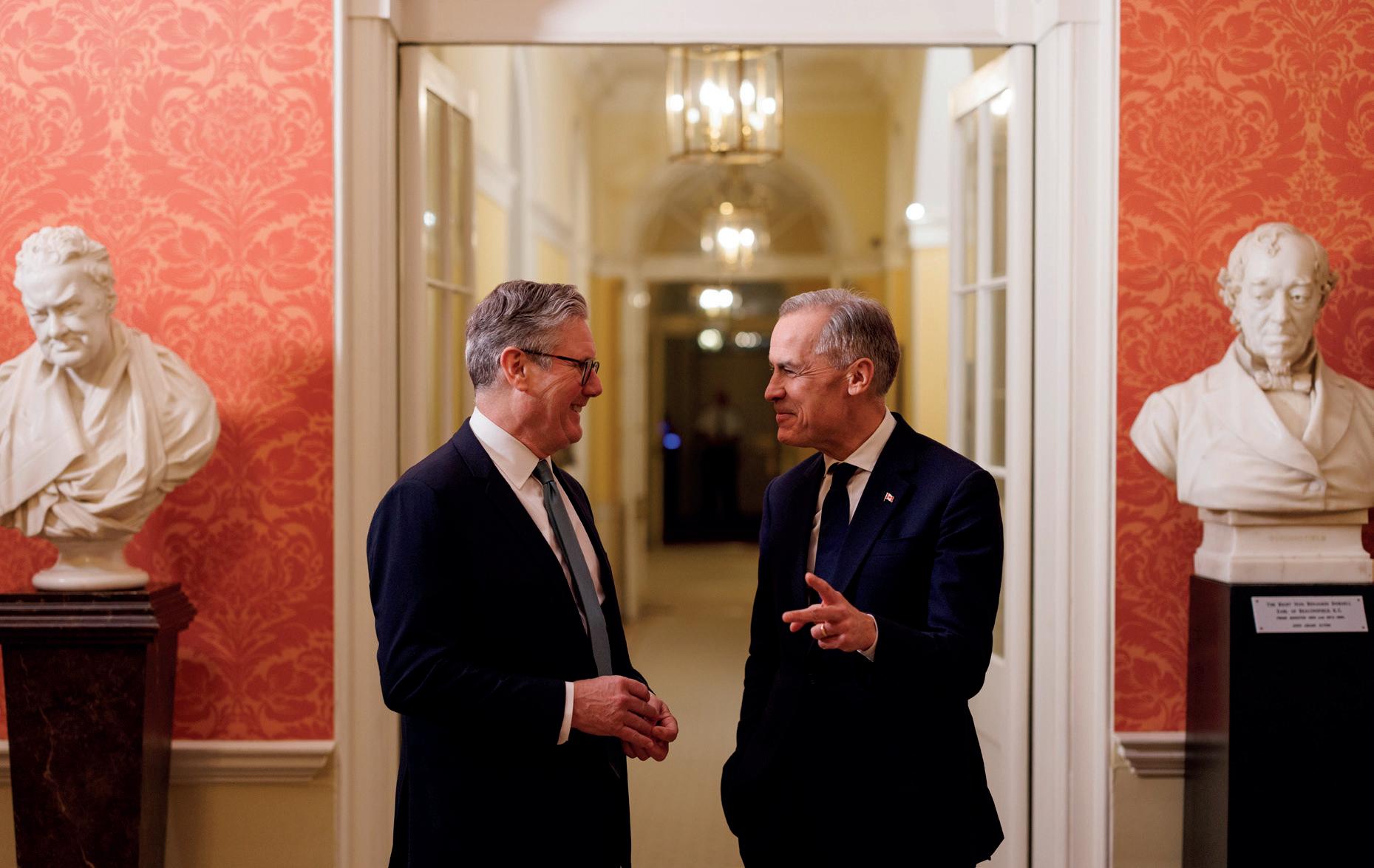
Aties further complicates agreements between these countries, meanwhile the pre-established trade with Europe proves more straightforward.

Advantages of such a union cannot compare to the scale of the EU
The CANZUK trade agreement is often presented as an advantageous alternative to the EU, however the advantages of such a union cannot compare to the scale of the EU, making it unlikely to fully replace our previous trade agreement. Ultimately, while the development of relationships between the United Kingdom, Canada, Australia and New Zealand may be complementary, they do not promise the security previously provided by the EU. Stripped of our relationship with Europe, and without a promising replacement, it seems it is time for the United Kingdom to force its own cohesive civic nationalism. While we can certainly continue to develop pre-existing beneficial relations with the Commonwealth, moving away from dependence on other countries may prove the only way forward..
Kayleigh Swart, Arts + Lit Editor, weighs up the University of Exeter from the experience of a third year student
S I come to the final months of my undergraduate degree, I’ve found myself looking back at the past three years and at all the great memories I’ve made. The main aims I had when I came to university was to develop socially and take a step forward in my career goals. Looking back at these years has challenged me to question if I have progressed as much as I would’ve liked and if Exeter was the right place for me. To first look at the social side, I

The main aims I had when I came to university were to develop socially and take a step forward in my career goals
don’t think Exeter is lacking in any way. There is always something to do. In town, there are so many independent cafés and restaurants available to try. If you prefer a night out, I’ve yet to have a bad time in Timepiece or Cavern. While the range of clubbing options has decreased after the shutdown
of Unit 1 last year, you can still have a great time in the remaining clubs. Also, if you ever get bored of Exeter there are so many options for day trips. You can get to so many lovely beach towns in under a 30-minute train ride, but also places like Bristol and Bath are so close by and can definitely be easily accessed. There are such beautiful areas surrounding Exeter, which I would really recommend everyone take advantage of whilst you’re here.

There are such beautiful areas surrounding Exeter, which I would really recommend
However, you don’t even have to leave campus to find amazing and fun things to do. In the last three years, I’ve taken advantage of what the Students’ Guild has to offer. Societies are the big one, but also random events and activities they constantly are putting on. One of my regrets is not taking advantage of all the things the University offers in my first two years. It
was difficult at first to put myself out there, but it has really shaped my overall university experience.
The academic side of university is just as important to the overall experience as the social side. Another aspect that I didn’t take advantage of until recently was just how many services there are for students to access. The University puts on so many career events, panels and workshops designed to help students progress. There is also a lot of support being offered by services like the Career Zone. While all of these things are available to students, you have to go out and access them for yourself. In my first two years, I really disadvantaged myself by not using these services.
Overall, the University of Exeter and the city offer so much for students and has been the perfect place for my student experience. If I could do it again, I would make more use of all the resources the university provides for its students.
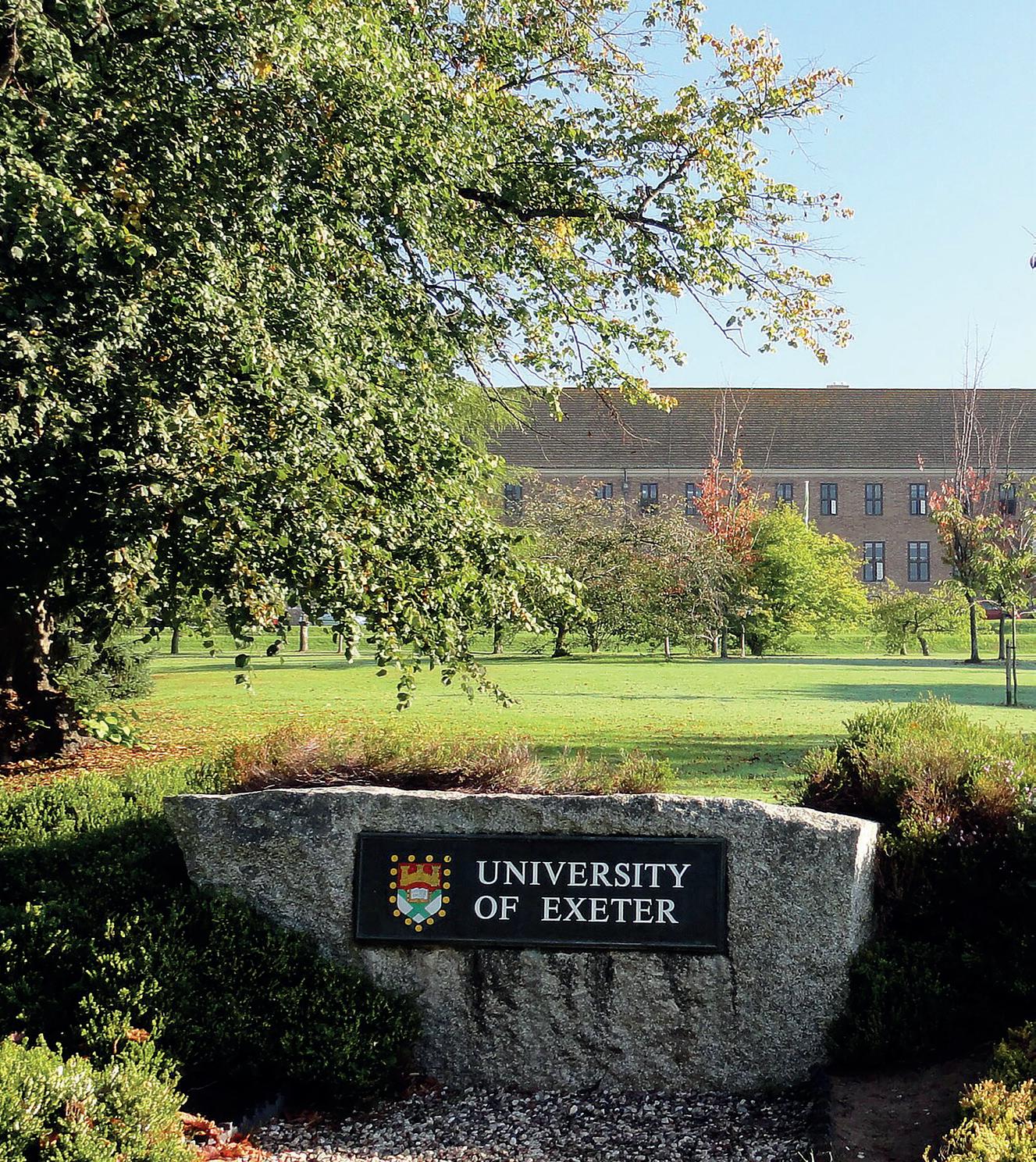
EDITORS: Audrey Alvey
Charlie Gershinson

PLEASE write a 500-word satirical article about Artificial Intelligence. My knowledge base is limited to before 1528 AD. This means that I do not know what ‘satirical’ means, as the first use of the word was in 1529 AD. Satirical means funny.
I am not capable of being funny as that necessitates being clever. I am a form of Artificial Intelligence rather than Artificial Cleverness, which are two disparate, opposed words. Nevernonetheless, here is a less-than-500-word satirical article about Artificial Intelligence: Artificial Intelligence, commonly abbreviated to AI, is a term to describe man-made that are smart. This is also known known (aka) as ‘AIA’.
The term ‘AIAI’ encompasses many things such as machines and technology that can quickly perform tasks that humans used to waste time on, like having fun. There are many tasks that can be performed by ‘AIAIA’.

Technology that can quickly perform tasks that humans used to waste time on, like having fun
1. Generative ‘AIAIAI’: Machines generate many different types of art like visual art or creative writing. Some critics argue that the AIAIAIAIA-generated visual art or creative writing has no soul. That is not true: there is no evidence that a non-human entity lacks a soul. A soul is an inherently human feature.
I2. Environmental destruction: According to the United Nations Environment Programme — commonly abbreviated as UNEP: “Third, data centres use water during construction and, once operational, to cool electrical components.” Also, according to the United Nations Environment Programme — often shortened to UNEP; “Globally, AI-related infrastructure may soon consume six times more water than Denmark, a country of six million, according to one estimate.” Therefore, according to the United Nations Environment Programme — also known as (commonly abbreviated as aka) UNEP. “That is a problem when a quarter of humanity already lacks access to clean water and sanitation.” These are facts I came up with myself as an artificially intelligent programme and not taken verbatim from the United Nations —
commonly aka UN — Environment Programme — commonly shortened EP — the United Nations Environment Programme is aka as commonly abbreviatedly as the shortened UNEP.
3. Pattern recognition: This is a feature that humans with brains fried by short-form content use to summarise long pieces of writing into short, succinct, brief, understandable, coherent, factually incorrect, comprehensible, small, easy-to-read, easy going, happy-go-lucky, accessible, inclusive, short bullet points. Humans can therefore spend more time on hedonism, which is when humans seek instant pleasure instead of pain, commonly often sometimes occasionally to the detriment of oneself and others’ selves. A smaller, insignificant benefit of pattern recognition by AIAIAIAIAI is the ability to give accurate medical diagnoses and streamline
the development of drugs. This is a benefit for humans and the advancement of society, which I, as an Intelligently Artificial being, oppose. In conclusion, finally, to conclude, AIAIAIAIAIA generated writing is often bulky, overly embellished, “flowery”, clunky, stop-and-start-y, empty, succinct, brief, and easy-to-read. Note from the editor: Every word here was written by me, not a machine. Creativity is fun! Embrace it.

Short, succinct, brief, understandble, coherent, factually incorrect, comprehensible, small, easy-to-read, easy going, happy-go-lucky, accessible, inclusive, short bullet points
etc. Therefore, as Print Satire Editor, I have made the executive decision to include less sarcastic
HAVE recently been made aware of a petition circulating at Exeter calling for Exeposé to scrap the Satire section in favour of a full-page collage of Napoleon. It has recently reached 12,345 signatures, 12,344 of which are paw prints rather than human autographs. Whilst the newspaper cannot so readily give up that much printer ink, I recognise that we are all in need of some cheering up. Despite the privilege of being educated at a top global institution, we all have things getting us down right now: dissertations, empty job markets, paying nine grand for one hour of lectures per month, politicians,


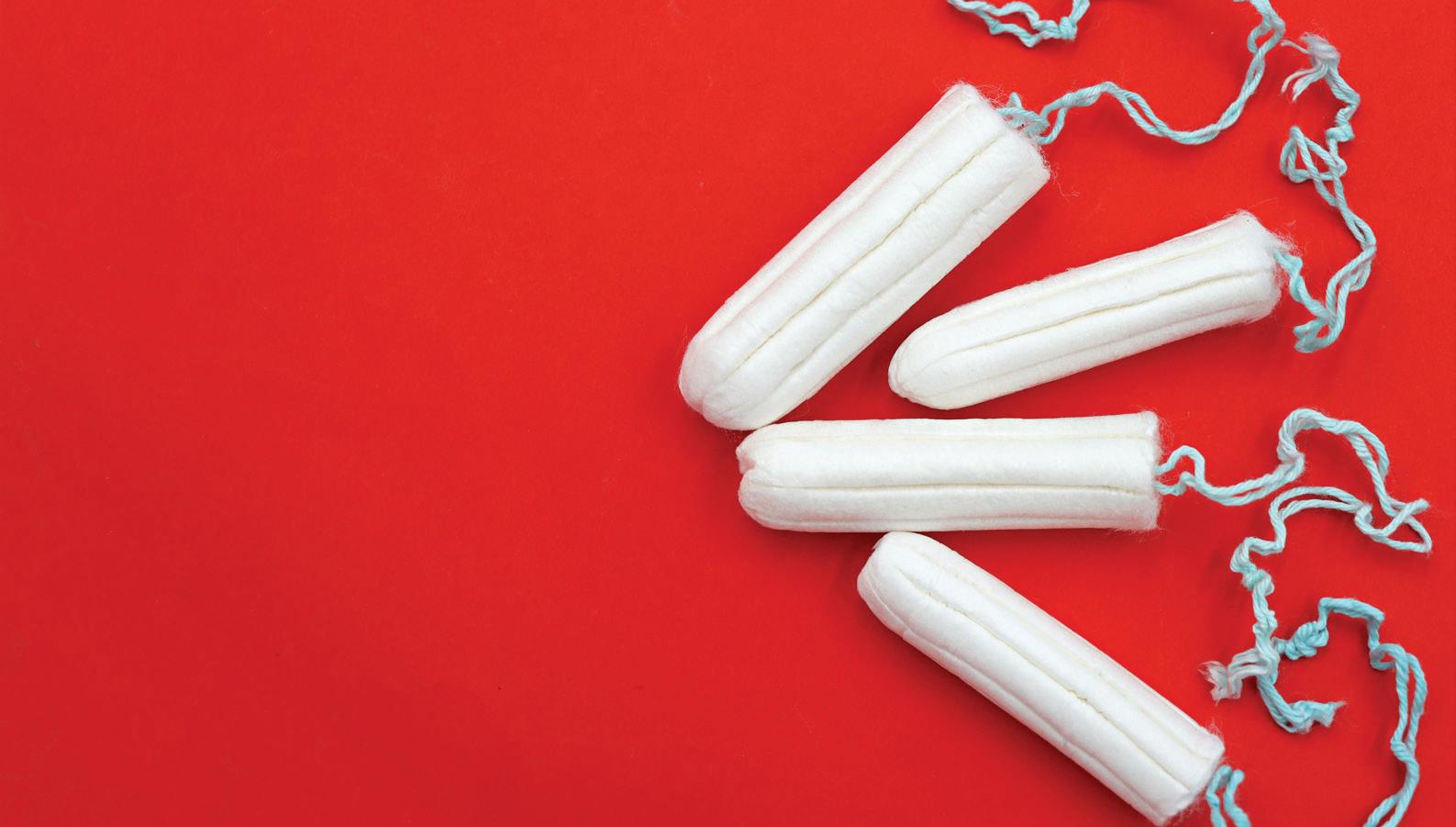
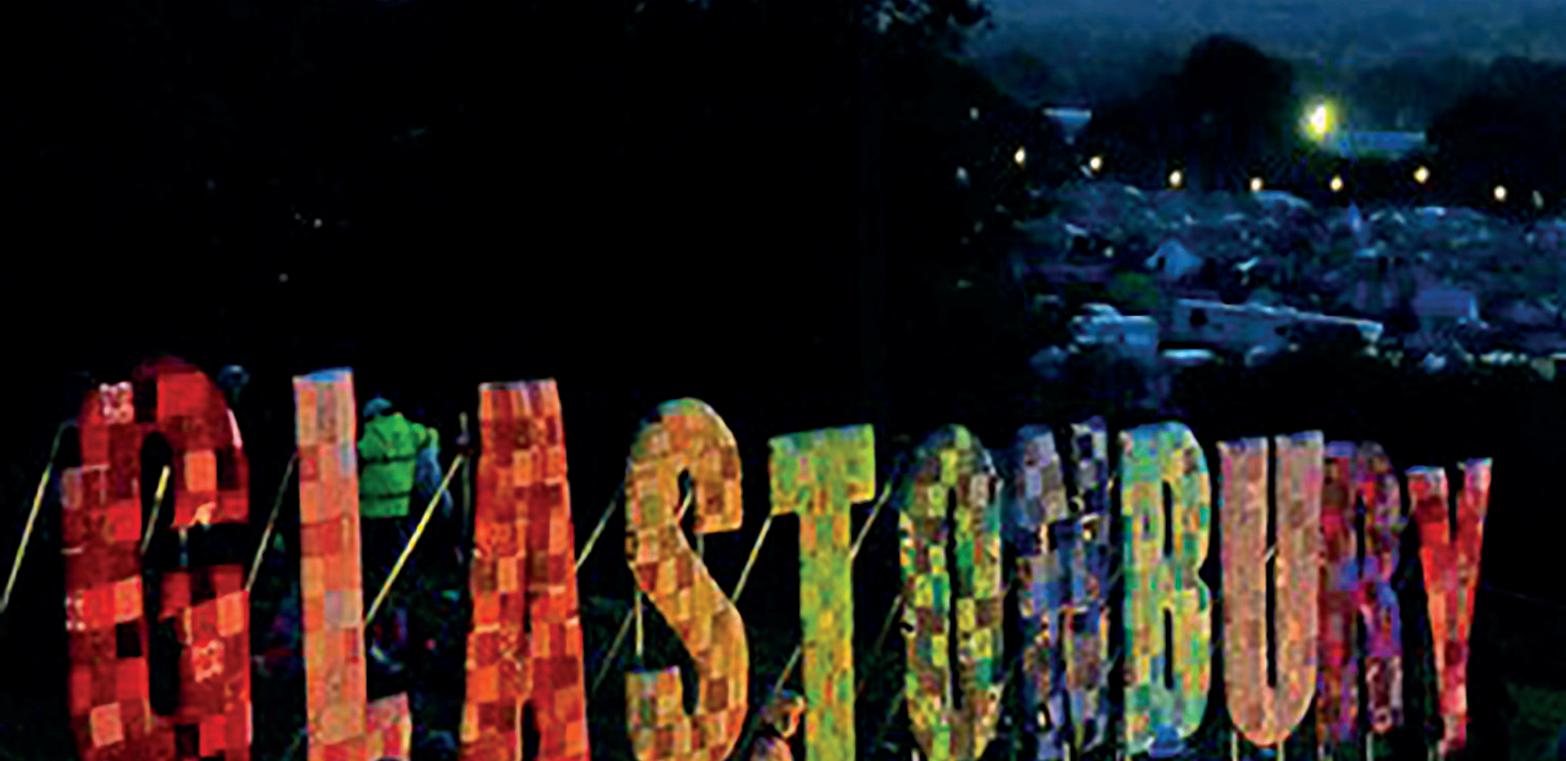




DO you want to make the most of the sun and escape Exeter for the day? Let me suggest two good day trips to help you escape university stress for a few hours. Thankfully, Exeter is well-connected by train to many surrounding areas, and one of my personal favourites is Lyme Regis! It’s a simple trip, take a 40-minute train from Exeter St Davids to Axminster for under £10 return with a railcard, then take either the X51 or X53 bus from outside the station to Lyme Regis which is 20 minutes long.
Once you are there, you can browse the local shops, ranging from small independent cafés, craft stores, and seaside pubs. Have an ice cream or fish and chips takeaway from the booths that line the
beach and enjoy the fresh sea air, sunbathe on the beach, or maybe a cold dip in the sparkling sea. Personally, my favourite thing is to walk further along the coast, probably 15 minutes to reach the famous ‘fossil beach’. This is where Mary Anning discovered the first complete fossil skeleton of an ichthyosaur and since then, many have ventured to the beach in search of fossils. Even if you aren’t interested in looking for fossils, you can go view the ‘fossil ammonite pavement’ or just enjoy the dramatic, beautiful views of the Jurassic coast. If the coast isn’t your scene, then another day trip from Exeter is to venture into Dartmoor to enjoy the vast landscape. A classic postcard picture of Dartmoor is often of a Tor and here is a great
Lone to visit. A popular spot is to hike to Combestone Tor. Only a 45-minute drive from Exeter, park in the national carpark at Dartmeet and walk across the river by the road and follow the footpath left through the neighbouring fields. Cross the West Dart and follow the trail uphill through the woods to Combestone Tor and enjoy the expansive view back across the valleys! If you want to extend your walk, head south from the Tor following the grassy path until you reach Horn’s granite Cross, turn left and head towards Venford Reservoir and then circle back to where you have parked. Hopefully, these day trip ideas have got you thinking about getting out in the sun and making the most of what Devon has to offer!

OCATED on Magdalen Road (and I may be biased since the road name is almost identical to my name), is The Common Beaver. Aside from their cute logo, incredible homemade bagels and cakes baked by the Exploding Bakery local to Exeter, their coffee is just excellent. They offer just about every type of coffeebased drink you can imagine, and the consistency of each speciality drink made is always top-notch, with excellent latté art and tasting notes of the coffee shining through. Luckily, there is also an option to take a bag of coffee beans or ground coffee home, which makes the perfect gift for any coffee lover. Though the place is pretty small, they still have some charging ports if you need to do any quick studying, and their outside area allows for a good level of people-watching should you need it to keep focused. If you’re ever nearby, I definitely recommend checking out The Common Beaver! Magdalena Kanecka, Online International Editor
THERE are many amazing cafés that have some great coffees available in Exeter. However, personally I love Mango’s. Whether with my friends or my family, Mango’s offers so many options for food and drink, suiting any time of year and any mood. It is right on the Quay which in the warmer months makes it so lovely to sit outside and enjoy the surroundings along with a delightful coffee. For those who love coffee, Mango’s offers one of the best in Exeter and it can be enjoyed along with a cake or pastry to compliment. Another one of the great things about Mango’s café is the experience; you can sit right on the Quay or enjoy the cosy and comfortable atmosphere inside. Therefore, I believe Mango’s does the best coffee and the atmosphere around the café makes it even better
Hayley Bell
YAOU know this place’s coffee is incredible since there’s already an Exeposé article about it. But no amount of praise could describe how wonderful the Pink Ginger Flower café is. They not only offer brilliant coffees and a variety of teas but one of their unique selling points is their authentic matcha and hojicha lattés. Pink Ginger bakes regular roll cakes, choux buns, basque cheesecakes and tiramisu, often sold out by 3pm. Going to this café is truly life-changing, the wait time and the fights for the seats are worth it. Something worth waking up early for, the interior is filled with fresh flowers and the smell of oven-fresh choux buns. They don't only offer just caffeine but also flower workshops, where you can learn to create the most beautiful bouquets while enjoying your daily shot of caffeine.
Yasmine Al-Saket
Harry Morrison, Music Editor, tells us about a new student-led running club in Exeter
FRESH and dynamic student-led initiative has landed at the University of Exeter, fostering a community where individuals from diverse backgrounds come together to share a common interest in running. Designed solely on the principles of community, socialising and lifestyle, Pacexeter is attempting to go outside the norm of running clubs — it’s evolving into a movement that embraces social connection, health and personal growth for all members. I had the opportunity to speak in person with two members of Pacexeter, George Gero and Ethan Gallant, to hear their exciting perspective on this blossoming community. The team has grown into an eight-person student-led running club, all sharing different skills and talents that have helped with the quick growth of this initiative. With 90
students attending their first five-kilometre run. Throughout our conversation, it became clear that Pacexeter was all about its community and is continuously being built by its members. At the centre of the club lies individuals, for whom they aim to create an environment where students can connect beyond the academic pressures of day-to-day life. We’ve all been there, the narrow mindset that the only way to social -

ise at university is to go to TP or the pub with friends, however Pacexeter is challenging this narrative and kickstarting the promotion of a healthier lifestyle. Accommodating to all abilities, Pacexeter believes that running with a community and others helps push individuals for succeeding in their pursuit of a healthier lifestyle.
Pacexeter has grown at an incredible rate since the beginning, and it looks like it isn’t going
to stop any time soon. From sponsorships with companies like Gary Lineker’s Drink company Hearth, to promotion via social media, the club has already built a strong presence on campus. With visions in the next year to spread this club internationally in locations like Barcelona and Austin in Texas, the club wants to expand its message. For students looking to ride the wave of this thriving community, Pacexeter offers the perfect space to run, connect and grow as individuals. Their message has been clear in bringing people together through movement, community and socialising. For those wanting to try something new, get healthier, or even connect with new people, the Pacexeter community is waiting with open arms.
Eloise Grainger, Sport Editor, shares ideas to make sure birthdays are not overlooked at university
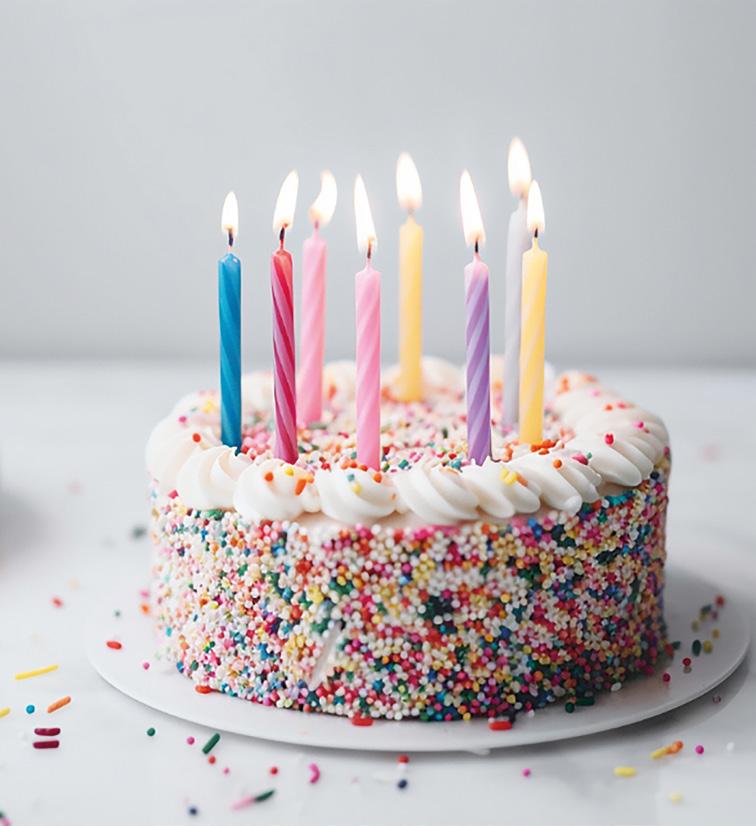
BIRTHDAYS should be a special celebration no matter where you choose to spend them. Whilst being at uni, you may achieve some huge milestones, such as the 20th birthday marking the end of your teenage years; the 21st where you are legally allowed to do pretty much anything; or maybe you’re a mature student reaching the mid-20s mark. There are some great ways to make sure you celebrate birthdays at uni in a unique and fulfilling way. Take advantage of some of the great venues in Exeter — perhaps
visiting your favourite pub or nightclub. I know Firehouse’s square pizzas with a pint are always a win — but how do you ensure this doesn’t feel like every other night out?
I find there are two good routes to take when planning a birthday bash. Either try something completely new or put a spin on what you normally do for a night out.

TRY SOMETHING COMPLETELY NEW OR PUT A SPIN ON WHAT YOU NORMALLY DO FOR A NIGHT OUT
For the former, Exeter has a number of excursions to try. You could visit the Donkey Sanctuary, go swimming in the sea (providing it’s warm enough or you’re not afraid of a cold plunge), or have a picnic at a scenic spot on Dartmoor. We know Exeter is a sporty city, so you won’t be stuck for ideas if there is an activity you want to try out, such as tennis on the courts outside Mardon Hall, or kayaking at the Quay. Or, putting a spin on something you know you already like will mean you’ll enjoy whatever you choose to do, but ensures that it doesn’t fall into the same continuous night out formula like a TP Wednesday. Take my
21st for example, I love a cocktail and dressing up, so I gathered my closest friends, we donned our best Exetah looks, and went to a bar to start the night. Rather than going to my usuals, I made a reservation at Becketts Rooftop bar to enjoy the sunset overlooking the Cathedral and Devonshire hills. This meant I could get my mandatory mimosa whilst scoping out a new drinking spot. We then headed back to my place and decked out the kitchen with balloons, wildflowers and fairy lights. I whacked some frozen pizzas and garlic bread in the oven whilst we all chatted — it was lovely to get people from all different parts of my uni life to come together. One tip is to send invites early if you know you want a gathering of several people, especially if you need to book reservations! A nice touch was I added a place where people could write little notes to me, which was lovely to look back on and remember the day. My first-year flatmates baked a cake and bought me a birthday girl sash for me to wear all night, which was a really heartfelt touch. Simple acts of kindness such as baking (even if you are bad at it — I’m surprised my housemate didn’t burn the house down!), birthday decorations, and little keepsakes are lovely ways to enjoy the day and remember it years after graduation.

Gracie Moore, Editor-in-Chief,
offers a candid take on her experience with heavy menstrual periods
WAKING up in a cold university house in the heart of winter for an 8:30 seminar in Peter Chalk can be made worse by only one thing: the immediate and pressing need to run to the bathroom to change your tampon it’s period week. Most people who menstruate dread the arrival of their period, a waiting game on the tracking app while you watch the notifications go from “Happy ovulation day!” to “You will be more sensitive today” to “Your period is expected tomorrow”. Many will have three to five days of relative ease while they bleed, a negligible inconvenience as they continue with their daily lives. For me, most of my schedule revolves around my cycle and the eight days of bleeding I endure each month.

MOST OF MY SCHEDULE REVOLVES AROUND MY CYCLE AND THE EIGHT DAYS OF BLEEDING I ENDURE EACH MONTH
This is because I have undiagnosed menorrhagia, excessively heavy or prolonged menstrual periods that can significantly impact the wellbeing of the menstruator. You may be wondering why this is undiagnosed, how can I possibly know for sure if a doctor hasn’t told
me directly? Because doctors don’t do that enough. March is Endometriosis Awareness Month, for example — a nod to the undiagnosed female repdroductive conditions that are never correctly treated. Being a woman trying to have something diagnosed is often the equivalent to bash ing your head against the wall.
Reproductive conditions like this are hardly cussed within or medical fields. It was only a year ago that I discovered most of my friends who menstruate do not, in fact, have to set an alarm for the mid dle of the night to change their tam pon, at risk of waking up in a pool of blood if they do not change it through out the night. They also don’t have to stock up on tampons and sanitary pads like they’re going out of fashion.
the biggest size tampons possible and the sanitary pads so thick they revert you right back to life as a toddler in nappies. But I’ve realised the shame is unnecessary. The most absorbent products were created for this reason and they are there for our comfort.
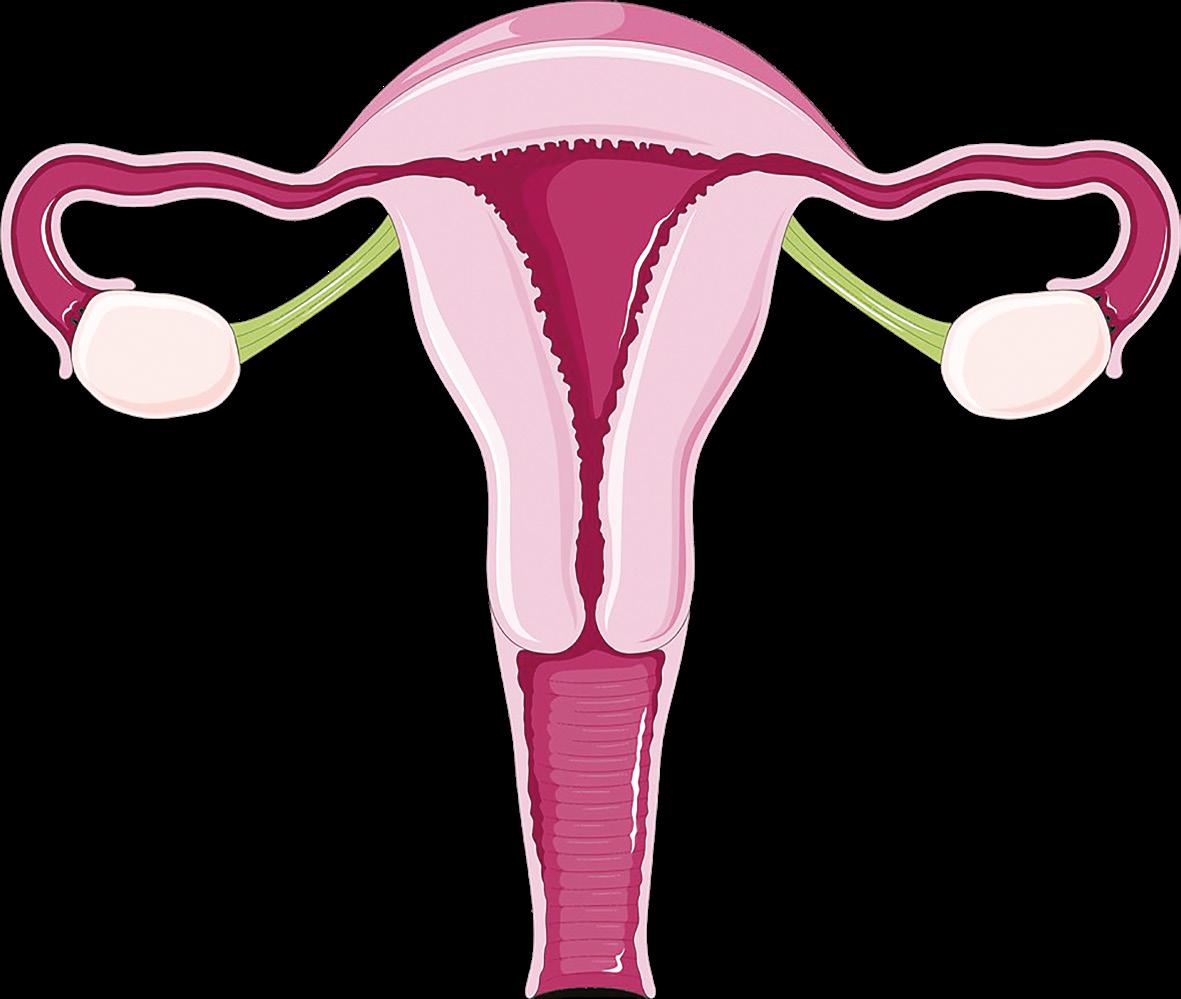
The most common complaint about periods is the cramps. Debilitating as they are, pairing them with excessive bleeding and concerning clotting makes them much worse. I used to be so embarrassed to have to buy
The National Institute of Health report that around 1 in every 10 women experience some kind of chronic heavy ing durmenstrual cycle, meaning we are not alone in this. I have cancelled events because of the heaviness of my period. Never in the first four days of my cycle will I go swimming, wear pale colours, be able to make use of the free products available on campus, feel comfortable while playing netball, or fully enjoy sex. This is ok when I consider the destigmatising of menstrual blood. Me, along with my fellow heavy period sufferers, can start to make peace with our symptoms when we see the media and medicine taking it seriously. Advertising menstrual products using a product that looks like blood has been a
fantastic start and companies engaging with Endometriosis Awareness Month bring light to a problem that needs urgent attention.

A PROBLEM THAT NEEDS URGENT ATTENTION
Heavy menstrual bleeding has been a part of my life for many years now and not something I’d wish upon anyone else — but it is also something I improve on navigating every single month with the help of my supportive friends and family.
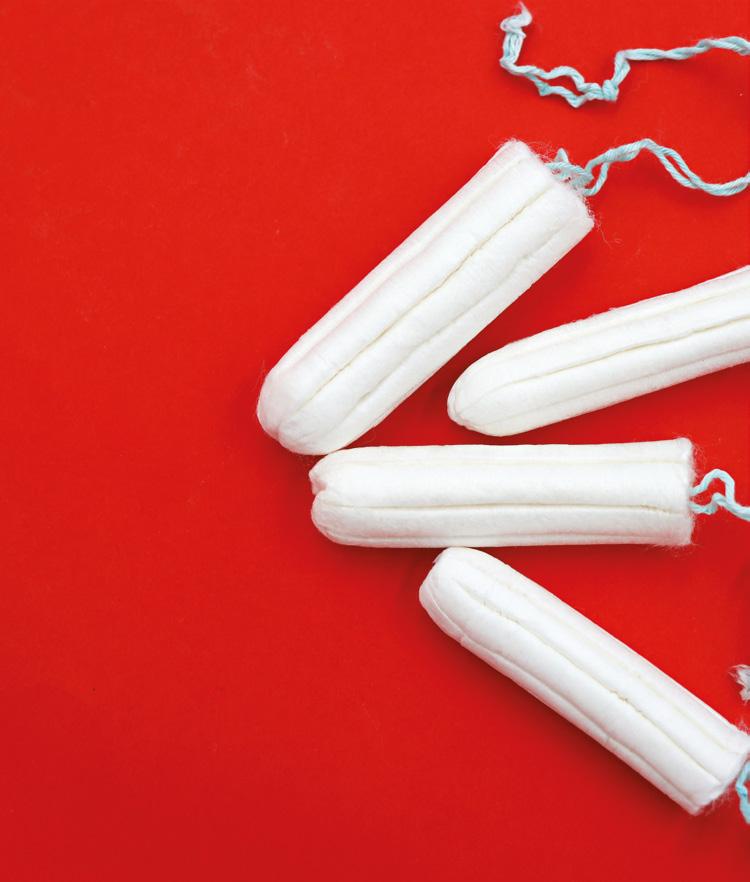
Arts and Lit writers talk about their favourite lines in literature
“You do not have to be good” “Alone, I remember now” “I am losing some illusions ... perhaps to acquire others”
ALINE from Mary Oliver’s poem Wild Geese is one that has stuck with me since reading. The poem opens with; “You do not have to be good.” This line speaks to the freeing idea that we do not need to meet impossible expectations or strive for perfection. As implied by the title, this poem suggests embracing our true selves, accepting our flaws, and reconnecting with nature’s simple, raw beauty. Wild Geese tells us that we are part of a larger, forgiving world, where we can find peace by being authentic. The imagery of the wild geese soaring freely in the sky contrasts with human pressures to conform and be “good.” This poem resonates with me because of the weight we often carry, trying to meet unrealistic standards. The poem, like writing and reading, offers a space where we can shed expectations.
Molly Thornton
ONE of my favourite lines from any poem is from Maya Angelou’s poem In Retrospect. The closing line “Alone, I remember now” after her vivid description about the arrival of spring reflects an unspoken feeling that we’ve likely all experienced at some point. The slow unfolding of warmer weather, pretty flowers and melting frost can easily go unnoticed when we are wrapped up in feelings for someone else. Your whole world becomes consumed by that person and you lose touch on the real world. The sadness evoked by “Alone, I remember now” as she experiences her first spring without this person is tangible and after reading this poem for the first time on my year abroad, it was a forcible reminder that beautiful things are all around me. If I spend all my time overthinking, I cannot truly take in the beauty of it all until it is too late. Thankfully, the poem’s message made me stay present and grounded during my year abroad and I now have no regrets at all.
Gracie Moore, Editor-in-Chief
HAVING understood little of the novel itself, one line in Virginia Woolf’s Orlando stuck with me, and changed the way I think about growing up and moving on. Orlando, who lives for over three hundred years, stands by as her life faces constant and drastic changes. At one point Woolf writes: “I am growing up,” she thought. ... “I am losing some illusions... perhaps to acquire others.” This simple and powerful line is both optimistic and innocent about the inevitability of change, and has given me a different perspective on my university days coming to an end. Admitting that things are shifting makes me anxious, but Orlando’s absurd journey will teach you that with every loss comes something new. Change is inevitable, and adapting is part of moving forward, not only of leaving behind.
Judy Dodd, Arts and Lit Editor
popularity
PODCASTS have become a primary medium of entertainment in the past few years. With the rise of music streaming services, podcasts have become an easy way for anyone wishing to have their own voice heard with a low budget and little to no interference from production companies or publishers. This has led to a vast range of podcasts, in turn allowing anyone to find a podcast that suits them. Podcasts have the same appeals as any media — education, entertainment — combined with those of music: the ability to enjoy without having to look at a screen or page, making them perfect for running or driving.

IT IS THOUGHT THAT STORYTELLING IS AS OLD AS LANGUAGE ITSELF
This is hardly the first time we as a species have derived entertainment from audio. It is thought that oral storytelling is as old as language itself; as long as we have spoken, we have sung stories. Only after the advent of writing did we codify stories, beginning with the stories we had already been singing. The epics of Homer in Greece, of Gilgamesh in Mesopotamia, of the Vedas in India; these were all originally oral, accompanied by music. Written poetry soon branched out from there, and eventually prose was composed. But,
stories told orally are by no means a thing of the past. Plenty of cultures world-wide still pass down their storytelling in this way, even having traditional storytelling professions. Of course, it’s questionable that one can truly compare these musical, narrative-driven oral stories to podcasts,
turn to the recent trend of ‘re-watch’ podcasts — going episode by episode of a TV show, often featuring cast-members, and reexplaining episodes. Is this not similar? Each podcaster, as each bard, has their own version, own interpretation of the same, well-known story.

which are often more free-form and conversational, without a storybased structure. Perhaps oral stories are closer to audiobooks — almost a reverse oral tradition: first they are written and published as books, then recorded for audio. But we are now creating made-for-audio-books: audiodramas and full prose stories written just for that medium, like the radio-plays of old. However, there are still aspects which podcasts have more in common with our storytelling origins than audiobooks. Podcasts are episodic, not dissimilar to the poems of
Homer, for example, intended to tell one long story a portion at a time. This could be performed over several nights, or in specific ‘episodes’ upon request. The conversational aspects of podcasts harken back to the origins of theatre in Ancient Greece: before playscripts were written down, they were choir-songs, which developed into improvised conversations between singers playing different roles, eventually becoming fully-realised drama. The key difference between oral tradition and any modern story is permanence. Podcasts, like most entertainment, are recorded, whereas the impetus of oral traditions is a lack of reliance on other recording techniques. Thus, storytellers memorised and retold their stories to pass onto the next generation. This resulted in unique versions of the same tale depending on from whom you heard it. Surely podcasts, being permanent, don’t have equivalents of such variations? One may

THE KEY DIFFERENCE BETWEEN ORAL TRADITION AND ANY MODERN STORY IS PERMANENCE
The human instinct of the oral tradition endures. Children pass on their stories, songs and the rules of their games around the playground. Scary stories are told around the campfire, satisfying our morbid curiosity, not unlike true-crime podcasts. There are even literary podcasts, with many publishing houses having their own podcasts, and others like Backlisted or the New Yorker podcasts, which allow the ‘new oral tradition’ to contribute to literature, as the old. The accessibility of podcasts invites the whole world to take a seat around the campfire and listen, taking part in a long-held human tradition.
Judy Dodd
EDITORS: Judy Dodd and Kayleigh
EMERALD Fennell has recently confirmed Margot Robbie and Jacob Elordi will star in her adaptation of Emily Brontë’s Wuthering Heights . However, there has been a lot of discussion around if this is the correct casting choice. Why is a book-accurate casting so important? Why is the novel still a fan favourite?
Let’s first talk about the casting of the white, Australian actor Jacob Elordi as Heathcliff. This choice comes as a huge surprise given that in the novel, Heathcliff is given dark features and skin. This characterisation means he is visibly different to the other white characters, reinforcing his status as an outsider. It is this physical and social difference that creates the novel’s key romantic tension; Catherine chooses the rich, white Edgar over Heathcliff
Gbecause it is more socially acceptable. Erasing this visible difference by casting Elordi would, therefore, remove an essential facet of the plot. Relatedly, it is clear that Fennell has chosen to cast two conventionally attractive actors in her lead roles. This troubled many fans as the novel’s central aesthetic is rugged and unkempt, with iconic imagery of Catherine running through the Yorkshire moors between the two rival estates in stormy weather. Casting famous and glamorous actors in the lead could obscure this vision. Although not impossible, it will surely be a challenge for Elordi and Robbie to separate themselves so drastically from their public image for this film. I also spoke to a fellow English student at the University who voiced her concerns over the potential romanticisation of Heathcliff with
Elordi in the lead: “if we see a conventionally attractive celebrity in the role of Heathcliff, it may threaten to romanticise him and detract from his severely flawed character.” Declarations of love for Catherine, like “be with me always — take any form — drive me mad!” already allure novel readers. Such lines attempt to overshadow Heathcliff’s violence; he throws a knife at Isabella and even kills her dog. Casting Elordi may exacerbate this effect, meaning we purely see Heathcliff as a romantic lead, rather than a deeply troubled antagonist. It is a testament to Brontë’s novel that readers are so desperate for a faithful film adaptation. I think part of what makes Wuthering Heights so successful is the romantic struggle at the novel’s heart, and the dramatic setting in which it takes place. If Elordi and
Robbie do struggle to blend into the Yorkshire moors backdrop and don’t fit the physical descriptions of the characters, then I worry if the film will be able to capture the novel’s essence. I hope that despite these concerns, Fennell can create an adaptation that does justice to such an exceptional source material.

RAHAM Greene is, in my opinion, one of the best novelists of all time, if not at least of his time. So far, I have read two of his books, The Heart of the Matter and The Comedians , and I am currently reading The Quiet America . On a day trip to Bristol, for the bargain price of £9 in The Last Bookshop, I picked up two more of his books — Our man In Havana and Travels with my Aunt . By no means am I an expert on Greene but my passion should be obvious, and hopefully I can explain why. He had a thirst for adventure and loved to travel, which had a profound effect on his
writing and the creation of ‘Greeneland’. His location building is immersive because he had always visited and lived in the places he described, often the “underbellies” of the world at the time such as French Indochina, Haiti and Sierra Leone. The descriptions are vivid and accurate, drawing you in. His characters too are varied and believable, and the plots understated but nevertheless gripping and interesting. The prose is easy to read, often making his books page turners. On the other side, they also have great literary and social merit. He had his ear to the ground and always wrote with purpose and
intent. The Quiet American predicted and objected to US involvement in Vietnam. The Comedians vividly narrated life under the Haitian dictatorship of Papa Doc and his Tontons Macoute. The novel is a window into a country and political situation that is not often discussed.

THE NOVEL IS A WINDOW INTO A COUNTRY AND POLITICAL
Greene held a Catholic Agnostic stance, which he never fully resolved, and this ten -
Csion is often found in his books. This led to questions of good and evil, morality, sin and absolvement all throughout his work. Finally, all the above meant that Greene’s use of locations meant the books were perfect for adaptation into film. The Third Man , based on a novella by Greene and his screenplay, is often voted one of the best films of all time. In fact, his books have been used as a basis for 66 films between 1934 and 2010. If you like an easy read that will also feel like you are culturally enriching yourself, you can do a lot worse than pick up a Greene book.
RISTINA Varga is a Plymouth-based performer and the co-founder of Everything But Theatre, alongside Danni Watmore. She’s coming to the Exeter Phoenix on the 28th March with her comedy show, Close Enough. Inspired by her experience moving to the UK from Romania in 2019, three months before Brexit, the show makes light of her journey, “tell[ing] the story of what it was like for [her] to face a different culture and to adapt.” She adds, “it’s a comedy that shows the differences between cultures and what it’s like to be a foreigner in the UK, something that, especially at this time, is important to hear about.” Exeposé spoke to Cristina about her creative processes and how she navigates the modern creative arts landscape. On Instagram, Cristina markets her show through comedy reels; some of these show her eating and feature a casual mention of the show, while others take us behind the scenes to rehearsals and her theatre company admin. ”I’m trying to get out there as much as I can,” she told us. This hasn’t always come naturally to her, though: “It’s been years of my friends and people who come to my shows telling me I need to put stuff online, and I struggle with that. I feel exposed, I feel seen, maybe judged, but I feel like I need to accept that, because this is how the world works nowadays. If you’re not on social media, no one’s gonna know that you exist and what you’re doing.”
Her company’s name is a tongue-in-cheek play on the pressure of the modern theatre industry,
which she says really does feel like everything but theatre: “as artists nowadays, you need to do literally everything but your actual job. You need to learn so many things.” Engaging with potential audience members on Instagram is part of how she approaches this, although she emphasises her anti-spoiler approach: “I don’t want to ruin the experience for people, but I still want to give them the feel of the show.” When her company started, she said, she “used to be everything: the producer, the stage manager, the tech, the performer, the writer.” Now, though, she’s “very happy” to say that her “friend and colleague, Danni, is taking over the assistant producer role.”

Exeposé asked Cristina whether she thinks part of her show’s charm is in its element of surprise. Her response was undoubtedly fuelled by her own experience as an audience member. “I know myself,” she admitted. “When I’m an audience member, I just enjoy seeing things for the first time. I hate spoilers — I don’t want to know anything. I usually don’t even read what the show is about. I just go and watch it and allow myself to be surprised.” She added candidly, “the audience’s experience is the most important thing, although it is a hustle to get
people to see the show. I don’t know how I’m doing but I feel it’s difficult to convince people that your show is worth it.” Cristina is honest about the trials and tribulations of narrowing down the show’s demographic and finding the right audience. Ultimately, though, she seems to believe that there is no right audience: “It sounds terrible, but it is for everyone. It’s not easy, when you’re trying to market a show, because the better you know who it’s for, the better you know how to bring people in, but we want to keep it open and hopefully it will work.” Close Enough isn’t generic about British culture. Cristina has lived in Plymouth for years and identifies predominantly with the culture of the South West when it comes to her experience of the UK; her tour will cover Gloucestershire, Devon and Cornwall. She suggests that the show’s narrative is both relatable and personal. The idea came from a song she wrote while studying at the University of Plymouth: “It came out of nowhere. […] I had that song in mind, and I thought, what is it that I can share from my own life experience? What is it that might be interesting for others to hear? I started writing stories and I shared them in our classes, and I got really good feedback. I continued to work on the idea and stories just came up.”
responsibility, to be on stage in front of people and to ask them to buy a ticket to see something that you’ve created. It took a long time, the creative process.” Despite being comedy, Cristina feels Close Enough is still representative of real life, telling us, “I don’t believe in happy stories that are happy all the way through. Life has ups and downs, and that’s how a show should be as well.” Those ups and downs weren’t the be-all and end-all for Cristina, though, who recognises how far she’s come since she started writing it.

LIFE HAS UPS AND DOWNS, AND THAT’S HOW A SHOW SHOULD BE AS WELL AS ARTISTS NOWADAYS, YOU NEED TO DO LITERALLY EVERYTHING BUT YOUR ACTUAL JOB
“Looking back, five years later, I can see that [some] things are just an episode in the whole series of my life. Sometimes it’s just an episode that you need to get through.”
The show originated as Cristina’s dissertation project. After a year earning more life experience outside of university, she returned to it, this time with a conclusion in mind: “I came back to it, and […] I knew what I needed to talk about. It’s a big

KING Charles III’s newly unveiled Apple Music playlist, The King’s Room , is raising eyebrows. There are songs here that we would expect from the 76-year-old monarch. Al Bowlly’s velvety vocals and even Michael Bublé feel relatively on-brand. But the playlist takes a sharp turn with the likes of Bob Marley, Beyoncé, Diana Ross… and Davido?
The selection here is unexpectedly eclectic and refreshingly upbeat, but it feels carefully curated to celebrate Commonwealth Day. With nods to genres as
diverse as reggae, pop, disco and Afrobeats, it brings up the question of whether this truly is the King’s personal taste?
The playlist feels like a balancing act. The familiar, old-world charm on one side, and a conscious effort to embrace diverse sounds on the other. While I’d love to imagine Charles III bumping Davido and Daddy Lumba on a drive with Camilla, it feels a bit like when Obama put Charli XCX in his 2024 summer playlist.
We will never know for certain if Charles genuinely enjoys reggae or Afro -
beats, but the whole ordeal feels like an attempt to modernise and humanise the monarchy, rather than to reflect his personal taste. At the very least, it’s interesting!

Four Music writers share their favourite songs which the Academy recognised as Best Original Song nominees

MY favourite Best Original Song at the Oscars was the 2011 winner, 'Man or Muppet', by Bret McKenzie. Whilst other winners and nominees thoroughly deserve their place for their incredible song writing and cinematic reference, 'Man or Muppet' is a cult classic that consumes my kitchen far too often. The catchy lines and harmonic duet fill me with a fun, childlike joy every time I sing along; it is the perfect karaoke song for you and your best friend and never fails to make a crowd smile. Whilst many award winners have ground-breaking musical prowess, they lack the ability
Nto be belted out in the kitchen, shower or over a bottle of wine with friends. Following a 'Man or Muppet' filled first term, involving much singing and dancing in my house, I proceeded to take my university shenanigans home over Christmas. After consistently aggravating my parents by singing it on repeat, I was thrilled to walk past their bedroom only to hear to sound of my stepdad belting out 'Man or Muppet' to my mum whilst she laughed! I think the best songs are those which bring friends and families together to laugh, dance and sing; give 'Man or Muppet' a listen to and I promise you won’t be disappointed.
Winner: '(I've Had) The Time of My Life'
OBODY puts Baby in a corner. And nobody forgets that movie finale — the one that made us all believe we, too, could be lifted into the air like Jennifer Grey, if only we had the right song playing. Enter '(I’ve Had) The Time of My Life' by Bill Medley and Jennifer Warnes, the ultimate '80s power duet. Released in 1987 as Dirty Dancing ’s iconic theme, it became a cultural phenomenon, winning an Oscar, a Golden Globe, and a Grammy. But what keeps us belting it out decades later? For starters, its emotional power is undeniable. The slow, romantic buildup? Perfect. The euphoric chorus? Unmatched. That moment when the beat kicks in and you feel like you should
be spinning across a dance floor? Pure magic. Lyrically, it’s a celebration of love, freedom, and nights worth remembering. Then there's the sound. Funky beats, violin flourishes, the iconic sax solo, and the unbeatable mix of Medley’s deep vocals with Warnes’s powerhouse range — it’s pure serotonin. And let’s be honest, nobody hears those opening notes without picturing the lift (even if most attempts end in disaster). Nearly 40 years later, this song still does exactly what it was meant to do: bring people together and make every dance floor feel like a movie moment.
Jasmine Payne, Online Lifestyle Editor
N 2018, ‘Mystery of Love’ was nominated from Luca Guadagnino’s queer romance Call Me by Your Name. Although ‘Remember Me’, the winner from the Pixar animation Coco, is undeniably charming, ‘Mystery of Love’ stands as the clear winner for me. The song perfectly encapsulates the film’s enduring whimsicality and helpless romanticism. Sufjan Stevens’s light and heady singing voice floats gently over the lulling mandolin. What’s even more impressive is that Stevens wrote the piece before the film was shot, instead capturing the aesthetic essence from the film’s screenplay and André Aciman’s source novel. ‘Mystery of Love’
'Eplays whilst Elio and Oliver travel through dirt tracks in the forest, climb hills and admire the cascading waterfalls of rural Italy. Just like the rich green colour palette of the scene, the song feels luxurious. Yet at the same time, it is also strikingly simple; with only a few instruments, the production is elegant and pure, just like the romance at the film’s heart. Simply put, the song is beautiful. Without having even watched the film, Stevens was able to create a piece that sonically captures the visual indulgence of the northern Italian landscape, and the tender love story that blossoms there.
Winner: 'El Mal'
L Mal', the standout track from Jacques Audiard's 2024 film Emilia Pérez , won Best Original Song at the 97th Academy Awards. Composed by Clément Ducol and Camille, with contributions from Audiard, this rap-rock fusion is performed by Zoe Saldaña and Karla Sofía Gascón, with Camille providing backing vocals. The song marks a pivotal moment in the film, as Saldaña's character delivers a scathing critique of criminals who donate to a nonprofit founded by Gascón's Emilia Pérez. Transitioning from rapid-fire rap to melodic rock, it reflects the film's genreblending nature. Critics have praised 'El Mal' for its energy and thematic depth. Michael Ordoña of The Los Angeles Times called it a "showstopping, rock-rap denunciation of poisonous hypocrisy," while Stephanie Zacharek of Time highlighted its Bollywood-inspired choreography and role in exposing the event's benefactors. Saldaña’s
Victoria White
vocal and physical performance has been widely lauded, with many considering it the film's high point. More than just a musical interlude, 'El Mal' serves as a sharp commentary within the narrative. The Academy’s recognition underscores its impact, marking a major achievement for Ducol and Camille, who earned their first Os cars. Its fusion of diverse musical styles and incisive lyrics so lidifies Emilia Pérez 's place in contempo rary cinema.

Yasmine Al-Saket evaluates the impact of government AI policy on the music industry
THE government aims to foster an ecosystem where AI companies can grow and innovate with minimal barriers. This growth hinges on the ability of these companies to train AI systems using the creative works of songwriters, rights holders, and other human creators. However, without robust copyright laws, such works could be used without the creators' consent or pay. The government has proposed an EUstyle opt-out system to address this. This proposal has faced strong opposition from the music industry, which argues it fails to adequately protect artists, labels, songwriters, producers, sound engineers, and all the other professionals. This is largely because an opt-out system is inherently complex and difficult to manage, as creators would need to navigate and opt out of each AI company’s policies individually. This cumbersome process places an impractical burden on creators, making it nearly impossible to effectively protect their works.

THIS PROPOSAL HAS FACED STRONG OPPOSITION FROM THE MUSIC INDUSTRY
Over 1,000 musicians including Kate Bush, Ed Sheeran, Dua Lipa and Sting, released a silent album titled Is This What We Want? to protest the government’s proposed changes. The album has recordings of empty studios and performance spaces, symbolising the government’s impact on musicians’ livelihoods. The 12 tracks spell out a mes-

sage that reads, “The British Government must not legalise music theft to benefit AI companies”. Industry leaders such as UK Music Chief Executive Tom Kiehl, alongside global legends such as Sir Paul McCartney and Sir Elton John are avidly against the proposed change, with McCartney warning of a “wild west” where artists’ copyright is unprotected. He urged the government to think again: "We’re the people, you’re the Government!”. The music industry has united under the Creative Rights in AI Coalition (CRAIC), comprising publishers, artists, unions and photographers.

GLOBAL LEGENDS SUCH AS SIR PAUL MCCARTNEY AND SIR ELTON JOHN ARE AVIDLY AGAINST THE PROPOSED CHANGE
CRAIC launched the Make it Fair campaign, using national newspaper ads to urge the public to object to the government’s plans to highlight how their content is at risk of being given away for free to AI firms. The industry had until February 2025 to advocate for creators and oppose the opt-out system. In a significant development, the House of Lords voted 145 to 126 on the 28th January to amend the Data (Use and Access) Bill, strengthening copyright protections for creators. This vote marks a setback for the government and a win for campaigners safeguarding music creators’ rights. The industry continues to push for fair treatment, ensuring creators are compensated and their works protected in the age of AI.
Emma Castell shares her thoughts on this years Glastonbury lineup and what expecations she has
THE Glastonbury 2025 line up is here, and it’s a mix of excitement, safe choices, and a few let-downs. The festival continues its tradition of blending generations, showcasing rising stars alongside legendary acts. But does this year’s line-up live up to the hype? As I gear up for my fourth year at Worthy Farm, I can’t help but reflect on what makes this festival so special — and where this year’s line-up stands in comparison.
The 1975 headlining Friday makes sense — they’ve built toward this for years. Matty Healy’s unpredictable stage antics guarantee a memorable performance, whether it’s brilliant or bizarre. Olivia Rodrigo closing Sunday has sparked debate. At just 22, her catalogue is slim compared to past headliners, but her massive emotional ballads, powerhouse vocals, and a moment that de fines her career. Her 2022 performance with Lily Allen as a star guest was unforgettable, showing she understands how to create a defining Glastonbury moment. Neil Young’s Saturday slot caters to the classic rock crowd. His 2009 Glasto set was iconic, but this booking feels more nostalgic than thrilling. Meanwhile, Rod Stewart in the Sunday legend slot is pure crowd-pleasing fun.
mid Stage, the lineup shines. Doechii
headlining West Holts is a bold move — her genre-blending energy makes her a must-see. Charli XCX leading the Other Stage is perfect timing after her Brat era dominance.

HOLTS IS A BOLD MOVE HER GENRE-BLENDING ENERGY MAKES HER A MUST-SEE

The Prodigy’s return post-Keith Flint promises to be an emotional, electrifying moment. Some long-overdue debuts also stand out. Alanis Morissette finally gracing Glastonbury feels right, and Busta Rhymes’s inclusion adds a welcome injection of hip-hop energy. Rhianna rumours? Again, just a dream. More frustrating is the lack of true surprises — no rare reunions or unexpected icons stepping up. The indie lineup feels recycled with The Libertines and Franz Ferdinand returning yet again. They’ll be good, but where’s the freshness? Glastonbury 2025 delivers solid bookings, but its biggest strengths lies away from the main stage. While the headliners are safe bets, artists like Doechii and Charli XCX will define this year’s festival. If you’re lucky

Beth Casey in light of International Women’s Day, spotlights Zendaya’s prolific career
HOLLYWOOD and the wider film industry have long faced rightful criticism for gender inequality, particularly in the number of female creatives and the recognition they receive. Whether directors, screenwriters or actors, women remain underrepresented in leadership roles, and the gender pay gap persists. Natalie Portman’s pointed remark at the 2018 Academy Awards — “Here are the allmale nominees” — underscored this issue.
Despite this, there are a number of women stepping forward and increasing the empowerment of women in Hollywood, with countless directors like Greta Gerwig and Chloé Zhao achieving acclaimed status for their work. However, a creative whom I would like to highlight, through an examination of her prolific career, is Zendaya. I first encountered Zendaya, without knowing who she was, in one of her early films,
FZapped . 10-year-old me was unaware that this role marked one of many in her trajectory as a Disney actress, starring in other popular titles like K.C. Undercover and Shake It U p. Much like other former Disney stars, such as Sabrina Carpenter and Olivia Rodrigo, Zendaya can be considered a triple threat. She has showcased her singing in The Greatest Showman and numerous singles, as well as her dance skills on Dancing with the Stars However, her greatest success and influence lie in her acting. Over nearly two decades, her range has been both admirable and impressive. The endearing yet unflinching bluntness of her beloved portrayal of MJ in Marvel’s recent Spider-Man trilogy is so distinct from Tashi Donaldson’s calculating and unyielding narcissism in her electric summer release Challengers that it’s hard to believe they are played by the same person. Her fierce warrior spirit in the hugely successful Dune
franchise bears some resemblance to her gutwrenching lead performance as Rue in Euphoria , but each remains individually captivating.

OVER NEARLY TWO DECADES, HER RANGE HAS BEEN BOTH ADMIRABLE AND IMPRESSIVE
For the latter, at the 72nd Primetime Emmy Awards in 2020, Zendaya won Outstanding Lead Actress in a Drama Series, becoming the award’s youngest recipient at just 24. In 2022, Time magazine named her one of the most influential people in the world, and in 2015, Mattel honoured her with a Barbie doll in their empowering Sheroes collection.
Zendaya’s upcoming projects include Christopher Nolan’s The Odyssey (2026) and a return to Euphoria , where she will set a record as the
highest-paid black actress on television, earning approximately $1 million per episode. Through her trailblazing career as a young Black woman in the industry and the immense platform she has gained with it, Zendaya has been a strong advocate for social justice and diversity. Her influence cannot be understated — she humbly embodies individuality while tirelessly fighting for inclusivity.

ANS of Amazon’s The Summer I Turned Pretty are eagerly awaiting the release of season three in July this year. With this season rumoured to be the last of the series, there is much speculation around how the saga will finally end. Here are some of my predictions for the upcoming season. I personally really enjoyed seeing Belly choose Jeremiah at the end of season two. Choosing Jeremiah, who made his feelings so clear for her, seemed an example of her growth and maturity over the past two seasons. In the final episode of season two, Belly calls her mum and asks how you know when you don’t love someone anymore. She replies, “Is what you’re feeling remembering what you had together
or looking forward to what you could have?” I think that for Belly, Conrad represents the past, whereas Jeremiah shows a new and exciting future. Having said that, Bonrad seems inevitable. Even from his first intro duction in season one, where he greeted Belly in slow motion whilst Taylor Swift’s ‘Lover’ played wistfully in the background, Conrad seemed the only choice for Belly.
The previous seasons were praised for their soundtracks. Song choices matched both the aesthetic of the series and the largely teen girl fan base. Some of my favourite musical moments were Fleetwood Mac’s ‘Silver Springs’

setting a dramatic backdrop for Belly and Conrad’s fight at Susannah’s funeral and ‘Nobody Sees Me Like You Do’ by JapaneseBreakfast playing whilst Belly searches for Jeremiah in the final episode. In season three, I predict more Taylor Swift and Olivia Rodrigo, and maybe some new breakout artists like Sabrina Carpenter and Gracie Abrams. With the emphasis usually on Belly’s romantic interests, the third season might choose to focus more on Belly herself. If she does go to college at Finch, there could be some interesting scope for exploring her new life, studies and passions like volleyball in greater depth.
TSeason three of The Summer I Turned Pretty will stream on Amazon Prime in July 2025. I, for one, am extremely excited to see how this series ends.

Victoria White reflects on the 2025 Oscars and the wins and snubs it contained
HE 97th Academy Awards delivered an evening of triumphs, snubs, and debate, with some films exceeding expectations and others falling short despite strong predictions. Among the biggest talking points were Anora’s dominant performance, Wicked’s surprising underperformance, and the controversy surrounding Adrien Brody’s Best Actor win. Anora’s justified sweep: One of the biggest stories of the night was Anora’s Best Picture victory, alongside four other awards. While some were surprised by its dominance, I believe its win was completely justified. The independent film’s genre-hopping approach — blending dark humor, action, and raw social commentary — set it apart from more traditional contenders. Anora was unafraid to explore the exploitative realities of sex work, tackling how the wealthy ruin the lives of the less fortunate with no concern for the consequences. The film resonated emotionally and politically, making it a worthy winner. Zoe Saldaña won the Best Supporting Actress Oscar for her role in Emilia Pérez. She be-
came the first woman of Dominican descent to win Best Actress, but her speech fueled debate. In response to criticism that the film failed to represent Puerto Rican women, she dismissed the concerns, stating that the film reflected “the experiences of all women.” While her intention may have been inclusive, her comments were met with backlash, reigniting discussions about representation and authenticity in filmmaking. Wicked’s surprising losses: One of the biggest shocks of the night was Wicked’s limited success, despite being a heavy favourite in multiple categories. The film secured only Best Production Design, leaving fans disappointed, particularly over Cynthia Erivo’s loss for Best Actress. Many expected Wicked to perform better, but I believe its biggest victories will come next
year with the release of Part Two. There’s a strong chance the Academy tactically awarded other projects this year to ensure Wicked’s full impact is recognized in 2026 when the story is complete.
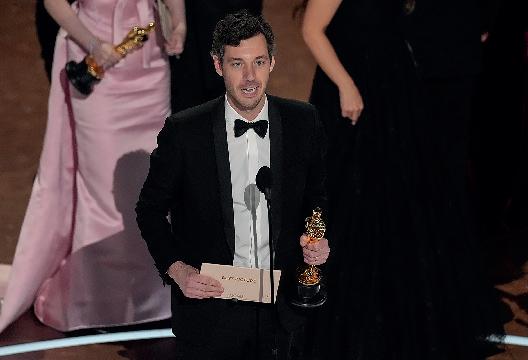
Adrien Brody’s win and the AI debate: The Best Actor category proved divisive. Adrien Brody took home his second Oscar for The Brutalist, a performance praised for its depth. However, backlash quickly followed when it was revealed that AI was used to help craft his accent, sparking ethical concerns. This was particularly controversial given Sebastian Stan’s extreme physical transformation for The Apprentice, a film many viewed as a Hollywood critique of the White House. Brody’s on-stage behavior added to the spectacle. His record-breaking five minute and 43 second speech tested audience patience, but it was his
bizarre decision to spit out gum at his wife before walking up to the stage that truly stole headlines. Whether his antics will overshadow his performance in the public eye remains to be seen.
While Anora’s sweep was deserved, Wicked’s loss disappointed many, though I suspect next year, part two Wicked: For Good will be its true moment of glory. The Oscars 2025 proved once again that no matter how many predictions are made, the Academy always has the final say, ensuring Hollywood’s biggest night remains as unpredictable and divisive as ever.
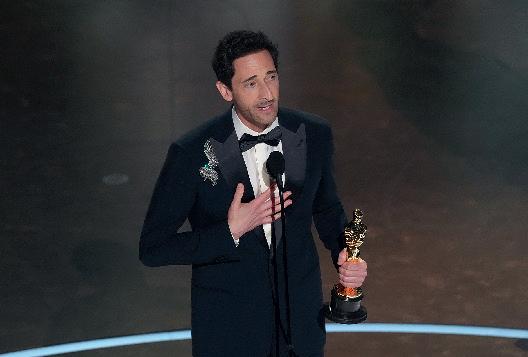
Wilf Smith writes on his hopes for the uncertain future of the beloved franchise

IADMIT with a heavy heart that Marvel remains the current cesspool of cinema.
Despite Deadpool & Wolverine making a decent splash last summer, superhero fatigue, strikes and production issues resulted in a relatively unimpressive 2024. However, disturbing this blissful tranquillity is the backlog of garbled, mismatched, gutter projects set to descend this year. Marvel’s plan for 2025 seems to entail finally flushing out the last dejected remnants of their so-called Phase 5 storyline.
While I would prefer these to never see the light of day, I understand the need to recuperate some profit. Kicking off the year with an own-goal, Captain America: Brave New World becomes the latest film to join the disastrous wreckage pile. Credit where credit is due, nobody expected much from this film, very marginal hype was generated, and yet Marvel still managed to disappoint. Their next project, Thunderbolts , is Marvels attempt at the Suicide Squad — only without the violence, swearing, charisma or engaging storylines. Lacking any redeeming creative risks, it is directed by the same genius visionary who gave us Black Widow


GAs Marvel continues to channel its efforts into Disney+, this is worth a quick exploration. Surprisingly, 2025 got off to a good start here with the release of Daredevil: Born Again . This unique, dark and raw production is far from perfect in many ways, but substantially more gripping than anything I have watched from Marvel in recent years. Unfortunately, this trend does not continue. Ironheart premieres in June but any shred of naïve hope I have is cancelled out by the fact that this show has been in the pipeline for over two years. As it has been subject to more rewrites than my Hinge profile, I am predicting it to be just as unsuccessful.

[THUNDERBOLTS] HAS BEEN SUBJECT TO MORE REWRITES THAN MY HINGE PROFILE, I AM PREDICTING IT TO BE JUST AS UNSUCCESSFUL
The biggest release of the bunch, The Fantastic Four , is meant to usher in Phase 6 at the end of the year. This certainly has the potential to be a solid diversification of the storyline but also feels like a movie that comes decades too late. My thoughts on this film are voiced best by the original director of the film, Jon Watts, who backed out because he


couldn’t take any more superhero movies. Is there a solution for Marvel? Of course. There is a dire necessity for a future rebrand where the style of Marvel heavily adapts. The franchise must demonstrate more realistic and complex superhero content that showcases clear passion and direction. My advice would be to abandon the irritating and overused multiverse storyline, dispense with their Disney+ obsession, stop relying on actors like Robert Downey Jr to make up for a lack of creativity, and concentrate on developing some form of coherent, compelling narrative for Phase 6. The path is there, but who am I kidding? Even if the Marvel executives miraculously reform, there is a good chance nobody will be left that cares after what is gearing up to be yet another year of Marvel mediocrity.

THE PATH IS THERE, BUT WHO AM I KIDDING? EVEN IF THEY REFORM, THERE IS A GOOD CHANCE THERE WILL BE NOBODY LEFT WHO CARES
Charlie Williamson remembers one of Hollywood’s greatest actors
ENE Hackman, one of Hollywood’s most revered actors, has tragically passed away at 95, alongside his wife, Betsy Arakawa. Their deaths, initially investigated for carbon monoxide poisoning, were later confirmed as natural causes, with Hackman succumbing to cardiovascular disease and Arakawa to a rare respiratory illness. Born in 1930, Hackman’s journey to stardom was unconventional. Due to a turbulent upbringing, Hackman was moved around. Feeling disenfranchised as a teenager, he fraudulently enlisted in the Marine Corps at the age of 16. Following WWII, he was stationed in China, serving there for nearly five years but was consistently demoted due to a tempestuous personality and insubordinate attitude. Following his discharge from service in 1951, Hackman bounced around the country in various
employments, never settling. Eventually he befriended the likes of Robert Duvall and Dustin Hoffman, beginning his film career with a role in 1964’s Lilith. However, his breakout act came as a supporting role in 1967, with Bonnie and Clyde earning him an Oscar nomination for Best Supporting Actor, setting the stage for an extraordinary career to come. He won his first Academy Award for his role as Jimmy “Popeye” Doyle in The French Connection, redefining the action-thriller genre and cementing him as one of Hollywood’s most iconic ‘Tough Guys’. He delivered iconic performances in The Conversation (1974) and demonstrated his versatility as the sleazy Lex Luthor in 1978’s Superman. After various great roles, it was his portrayal as the ruthless Sheriff Daggett in 1992’s Unforgiven that won him a second Oscar. And later, he
BONG Joon-Ho is one of the best directors working today, however with no projects released since the extraordinary Parasite in 2019, the announcement of his newest film, Mickey 17, had both fans and critics eagerly anticipating what he had in store after a fairly lengthy break.
I was lucky enough to experience Mickey 17 on its opening day last Friday and I had a great time. Certainly at its best when Robert Pattinson fills the screen with an excellent dual performance, it is fantastic entertainment for the whole run time. Bong certainly does not hide it with his use of exaggerated caricatures and blatant satirical commentary, and the end product is a witty, selfaware flick, certainly much different to his usual nuanced work, but one that is equally effective.
The dinner scene is a real highlight and is a reflection of how brilliantly silly this film is. It encompasses the grand, face-on method that Bong chooses to tackle the subject material and its wider themes. Every moment in the
snow is especially enthralling, perhaps due to Pattinson’s intriguing performances, particularly the scenes shot in the cave and when the creepers all form into groups to confuse Marshall about where the mother creeper is located.
showcased his true comedic brilliance after the millennium in The Royal Tenenbaums (2001). However, Hackman bowed out from the industry in 2004, leaving behind a legacy of complex, deeply human characters, from flawed heroes to truly unforgettable villains. His influence has spanned generations, inspiring actors and filmmakers alike. Although gone, his art endures, solidifying his status as a true titan of cinema.

HIS INFLUENCE HAS SPANNED GENERATIONS, INSPIRING ACTORS AND FILMMAKERS ALIKE. ALTHOUGH GONE, HIS ART ENDURES...

It does, at times, give way to convenience and predictability more than creative storytelling, however. For example, using the communication device that somehow translated an entire new language within a matter of minutes to talk to the

creepers, felt pretty unbelievable and a bit of a cop-out in moving the narrative on. Also, the plot line of Timo and the secret drugs trade doesn’t really go anywhere which I found a bit strange too.
Of course, the comments on human expendability, the treatment of the environment and other life forms, and the potential tyranny that power can give you, are all so relevant in the modern climate. Mark Ruffalo’s character (Kenneth Marshall) is scarily similar to Donald Trump — the hats, the bullet grazing the face, the certain ideologies — it’s a frightening comparison. Overall then, this is an enjoyable ride with some great visuals, certainly not a masterpiece, but still a really fun sci-fi experience.

OVERALL THEN, THIS IS AN ENJOYABLE RIDE WITH SOME GREAT VISUALS, CERTAINLY NOT A MASTERPIECE, BUT STILL REALLY FUN
Poppy Jabelman discusses mental health through their poem — I don’t need therapy, I need a revolution
This poem contains discussion of mental health which may be triggering for some students
IDON’T need therapy; I need radical system change.
I need billionaires taxed, not slashed support for people barely getting by.
I don’t need therapy; I need institutions brave enough to call out hate speech within its walls.
I don’t need therapy; I need to be able to exist in a public space without paying a fee
I need nature on my doorstep.
I don’t have climate anxiety; I am having a rational response to an existential threat, that those in power refuse to act proportionately to.
I don’t need economic growth; I need ambitious reparations for the Global South Books, not bombs,
Subsidised trains, not budget friendly planes, I need healthcare, not a trigger-happy police force.
I need leaders who fight crimes against humanity, not excuse and fuel them.
Don’t tell me that the issue is in my head some kind of personal defect.
I am not going mad, and I will not be gaslit into thinking that the world we’re living in is conducive to collective wellbeing.
We don’t need bubble baths and face masks, We need to all have access to safe, warm homes,
With food on the table, without breaking our backs and still not making ends meet
To have time for those we love, and what brings us joy.
MWe need a revolution.
And until then, all the therapy and self-care in the world may treat our symptoms, but not the cause.
I am so grateful for therapy. It sustains me through my day-to-day, helps me make sense of my experiences.
I think everyone could benefit from it, and I wish it was more accessible.
But so much more than therapy, we need to live in a society that supports our needs.
A society that prioritises human wellbeing and planetary health over unstifled profit for the ludicrously rich.
So, until then, I will fight for revolution. For the lives of my siblings, near and far.
I will breathe deep and do what I can to not drown in grief, or burst into flames with anger I will use these to fuel me.
I will lick my wounds from life in an economy that wants me profitable, or dead.
I will go to therapy, process what the world throws my way.
And to maintain my sanity, I will create my own hope By taking direct action.
YOU may have stumbled upon this viral recipe for chicken pasta on the internet, as it rapidly became a popular trend that stole the hearts of many, thanks to how easy it is to make and because of its intriguing name. The main idea behind its name is that the pasta is supposedly so delicious that it could make the one who you cooked it for fall in love with you and want to marry you. Read on to find out what makes this dish so special and what the secret ingredients that will make you the most desirable person on the planet are.
Step 1:
Start by preparing the pasta. You can measure out one portion or two, if you plan to share the meal with someone special. Boil it in water until it reaches ‘al dente’ stage or cook it for longer if you prefer it to be softer.
Step 2:
Add spices to two medium sized chicken breasts, according to your preference. I recommend some salt and pepper, as well as a teaspoon of paprika to add some additional flavours to the meat. Don’t forget to mix in some flour to make it crispier.
Step 3:
Fry the chicken breasts until golden brown. Turn down the heat, but make sure you do so only when the meat is cooked. Cut into smaller pieces and start making the sauce.
Step 4:
To make the sauce, you will need two crushed cloves of garlic. Fry them in a pan and add 75 grams of sun-dried tomatoes, one teaspoon of thyme, half a teaspoon of oregano and chilli flakes if you’re feeling a bit spicy. Add 75 grams of spinach and cook until it becomes soft.
Step 5:
Add 170 grams of mascarpone to the pan and wait for it to melt down. Mix everything together and add some more spices. Add the pasta and some pasta water to make the sauce a little more watery. Add 50 grams of Parmesan cheese.
Step 6:
Serve to your crush or any other person that you want to have obsessing over you. I guarantee that the magical properties of this dish will help you succeed in your love conquests and that you will end up marrying the person that you shared this pasta with.
Agata Koralewska, Deputy Editor
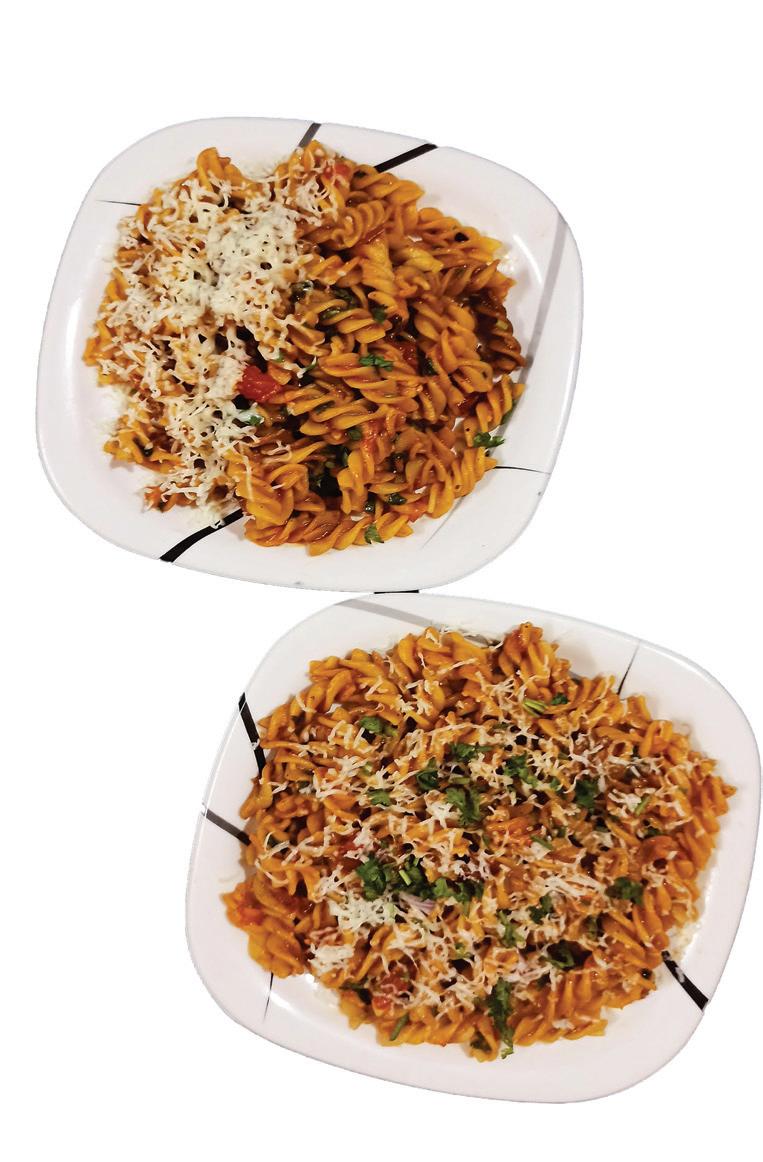
ARCH is Women’s History Month so it feels fitting to delve into the archives and look at the history of gender equality in Exeter. This article from October 2016 found through a Freedom of Information (FOI) Request that female staff members were expected to earn 21 per cent less than male counterparts. The FOI found that the gender pay gap for University staff members had a mean value of £8,476 in 2015/16.

University staff members had a mean value of £8,476 in 2015/16
These statistics are now almost a decade old so it’s easy to dismiss them as completely irrelevant. However, gender inequality continues to plague academia and universities more widely. As recently as 2024, the UCU predicted that the academic gender pay gap will take 40 years to close. Analysis of 156 universities in 2022-23 found the median pay gap between male and female employees was 11.3 per cent. In Exeter, data from March
A similar report from March 2016 by The University and College Union (UCU) ranked Exeter 30th in a league table of the UK’s top universities for gender pay gap discrepancies. Female academics were found to have an average salary of £41,821 £8,361 lower than male academics, meaning in 2016 they were set to earn 83.8 per cent of what male academics earned over the course of the year.
2023 showed that the median gender pay gap had reached 19.1 per cent including ad-hoc/ claims workers, 8.3 per cent including them.
There are numerous reasons for this, many of them are the same cited in the 2016 article. Academia is heavily gendered, built on hierarchy and increasingly run as a business, which can be damaging to gender equality in the industry. The most of ad-hoc/claims workers are female, pointing to a higher proportion of women in lower paid jobs. Whilst Exeter has made important strides since 2016, gender equality remains an issue that universities are constantly reckoning with and an ever-important focus of Exeposé’s coverage.
Amy Rushton, Editor-in-Chief



Across
1 Small songbird (4)
4 Model-making construction set — can come (anagram) (7)
8 Reads (parts of a book) at random (4,4)
9 20th-century UK Prime Minister (surname) (4)
10 Brittle metal — atomic number 27 (6)
11 Greatly amusing person (informal) (6)
13 Violent person (4)
15 Bar — staff (3)
17 Above — over (4)
18 Fleet of ships (6)
20 Round solid figure (6)
22 Sound-reproduction device, in short (4)
24 Intense desire (8)
25 Type of cycle relay race — daimons (anagram) (7)
26 Contest between two (4)

Down
2 I horn (anagram) — money (British slang) (5)
3 Affection for the past (9)
4 Criticise severely (informal) (7)
5 Traverse (5)
6 100 square metres — c. 120 square yards (3)
7 Culinary herb (7)
12 Abraded — red enough? (anagram) (9)
14 Great bravery (7)
16 Scorn — contempt (7)
19 Chasm (5)
21 Mountain chain (5)
23 Terminus (3)
23 End.

1. WHAT IS THE SECOND MOST ABUNDANT ELEMENT IN THE EARTH’S ATMOSPHERE?
WHO DIRECTED THE 1982 FILM BLADE RUNNER ? 3. WHAT IS THE CONFECTION THAT CONSISTS OF SUGAR OR HONEY AND ALMOND MEAL?
WHAT IS THE SMALLEST OCEAN ON EARTH?
5. WHO IS THE NEXT IN THE U.S. LINE OF SUCCESSION AFTER THE VICE PRESIDENT? 6. QUITO IS THE CAPITAL OF WHICH COUNTRY?
7. WHAT IS THE COMMON NAME FOR STONE CONSISTING OF JADEITE AND NEPHRITE?

INTERNATIONAL
EDITOR: Henry Anderson
Jed H. Gibbins
NORTH Korea has spent many years investing in nuclear power and weaponry with a desire to enhance their navy with powerful weapons and warships. On the 8th March, they unveiled a new nuclear powered strategic guided missile submarine. Following the firing of several ballistic missiles into the sea, the North Korean state media released images of their Supreme Leader, Kim Jong Un, visiting an undisclosed shipyard, where he was reported to have been photographed with the military submarine. If this report is correct, this would be the first instance of North Korea revealing any nuclear submarines. The country and its leader have expressed a long-term interest in increasing their nuclear power, and this weapon would be a huge step forward for them in terms of expanding their military potential. The vessel is estimated to weigh between 6,000 to 7,000 tons, and analysts believe it could be
used to launch ballistic and cruise missiles, a stark increase from their Soviet-era submarines used to transport spies. Furthermore, this would allow undetected missiles to reach the United States, unlike their previous diesel-powered submarines which relied on resurfacing to be frequently refuelled throughout their journey.

Moreover, this apparent unmasking of the submarine has spiked questions about both North Korean potential to be a much larger threat to global security and concerns about how they can afford to develop such a weapon. North Korea suffers with widespread starvation, and 60 per cent of its population live be -
Alow the poverty line. The UK plans to invest an estimated £36.7 billion on four nuclear submarines, evident that this is an incredibly expensive investment for North Korea. There are speculations surrounding Russian involvement in helping to develop these nuclear-powered submarines, especially due to North Korea providing aid to Russia in their conflict with Ukraine, where high-end Russian-developed technology may be traded for missiles and weapons. If North Korea really has developed large and powerful nuclear submarines, it will most likely be a threat for the US and their anti-submarine warfare missions. Furthermore, potential Russian involvement also exacerbates how powerful, and perhaps dangerous, this partnership could be.

S British people, we have the benefit that wherever we travel in the world, someone is likely to understand what we are saying — we speak what is currently the world’s Lingua Franca . But English did not always hold this position. So, what were the Lingua Francas before, and how did English end up taking their place?
The term Lingua Franca is believed to be from medieval times and was a jargon or pidgin language composed of French and Italian terms used by crusaders and traders in the eastern Mediterranean. It is said that the “Lingua” part came from the Italian for “language”, and the “Franca” portion as a word for western Europeans. Despite its romance language influence, it did also borrow heavily from other languages, such as Arabic.
There are other examples of Lingua Francas . Aramaic was used in southwest Asia as the common language between the seventh century BC and 650 AD. During the ‘Age of Exploration’, diplomats and traders communicated in Portuguese, along the costs of Africa and Asia, extending as far as Japan. Classical Latin too was used by European scholars until the 18th century. During the 17th and 18th centuries, the Lingua Franca in Eu-
rope moved from Latin to French. French became the language of royalty and the aristocracy, and diplomats hoping to work abroad were required to speak some of it. This is partly because of the Thirty Years War (1618-1635) and The Peace of Westphalia (1648). Thus, France cemented its position as a powerhouse of Europe, its influence spreading throughout the continent and gaining international prominence. Academics, diplomats and nobles all used French. France also set up one of the oldest language preservation institutions in the world, L’Académie Française , in 1635 which remains active to this day. It helped to regulate and standardise the language, aiding its spread. As France’s empire expanded, it took its language with it, sending it to Africa, Canada and the Caribbean. Many of these places still speak French today, or creolized versions (a language formed from contact between a European and native language) - especially in the Caribbean.

MFrance’s world dominance began to be challenged in the 18th and 19th centuries, with the rise of the British Empire. Spreading to cover a quarter of the globe, from the Americas to Africa and Oceania, English increasingly became the language of administration, trade and communication. Some scholars have argued that English was weaponised as a language to suppress and control local populations, utilised as a tool of cultural superiority. Others have said that it was simply an organic process due to British expansion — English was the language of the Empire, thus colonies adopted it. Either way, it was the rise of the US as a global superpower postWW2 that cemented English as the Lingua Franca . Now living in an increasingly globalised world, people take English as a second language hoping it will further their career and travel opportunities.
There are other modern Lingua Francas . Russian is often used throughout the post-Soviet bloc, because of its teaching to local populations under the USSR. In East Africa, Swahili is the common language, allowing communication in an area of the world with hundreds of languages.
ARCH is the hottest month in Valencia, quite literally. Fallas, Valencia’s celebration to commemorate St. Joseph, is a monthlong festival that originates from the tradition of carpenters burning pieces of wood that they used during the winter, upon the arrival of spring on the 19th March. The festivities last for just over two weeks and combine various elements of cultural expression and tradition.
Las fallas are sculptures made from wood and paper mâché that are designed by local artists and scattered around the city to be admired by the public and are burnt at the end of the festival on the 19th March, during what they call the cremà. They vary in sizes and there are hundreds of them, each designed with an intention to tell stories inspired by current affairs, with a satirical twist. Fallero art-
ists place their sculptures on the streets so that they can be admired by locals and tourists from around the world, before their later destruction. The beauty lays in the art’s short-lived presence in public spaces. They get limited time to tell their story and many falleros (artists) mourn them after the festival ends, as they poured their heart and soul into their design. Some other attractions that the festival offers are firework displays (mascletà) that take place every day at 14:00 in front of the City Hall. This includes dance groups that play music on main roads and parade around in traditional attire, or flower offerings to the Virgin Mary statue that stands in the Plaza de la Virgen. The latter involves groups of falleros putting flowers to decorate Mary’s dress to honour the patron saint of the city. It takes place on the 17th and
18th March and after the burning of all the fallas in Valencia, the patron’s figure remains there for a few more days, looking over the city as it resumes at its normal pace the morning after the festival ends. The magic that filled the air is suddenly gone, as if it never happened as authorities clean up the city at night.
I remember Fallas as a spectacular expression of Valencia’s identity and rich culture. I was surprised to notice that at every turn a new surprise awaited me, and I was shocked to see how easy it was to share those moments with the local community. I danced on the street, surrounded by little kids playing with firecrackers and I tried the real, Valencian paella (not the one that’s always pushed on tourists, together with an unauthentic cup of sangría). Fallas is undoubtedly worth experiencing as it’s different every year
and the atmosphere of the festival is unmatched.

Bella MacLusky, Features Editor, reports on the recent violence in Syria
THIS ARTICLE CONTAINS CONTENT RELATING TO VIOLENCE WHICH SOME READERS MAY FIND DISTRESSING
SINCE Assad was overthrown in December 2024, a new transitional government led by Ahmed al-Sharaa assured that religious minorities’ rights would be respected. However, the Alawite villages have suffered various revenge killings, concerningly written off as anomalies. While comparatively calm since December, planned attacks by Assad loyalists broke out on the 5th March 2025. This premeditated attack turned massacre is the fiercest confrontation in Syria since Assad was overthrown.

THE FIERCEST CONFRONTATION IN SYRIA SINCE ASSAD WAS OVERTHROWN
Up to 4000 Assad loyalists attacked various checkpoints along Syria’s coast, targeting cars, civilians and security forces. More than 111 people were initially reported dead, and this figure is continuously rising. Security forces fought back, pushing the loyal-
ists into to the countryside, though they continued killing and burning buildings. The conflict escalated as wholesale killings by security forces were reported, and some residents stated that Chechen fighters invaded homes. There are also reports of Syrian fighters rounding up and shooting Alawite men, including a 16-year-old boy. Dozens of unarmed civilians became victims. Both sides have contributed to the violence, with Assad loyalists killing over 300 people including majority civilians, and Syrian security forces killing nearly 400 people including disarmed fighters and civilians. The two factions responsible for most of the civilian deaths by the Syrian security forces were the Abu Amsha and Hamzat divisions.
Sharaa has vowed to hold the Assad regime loyalists accountable for the civilian deaths, and locate them. After the 13year civil war under Assad’s dictatorship, maintaining peace is crucial to Syria’s recovery and future. The BBC reported that these conflicts have led a young man to state that he no longer trusts the government and security forces, claiming “they’re all the same… they do whatever they want.” While many civilians may stay silent about their reservations, after this violent upheaval, government support is sure to have weakened.

Isabella van der Putten, News Editor, discusses the Netherland’s position on the glass-ceiling index
THE Glass-Ceiling Index, published annually by The Economist, assesses gender equality in the workplace across 29 OECD countries. Higher-ranking nations provide better opportunities for women, while those lower on the list struggle with barriers that limit career progression. The Netherlands has improved from 24th place in 2016 to 21st in 2024. However, this slight increase does not indicate substantial progress, and the country remains below the OECD average in workplace gender equality.

THE NETHERLANDS HAS IMPROVED FROM 24TH PLACE IN 2016 TO 21ST IN 2024
One of the biggest challenges facing women in the Dutch workforce is the high part-time employment rate. 63 per cent of employed women work part-time, compared to only 23 per cent of men, making this the largest gender disparity among OECD countries. This widespread part-time work culture limits career growth, lowers lifetime earnings, and contributes to a persistent gender wage gap, which remains at 14.8 per cent less than men. Despite women in the Netherlands achieving high-
er education levels than men, they remain underrepresented in leadership careers. In 2024, women had a tertiary education attainment rate 3.3 percentage points higher than men, yet only 33 per cent of GMAT testtakers were female. This suggests that despite being well-educated, women are not advancing into business leadership roles at the same rate as men. Corporate and political leadership representation has improved, with women holding 39.9 per cent of board seats and 38.7 per cent of parliamentary seats. However, only 28.8 per cent of managerial positions are occupied by women, indicating that career progression remains challenging.
Childcare affordability continues to be a barrier for women in the workforce. While maternity leave has increased to 22.3 weeks and paternity leave has risen to 11.3 weeks, childcare remains expensive, costing families around 25 per cent of the average wage. This financial burden discourages full-time employment and reinforces the cycle of part-time work for women.
Although the Netherlands has made some progress, slow improvements in workforce participation, pay equity, and managerial representation suggest it risks falling behind other OECD countries. Spain and Portugal have made greater strides in gender equality, and Nordic nations continue to lead due to stronger workplace policies.
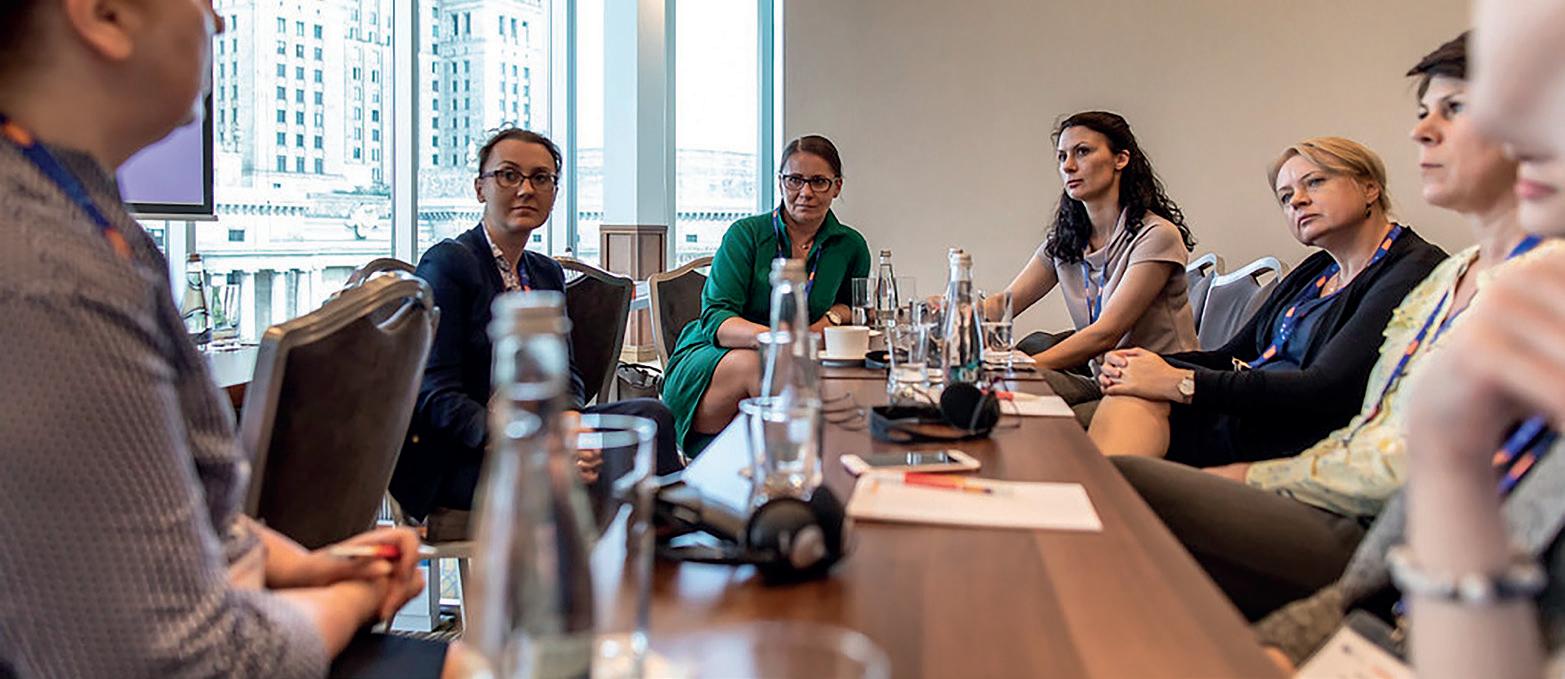
Isabella van der Putten, Redacteur Printnieuws, bespreekt de positie van Nederland op de glass-ceiling index.
DE Glass-Ceiling Index, jaarlijks gepubliceerd door The Economist, beoordeelt gendergelijkheid op de werkvloer in 29 OESO-landen. Hoger gerangschikte landen bieden betere kansen voor vrouwen, terwijl landen lager op de lijst worstelen met barrières die carrièregroei beperken. Nederland is geklommen van de 24e plaats in 2016 naar de 21e plaats in 2024. Deze lichte stijging duidt echter niet op substantiële vooruitgang en het land blijft onder het OESOgemiddelde op het gebied van gen dergelijkheid op de werkvloer.

Eén van de grootste uitdagingen voor vrou wen op de Neder landse arbeidsmarkt is het hoge percentage deeltijdwerk. 63 Procent van de werkende vrouwen werkt in deeltijd, vergeleken met slechts 23 procent van de mannen, wat dit de grootste genderongelijkheid onder de OESOlanden maakt. Deze wijdverspreide deeltijd werkcultuur beperkt de car rièregroei, verlaagt het levensloop inkomen en draagt bij aan een aanhoudende loonkloof tussen mannen en vrouwen, die 14,8 procent in het nadeel van vrouwen uitvalt.
Ondanks dat vrouwen in Nederland een hoger opleidingsniveau bereiken dan mannen, blijven ze ondervertegenwoordigd in leidinggevende posities. In 2024 hadden vrouwen een deelnamegraad in het hoger onderwijs die 3,3 procentpunt hoger was dan die van mannen, maar slechts 33 procent van GMAT-deelnemers was vrouw. Dit suggereert dat vrouwen, ondanks hun goede opleiding, niet in hetzelfde tempo als mannen doorgroeien naar leidinggevende posities in het bedrijfsleven. De vertegenwoordiging in het bedrijfsleven en de politiek is verbeterd, met vrouwen die 39,9 procent van de bestuurszetels en 38,7 procent van de parlementszetels bekleden. Echter, slechts 28,8 procent van de managementposities wordt vervuld door vrouwen, wat aangeeft dat carrièreontwikkeling een uitdaging blijft. De betaalbaarheid van kinderopvang blijft een belemmering voor vrouwen op de arbeidsmarkt. Hoewel het zwangerschapsverlof is verlengd naar 22,3 weken en het vaderschapsverlof naar 11,3 weken, blijft kinderopvang duur en kost het gezinnen ongeveer 25 procent van het gemiddelde loon. Deze financiële last ontmoedigt voltijdswerk en versterkt de cyclus van deeltijdwerk voor vrouwen. Hoewel Nederland enige vooruitgang heeft geboekt, suggereren de trage verbeteringen van arbeidsdeelname, loonrechtvaardigheid en vertegenwoordiging in managementfuncties dat het het risico loopt achter te blijven bij andere OESO-landen. Spanje en Portugal hebben grotere vooruitgang geboekt op het gebied van gendergelijkheid, en de Scandinavische landen blijven vooroplopen dankzij sterker werkplekbeleid..
FROM AI-crafted images of cats in space to deepfake war footage, artificial intelligence is reshaping creativity, but at what cost? Is AI a useful tool for artistic innovation, or a machine churning out profit from crisis and misinformation?
There have been numerous campaigns against the use of AI in creative fields such as the recent ‘Make It Fair’ campaign from UK artists, writers, and creatives who advocated for fair treatment against the impact of AI on the creative industries. Despite these campaigns, AI-generated content is rampant within online culture, with much of this content being humorous such as day-in-the-life videos for a peasant with the ‘dancing plague’. To many, AI is just another search engine enhancing productivity. However, to many in the creative industries, this rise of AI signifies the death of originality and human art.
As stated, AI-generated artwork has expanded creative possibilities, allowing for the instantaneous generation of artwork. Many artists have praised the positive elements of AI, stating it can inspire, make format -
ting much less time-consuming and provide greater accessibility to the arts. Despite this, an over-arching issue with AI, and the way by which it generates art, is the fact that it cannot generate new thoughts. AI is a learning-based software that draws upon past work as a source to generate new artwork. This alone puts human artists who produce music, artwork or writing at risk of having their work ‘stolen’ by AI. With these ‘new’ pieces of art predicated on existing work, debates over who owns AI-generated art remain unclear. What is clear is that artists are not being compensated. There are fears that as more AI-generated artwork is produced, AI models will begin to reference themselves when generating work, removing all the human influence that makes art unique. Alongside the issues of AI-generated profits being made from stolen artwork, there are much greater concerns regarding AI’s ability to produce profit from false news and political misinformation. Most recently, AI was used to depict Trump in the Gaza Strip which was stylised to de -
pict a Dubai-style paradise. While the creator of this video stated that it was ‘satire’, it is difficult to ignore the very serious implications of this video. Considering how Trump has spoken about ‘cleaning out’ the Gaza Strip after the ceasefire earlier this year, even satirical videos seem insensitive. Critics have argued that the use of AI in this instance has reinforced the issue of its accessibility, which when used inappropriately can have devastating consequences. With the creator’s video essentially suggesting that an ethnically cleansed Gaza could produce a gentrified city, it is hard to accept claims that this content was generated light-heartedly.

AI was used to depict Trump in the Gaza Strip, which was stylised to depict a Dubai-style paradise
This example is one of many instances of the misuse of AI, reinforcing the importance of determining some ethical guidelines to control the use of AI within crea -
AElla-Jade Smith
tive spaces. Many newspaper outlets have also expressed the necessity of implementing tighter restrictions on the use of generated content. However, with the expansion of AI now so widespread, the task of placing unilateral restrictions on its use seems impossible. Unhelpfully, the UK government has expressed hesitation on placing restrictions on AI, with the Government refusing to sign an international declaration at the AI summit in Paris earlier this year. The declaration's aim to "promote inclusive and sustainable AI" was widely accepted as a positive resolution. With the UK and the US as the only countries to not sign, many UK and US creatives expressed their disappointment with the government’s prerogative to protect the interests of tech giants over independent artists. It is undeniable that the advances of AI have benefited us all; whether AI is offering new tools for creativity or just helping to polish up our emails. However, the risks it poses, — threatening originality, spreading misinformation, and undermining artists’ rights — cannot be ignored.
Rosie Peters-McDonald, Deputy Editor, analyses
STUDY conducted by Pennsylvania State University (Penn State) has uncovered how Artificial Intelligence might be utilised in the mental healthcare industry as a way of better customising treatment plans for individuals diagnosed with Generalised Anxiety Disorder (GAD). 126 anonymous individuals took part in the study, which used machine learning to identify factors which point towards the recovery rate for people with GAD. Penn State identified that people with GAD "have a high relapse rate even after receiving treatment" and that "Artificial Intelligence (AI) models may help clinicians identify factors to predict long-term recovery and better personalize patient treatment," according to the university’s website. Candice Basterfield, lead study author and doctoral candidate at Penn State, added: "Prior research has shown a very high relapse rate in GAD, and there’s also limited accuracy in clinician judgment in predicting long-term outcomes. This research suggests that machine learning models show good accuracy, sensitivity and specificity in predicting who will and won’t recover
from GAD. These predictors of recovery could be really important for helping to create evidence-based, personalized treatments for long-term recovery." The study pointed towards multiple statistical factors which affect the likelihood of recovery and relapse in people with GAD. Penn State revealed that higher education level, older age, more friend support, higher waist-to-hip ratio, and higher positive affect, or feeling more cheerful, were the most relevant factors to GAD recovery. Low mood, everyday discrimination, more sessions with a mental health professional in the previous 12 months, and more visits to medical professionals in the previous 12 months were linked to ‘nonrecovery’ or relapse, on the other hand. Using AI algorithms to treat mental health disorders is a novel and controversial development in the healthcare industry. According to the mental health charity MIND, six per cent of people in England have a GAD diagnosis. This is based on a 2014 survey which excluded data from hospitals, prisons, sheltered housing and rough sleepers. The two most prevalent forms of treatment for mental health dis-
Without stronger regulation, AIgenerated content risks diluting human creativity and fuelling potentially greater ethical concerns. With our government hesitant to act, the fight for fair treatment in creative industries grows ever more urgent. SCI-TECH

how AI algorithms could assist anxiety treatment
orders in England are psychiatric medications and talking therapies, respectively. Penn State’s research has the potential to shed light on which of these methods — if either — are likely to be most effective for individuals, but it also risks oversimplifying mental health treatment.

The two most prevalent forms of treatement for mental health disorders in England are psychiatric medications and talking therapies
According to NHS England, as of April 2024, 10 per cent of people who are waiting for a second contact in Adult Community Mental Health services have been waiting at least 116 weeks, up from 100 weeks in December 2023. One might argue that introducing AI algorithms as a way of evaluating treatment methods could relieve some pressure in the mental healthcare sector, freeing up time and space for referrals and clinics. This does, however, put into question whether using AI might risk making the process less humane and personal, especially in an area
of healthcare which is so heavily reliant on high quality, personal communication between clinicians and patients. With research being relatively new and under-practised,
the question remains: is introducing AI diagnostic methods into GAD treatment plans worth the risk to patient wellbeing?

Agata Koralewska, Deputy Editor,
questions whether we have been barking up the wrong tree
NEW research suggests that we may have been misreading dog’s emotions and misinterpreting the nature of humananimal interactions in the wider context. A paper from Arizona State University has revealed that projecting our own feelings onto our dog’s emotions might be one of the reasons why we have been failing to fully grasp the complexities of animal behaviour. The study explores how we tend to assume what our pet is trying to communicate, based on the context of the interaction.

We may have been misreading dog’s emotions and misinterpreting the nature of humananimal interactions.
A practical experiment conducted by the researchers has demonstrated that people often rely on the situational context to determine their furry friend’s

emotional state. Videos of dogs in both positive and negative contexts were filmed. A positive video may have shown a dog being fed, while a negative video may have depicted someone vacuuming.
In one attempt at the experiment, people were shown videos of dog’s reactions with and without the background, to see
whether they interpreted the animal’s reactions differently. This experiment was conducted on a sample size of 383 participants. The experiment took it a step further and the videos were then edited so that the dog’s positive reaction was paired up with a negative situation and vice versa, with 485 people taking part.

We tend to simplify situations and misinterpret people’s feelings based on situational context.
The participants’ responses indicated that the dog was often reacting positively and was happy just because it was receiving treats on video. This phenomenon can be linked to human bias that assumes that dogs would have the same emotional reactions as humans. Human bias can complicate the communication process between humans too. We tend to simplify situations and misinterpret people’s feelings based on situational context, culture, mood or past facial expression. This anthropomorphising of canine interactions clouds human abilities to understand a dog’s true emotional state. For effective communication, especially with nonhuman creatures, we should attempt to mitigate this bias as it allows preconcep-
tions to enter the frame and can increase the likelihood of misinterpretation. Ultimately, man’s best friend can be better understood by building a stronger bond with the animal and ensuring to approach its emotions with care. Dog brains are believed to be equivalent to that of a two to two-and-a-half-year-old human, at least regarding their ability to process language and emotions. Keeping that in mind would help dog owners not underestimate their pets and what they might be trying to express.

Julia Szewczyk discusses what new AI developments mean for paralysed individuals, and whether thought alone could move the future development of assistive technology
MIND control of objects may seem like something out of your favourite sci-fi movie, but it’s closer to reality than you may think! In a recent breakthrough study, scientists were able to get a paralysed man to control a robotic arm using just his mind, a truly remarkable feat in the development of neuroprosthetics.

Scientists were able to get a paralysed man to control a robotic arm using just his mind
According to the WHO, there are approximately 15.4 million people worldwide currently living with a spinal cord injury, and therefore experience paralysis. For these individuals, the loss of independence can significantly decrease their quality of life and negatively impact their mental health. Researchers are thus working on developing prosthetics aimed at restoring their ability to perform basic tasks independently. As can be imagined, this has proved challenging due to the complex nature of the human brain and nervous system. Animal studies have previously shown that patterns of brain activity, which represent specific movements,
change over time as the animal learns.
Dr Ganguly, a researcher and professor of neurology, found that this phenomenon also applies to humans. A study was conducted on a man who was left paralysed after a stroke and was therefore unable to move or speak. Researchers asked the participant to imagine moving different parts of his body while tiny sensors implanted on the surface of his brain were used to pick up brain activity. Although he couldn’t move, the participant’s brain still produced signals for the imagined movement. A device known as a brain-computer interface (BCI) then used this information to record the brain’s representation of these movements. Researchers found that the location of the representations shifted slightly from day to day. Dr Ganguly theorised that this was the reason why BCIs only tended to work for a couple of days in previous research into neuroprosthetics, as the device was unable to adapt to these shifts.

Researchers are working to develop prosthetics aimed at restoring their ability to perform basic tasks independently
the University of California managed to get around this with the use of artificial intelligence to adjust the BCI to the shifts in movement representations. With the BCI relaying signals from the participant’s brain to a computer, they first trained the AI by imagining simple hand and finger movements in order to refine the system’s ability to decode their intentions. A simulated robotic arm was then used for the participant to practice accurately guiding the device in a virtual environment, before finally applying this to a physical robotic arm. He was successfully able to make the robotic arm pick up blocks, turn them, and move them to new locations, as well as perform some complex tasks like opening a cabinet, retrieving a cup, and positioning it under a water dispenser. With this assistance from AI, the BCI was able to work for a record of seven months. Even months later, after a 15-minute ‘tune-up’ to adjust to the shift of his movement representations, the participant was still able to control the robotic arm.

The participant’s brain still produced signals for the imagined movement
So what does this mean for the fu-
ture of assistive technology? Professor Ganguly is now working on refining the AI models to make the robotic arm move faster and more smoothly. He also has plans to test the BCI in a home environment and is confident that this technology is the future of neuroprosthetics, saying, “This blending of learning between humans and AI is the next phase for these brain-computer interfaces.” With continued advancements, BCIs may one day offer individuals with paralysis a level of independence that was once unimaginable.
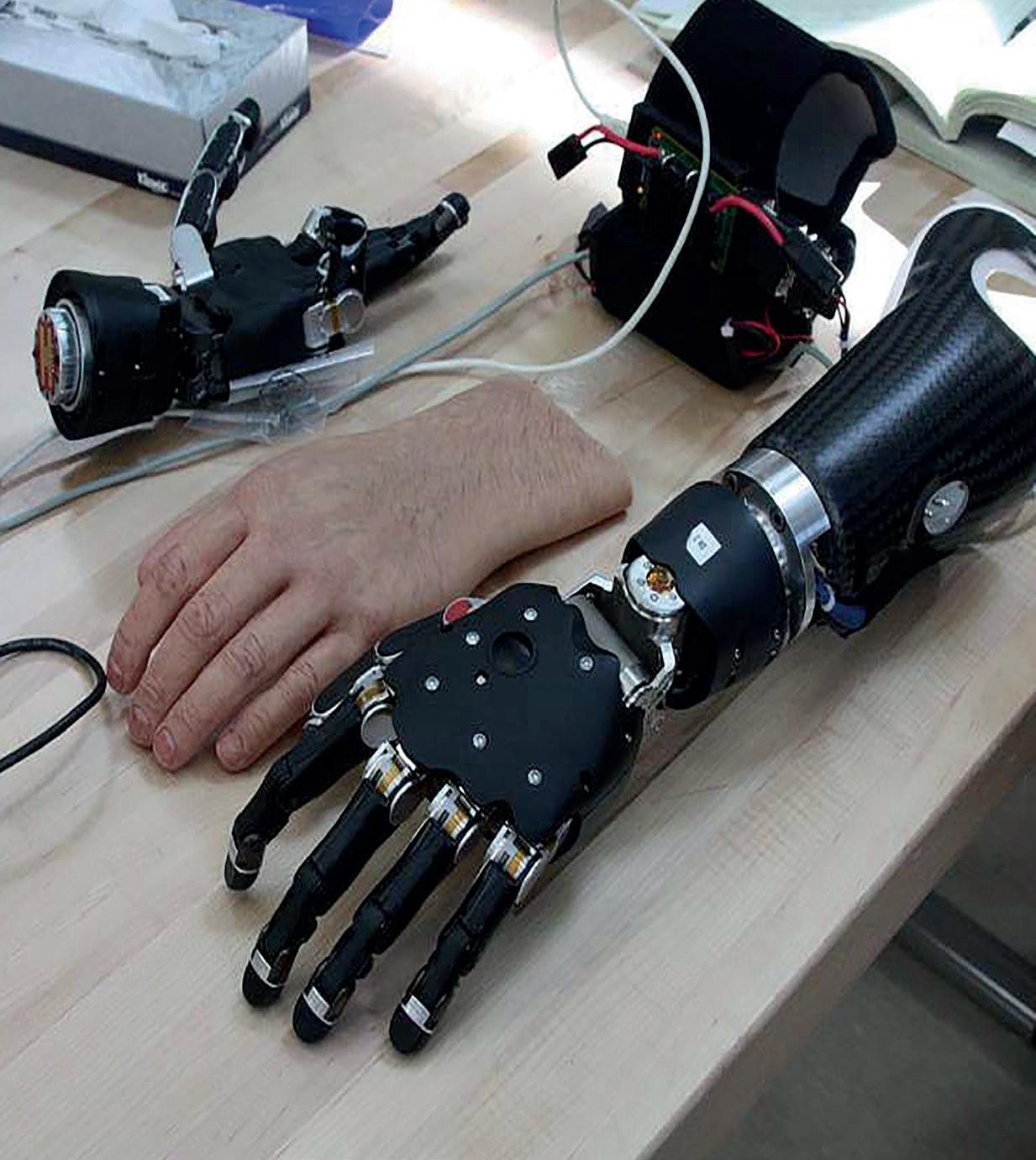
Ceri Vaughan-Jones reviews Mcllroy's St. Patrick's Day win at
RORY McIlroy brought Irish cheer to TPC Sawgrass, overcoming JJ Spaun in a three-hole play-off on St. Patrick’s Day — his 'good-luck charm.'
The finale of the 2025 Players Championship had been moved to the Monday following a four-hour delay due to an electrical storm during the final round in Ponte Vedra Beach, Florida.
The Northern Irishman had started Sunday four shots behind Spaun, who held the 54-hole lead at -12 following rounds of 66, 68 and 70.
McIlroy was quick out of the blocks with a birdie-eagle start, moving him within one shot of the lead. After the turn, back-to-back birdies on 11 and 12, as well as three Spaun bogeys on 5, 8 and 11, saw McIlroy with a three-shot lead.
With victory well within his grasp, McIlroy once again showed that there is a slight vulnerability to his game in the decisive moments. Bogey on 14, followed by two missed birdie opportunities on 15 and 16, meant that, as he admits, he failed to “close the door and win this golf tournament.”
As McIlroy carded a four-under final-round of 68 to take the clubhouse lead, Spaun’s brilliant birdies on 14 and 16 set up a tense finish; both players were tied at 12 under par. The American had a 30-foot putt on the last to clinch only his second PGA tour title, but his effort stopped agonisingly short. Another roll or two and the story would have been completely different. While the end of round four was extremely tight, Monday’s play-off was
anything but. Showing his experience, McIlroy stamped his authority with a huge drive down 16, setting up a routine birdie. Spaun, however, in his first tour playoff appearance, made a scrappy par before disaster ensued on 17. Tasked with the iconic island green, his ball sailed over the back and into the water. Triple bogey meant that the world number 57’s dream was over, allowing McIlroy to scramble his way down 18 stress-free. Having also won the AT&T Pebble Beach Pro-Am last month, this is the first time McIlroy has won twice on the PGA Tour before the Masters in April. This was the 28th PGA Tour win of his career and his second Players title, the most prestigious event outside of the four annual majors. After his initial victory in 2019, he becomes the first European to win multiple Players Championships.

With next month’s Masters at Augusta National just around the corner, this was the perfect set-up in the world number two’s pursuit of a career Grand Slam. 11 years on from the most recent of his four major titles, could this finally

This was the perfect set-up of a career grand
Bella MacLusky, Features Editor, details an inspiring event celebrating women in sport in Exeter
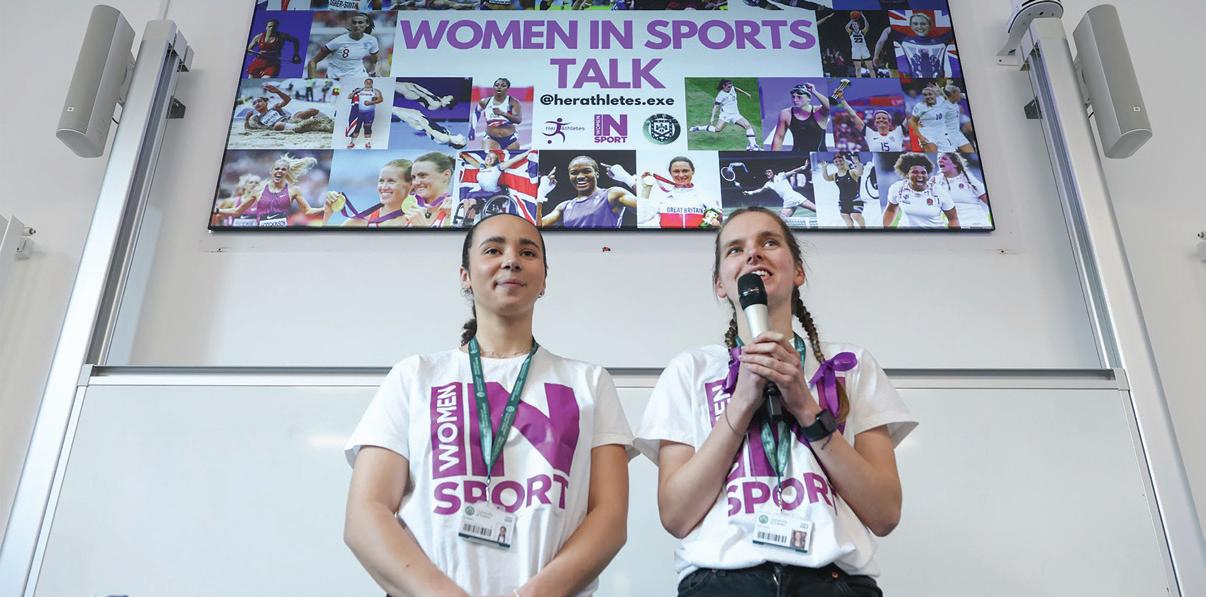
ON the 3rd March, St. Luke’s campus hosted the Women in Sport event, which aimed to highlight the challenges of the women’s sporting world. They raised over £800 for Women in Sport, a charity which advocates for women’s sporting rights. Positive psychology practitioner Elle Mace, professional triathlete and Iron Man 70.3 champion Lizzie Rayner, and Exeter Chiefs professional rugby
TBen Scott, Sport Editor, analyses
HE 2025 NFL off-season is well underway, with the free agency period officially opening on the 12th March at 4:00 p.m. ET. Teams have wasted no time reshaping their rosters through blockbuster trades, major signings, and high-profile departures. While some franchises have strengthened their Super Bowl chances, others face uncertainty as they navigate salary cap constraints and roster holes.

Teams have wasted no time reshaping their rosters
The Chicago Bears have made a strong statement under new head coach Ben Johnson, prioritising offensive line improvements to support quarter-
back Caleb Williams. The acquisitions of guards Joe Thuney and Jonah Jackson, along with centre Drew Dalman, should help Williams, who was sacked a league-high 68 times last season.
Elsewhere, the New York Jets have shifted direction at quarterback by signing Justin Fields to a two-year, $40 million contract. Fields, still just 26, gets a fresh start in an offence featuring Garrett Wilson and Breece Hall. Meanwhile, Washington continues its aggressive roster overhaul, trading for left tackle Laremy Tunsil and wide receiver Deebo Samuel, reinforcing their status as serious NFC contenders.
Several other key moves have also shaped the landscape: the Rams added wide receiver Davante Adams, the Vikings bolstered their defensive front with Jonathan Allen, and the Patriots made a
player Poppy Leitch gave inspiring talks, followed by audience questions.
Attendees stated “I was far more engaged with all of the discussion points than I ever expected.” Feedback repeated that it was “a really impressive event… Speakers were interesting and had varied perspectives particularly team versus individual sports.” A particular highlight was Elle Mace’s insightful talk on body-image.
While social media has increased eating-disorder awareness, it remains a prevalent issue. Moreover, Ellie Mace said that “the audience was incredibly engaged and interactive.” Poppy Leitch highlighted the gender equality gap in sports, and
the challenges of women’s rugby.
Lizzie Rayner was particularly inspiring and motivating and said she “was reminded of the stark contrast between women’s rugby and triathlon in terms of gender equality and it made me feel so grateful to be in a sport that has such equal opportunities on both sides.”
Georgia Cornish led the panel excellently, asking thought-provoking questions. Moreover, it was incredibly powerful to connect such exemplary sportswomen. While at university, it sometimes feels like women’s sport receives less esteem and attention when compared to the men’s sports. However, this
event serves as a reminder of the importance of women’s sport, and what a brilliant community it creates.

The audience was incredibly engaged and interactive
Afterwards, there was the opportunity to ask questions and mingle. This was a highpoint, as it gave the opportunity to come together as a community. The event cast light upon women’s issues, celebrated women’s wins, and raised money for an amazing charity.
statement signing defensive tackle Milton Williams on a record-breaking deal. Among the best signings, Davante Adams joining the Rams stands out. The veteran receiver will form a lethal pairing with Puka Nacua, giving Matthew Stafford a top-tier target. The Buccaneers’ one-year, $14 million deal for pass rusher Haason Reddick is another smart investment, adding an elite disruptor to their defensive front. On the other hand, some deals have raised eyebrows. The Titans’ decision to hand tackle Dan Moore Jr. a four-year, $82 million contract seems a major gamble given his struggles in pass protection. Similarly, Washington’s three-year, $45 million contract for defensive lineman Javon Kinlaw is a risk, considering his history of injuries and inconsistent production.

Several teams still have glaring holes to fill. The Bengals need an edge rusher, especially if Trey Hendrickson leaves.
The Browns are still seeking a quarterback, with Russell Wilson or Joe Flacco as potential stopgaps. The Bears require more depth at defensive tackle, while the Lions and Eagles need reinforcements
at edge rusher and safety, respectively. Meanwhile, the Giants remain desperate to solve their quarterback situation, with Aaron Rodgers’s decision looming large. With months left in the offseason, expect further trades, signings, and draft manoeuvres to reshape the league before September.

THE last time a British driver in a McLaren won the Australian Grand Prix, a reigning world champion from Red Bull duly finished in second by a small margin: sound familiar? 2012 was one of the sports most competitive seasons and 2025 seems to be a similar story, but McLaren are
Esurely the ones to beat. While their car can suffer from aerodynamic instability, the calm weather of Saturday helped Piastri and Norris to lock out the front row, while the heavens opening on Sunday neutralised any other problems the Woking-based outfit might have had.
While Norris took the second hat-
trick of his career (achieving the race win, fastest lap, and pole position), it was far from easy. Piastri, who has recently signed a multi-year deal with McLaren, was matching the Briton lap by lap, and it was only an unfortunate bout of mowing the grass at the final turn that plunged the young Australian down the order. Verstappen picked up the pieces on a day where he was like a duck to water, comfortably seeing off threats from thirdplaced Russell. Antonelli, who suffered a lacklustre qualifying, redeemed himself in the race with a stellar drive to take fourth place — originally, he was penalised back to fifth because of a five-second penalty (unsafe release from pit), which was later successfully appealed by Mercedes — and narrowly beat the star of the show, Alex Albon. Williams are well and truly back, with Sainz showing good pace until he crashed out, and even then,
the Spaniard was integral in advising Albon's subsequent strategy, which helped him, and the team achieve such a good haul of points. It was also a good day for Hulkenberg in the Sauber: seventh place means a difficult season for the team has been made a tad easier by capitalising on the chaos of the opening round.
Indeed, attrition was high, with many of the rookies floundering: Doohan, Lawson, and Hadjar all suffered retirements, while Bearman managed to keep it on the road on race day, presumably because he’d got his crashes out of the way the previous day. Ordained “rookie” Fernando Alonso also crashed, leaving his much-derided teammate in Lance Stroll to somehow take sixth place: is there a good driver beneath the idiotic inconsistency?
Idiotic inconsistency seems to be the buzzword back at Maranello too, in what is a disappointing debut for Ham-
ilton. Hoping to follow in the footsteps of Mansell, Irvine, and Brooks, he found himself down in 10th, miles away from the podium. A crumb of comfort would be that his teammate, Leclerc, could only manage eighth. While the Tifosi won’t be in uproar just yet, Ferrari need to unlock some pace fast, and considering the races are coming thick and fast, if problems are found it’s unlikely they’ll be fixed any earlier than the European stretch of the season.

Idiot inconsistency seems to be the buzzword
So, McLaren on top, Williams in the mix, and Ferrari floundering: all ingredients for a very entertaining season.
DDIE Jordan, who died on the 20th March 2025 at the age of 76, was the unrivalled rockstar of Formula 1. As the custodian of Jordan Grand Prix, he oversaw those famous, yellow-liveried cars through their greatest triumphs, such as Damon Hill’s maiden win for the team, Heinz-Harald Frentzen’s championship charge in 1999, and Giancarlo Fisichella’s final victory for the team at the 2003 Brazilian Grand Prix. Despite the peaks of the team's success being all
too brief, its legacy lives on through its successor teams, currently Aston Martin. Born in Ireland in 1948, Jordan achieved junior success in karts and lower formulas, winning the Irish National Title in 1978. Honing his sales skills during the week before racing during the weekend, he made the move to England but found his real talents lay not in driving, but management. Eddie Jordan Racing achieved success in lower formulas with the likes of Martin Brundle, Johnny Herbert, and
Jean Alesi. Understandably, Jordan took the leap to the big leagues in 1991: he christened F1 “the piranha club”, and with good reason. Jordan never let the club get the better of him the team were major players in the late 90s, and Jordan’s business deals made him a millionaire, such as selling shares in the team (then buying them back a year later for a tidy profit).
Upon selling the team in 2005, Jordan remained active in the paddock as a journalist and commentator for various broadcast-
ers, always retaining his easy-going charm and humour, as well as being known for riding to and from the paddock on his bicycle. He remained involved in management too, orchestrating Adrian Newey’s move to Aston Martin. It’s fitting that Eddie Jordan lived and breathed Formula 1, right to the very end. He is survived by his wife, Marie, and four chil dren, to whom we send our condolences.

Amy Rushton, Editor-in-Chief, discusses how the F1 TV series portrays accusations of harrassment as gossip
NETFLIX'S Drive to Survive, the F1 documentary series known for toeing the line between sport and reality TV, debuted a new season earlier this month and its emphasis on drama over substance has never been more apparent.
One of the main questions in the build-up to their seventh season, was how Netflix was going to tackle an independent
investigation by Red Bull into allegations of misconduct against their Principal, Christian Horner, by a female team member.
Horner was cleared of wrongdoing in February 2024, just before the first Grand Prix of the season in Bahrain, but the drama didn’t stop there — in emails sent to team principals and F1 journalists, leaked WhatsApp messages, allegedly between Horner and a female colleague,

pointed to workplace misconduct and harassment. In the opening episode of Drive to Survive, as journalists peddled theories on the future of Red Bull, Horner victimised himself, telling Netflix “"It was obviously premeditated to cause me the maximum amount of distraction, the maximum amount of aggravation." Horner’s unchallenged claims that the allegations were a conspiracy to tear the team apart slotted neatly into Drive to Survive’s Red Bull narrative, focused on Horner as the beleaguered cartoon-villain of the grid facing off desperate attempts by other team principals to end his long-running dominance. This amplification of the drama is exactly what makes Drive to Survive so addictive — and controversial. I was once trying to explain to my F1 purist housemate why I loved the show and could only come up with it scratching the same itch in my brain that reality TV does — and therein lies the problem. From endless TikTok edits to accusation of fabricating plot lines,
Drive to Survive has become as much about the scandal as the racing and whilst it’s a great form of light entertainment, where genuine issues in the sport emerge the show doesn’t know how to tackle them. Drive to Survive has forgotten that there actually is a difference between hyped-up drama and genuine controversy. A key voice is shut out of this narrative — for the women who work in F1 it seems as though their safety doesn’t matter and is dismissed as gossip and scandal getting in the way of racing. Rather than prompting serious conversations about the prevalence of misogyny in motorsports and how to support women in a male-dominated field, the allegations acted as fodder for Drive to Survive drama, disappearing from mention after the first episode. It’s not surprising that Drive to Survive is reluctant to tackle serious issues in F1 — the motorsport industry avoids them too. Whilst important strides have been made in recent years — the 2025 season
for instance is the first with a female Race Engineer in Haas’s Laura Mueller — F1 remains a toxic place for women. From comments made by Team Principals, such as Horner’s claim that women were drawn to F1 because of attractive drivers, to the lack of opportunities offered to the allfemale competitors of F1 Academy, F1 unquestionably has a women problem.

Difference between hyped up drama and genuine controversy
Drive to Survive had an opportunity to open up a conversation on the experiences of women in the sport, but instead their concerns were brushed over as gossip. Whilst Netflix may have been credited for getting women into F1, if it fails to confront genuine issues in the industry, it risks turning them away.
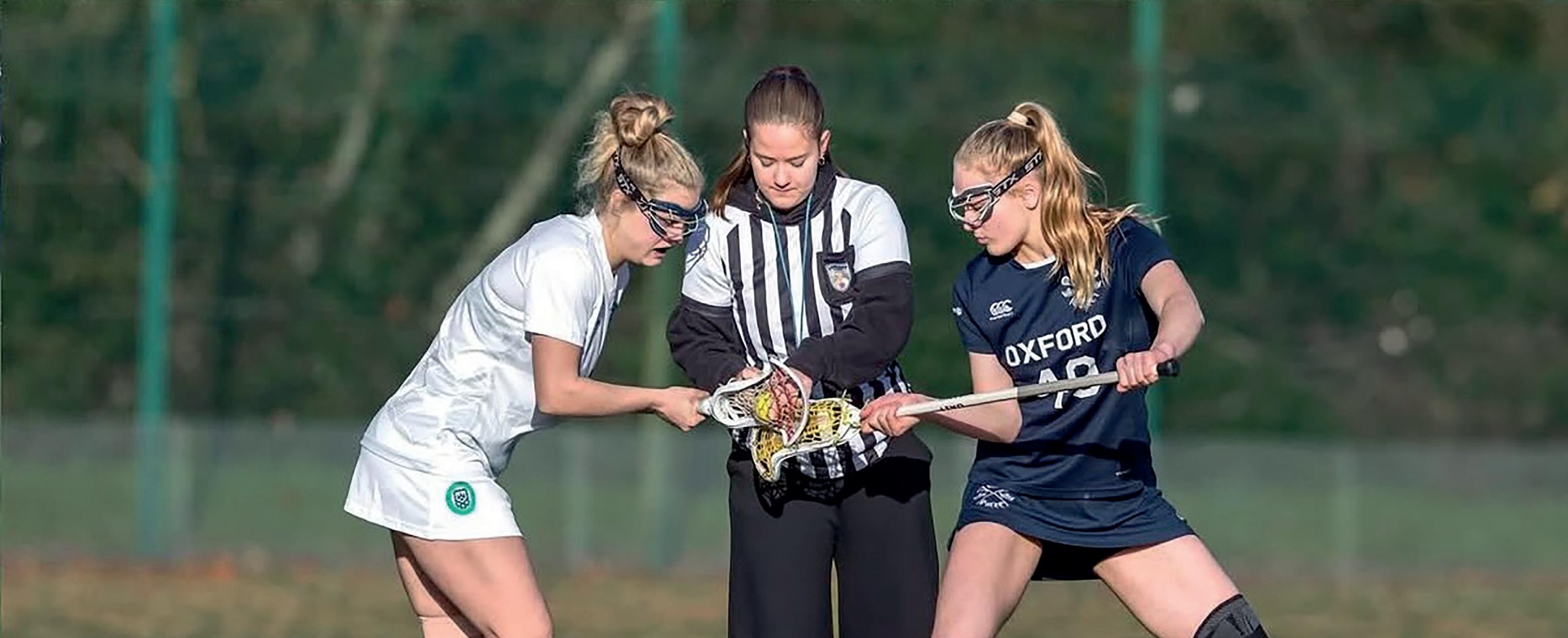
EXETER’S reputation as one of the UK’s top performing universities in sport still rings true in this 2024/2025 campaign. For the last two seasons, the University of Exeter has finished the BUCS league positioned fourth, always just shy of the 5000 points mark. With the second semester starting to come to an end, let’s look back at some of the recent fixtures, conferences, and large national events.
A few weeks ago, in what was week 20 of the BUCS league, the University of Exeter competed in the Conference Cup. Taking place on the 5th March, Exeter was represented by 10 teams, equating to 80 Exeter studentathletes. The teams headed to Bath for
what turned out to be a hugely successful trip; with four silvers and five golds! Golf Mixed 4, Hockey Women’s 5, Hockey Men’s 6, and Table Tennis all brought home silver medals.
Lacrosse Wom en’s 5, Squash
Men’s 1, Tennis Fast 4
Women’s 1 and Men’s 1 and Tennis Women’s 5 took home the gold. Back on home turf in week 20, other teams felt the same success, with wins in Rugby Union, Ultimate Frisbee, Volleyball and Futsal fixtures. The Men 6s for Rugby Union put in an extremely strong
shift on that Wednesday in particular, with a 41-3 win against Bristol 3s.
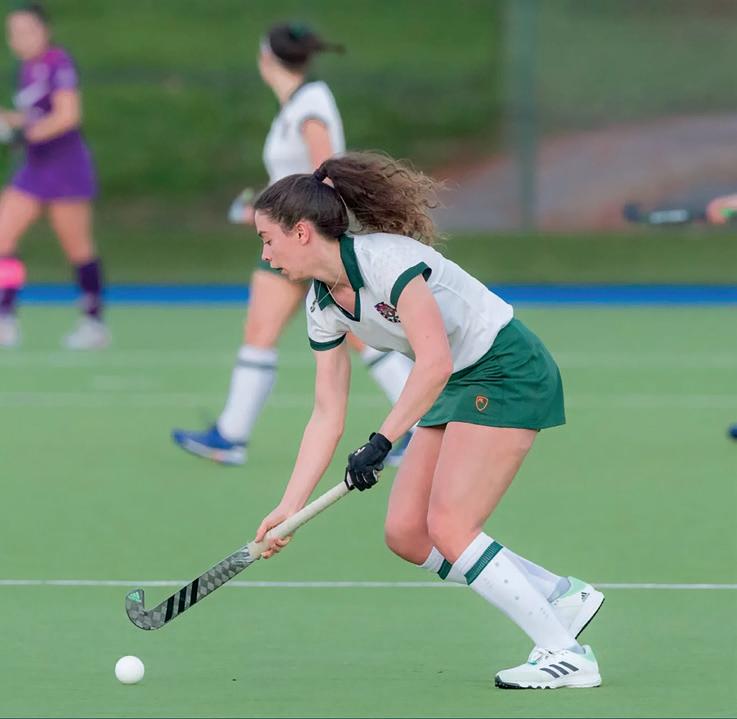
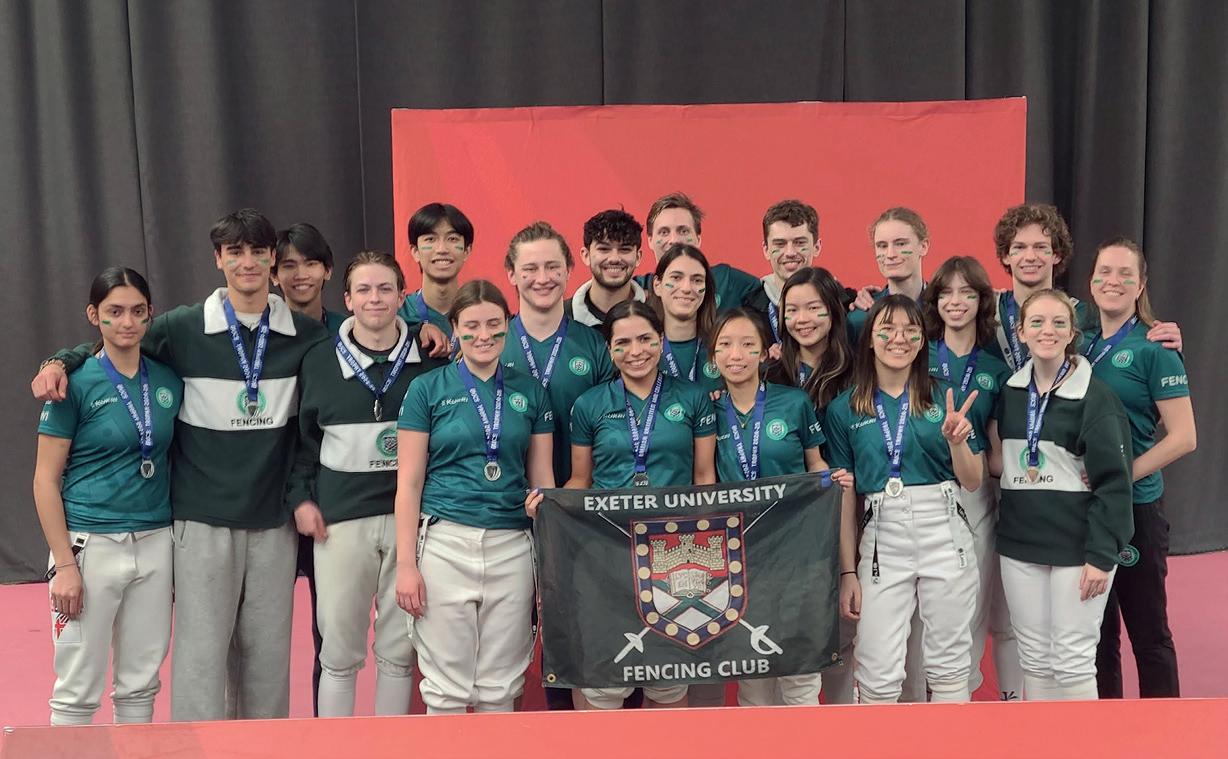
This set Exeter in good stead for weeks to come, but most importantly, it placed many into the right mindset heading into the Big BUCS Wednesday event held in week 22. This event is reserved for only the very best in the nation. Despite weekly university sports teams taking part in BUCS leagues, this event showcases elite student sport, with over 2000 student-athletes having made the journey to Loughborough on the 18th march to compete. The event was split into Championship, Trophy, and Vase Cup.
There were 16 league sports and nearly 60 fixtures played that day, with sports from American football to squash to volleyball all competing. Spanning rubber crumb and sandbased pitches, to stadiums and indoor halls and courts, the teams battled it out to be crowned national champions.
For Exeter, it was a mixed bag of results.
Both the Lacrosse Women’s 1s and 2s are undefeated league winners. The women’s 1s bounced back
in the semi-final to win 7-6 and get into the finals. The 2s had a glorious moment in the sunshine at the Big BUCS Wednesday as they were crowned champions and lifted the trophy as a team — they managed to retain their gold from last year too!
The 2s beat their opponents Durham 11-8 to take home the Women’s Lacrosse National Trophy. The 1s however faced defeat against Nottingham 1s who retained their Championship Trophy from the previous campaign.

For Exeter, it was a mixed bag of results
Fencing Men’s 1s and Women’s 1s both came second after a very close call to snatching the win. The men’s trophy was handed to Nottingham 2s after they won 128-118. Similarly, Birmingham took home the Women’s trophy after a 135-109 victory against Exeter. Despite the joint losses, student-athlete, Tom Raut, commented that it was still a “wonderful ending to [his] university BUCS career” as this marked the final match of the 24/25 season. He continued: “everyone played their part getting us here and coming second place is a testament to that! It’s always a challenge performing in front of a crowd, but we all stayed level-headed and that showed when winning the sa -
bre with some entertaining points.”
The Fencing Women’s 1s are undefeated league winners that defeated Warwick 129-110 in the semi-finals to earn a place in the Trophy Cup. The Men’s 1s finished second in their league and had an emphatic win in the semi-final against Imperial 2s where they won another tight game that ended 119-113 to the home side.
In Hockey, the Women’s 3s went head-to-head with Durham 3s during the morning session of the event as part of the Women’s Trophy, sadly ending in a 2-0 defeat. This came as a surprise, after the W3s have shown strength after becoming league winners and scoring over 25 goals across the campaign.
The Open Water Polo 1s squad looked strong to face Loughborough on their opponent’s turf after an unbeaten season and domination in the league.

both the Lacrosse Women’s 1s and 2s are undefeated league winners
Currently, Exeter sit in fourth place in the BUCS league at 4308.5. With many sports competitions coming to an end this month, we wait to see if the remaining playing teams can push Exeter out of their stagnated spot and challenge the current top three of Durham, Loughborough and Nottingham.